
RIFIJI, SELOUS, TANZANIA, 4 MARCH 2013: Yusuf Shabani Difika, 41, lost both his arms to a lion attack on a fishing trip in the region of Selous National Park, Tanzania, 4 March 2013. The attack occured in the evening in 2005. The lion attacked Yusuf and his arms were shredded beyond recovery as he attempted to fend off the lion. He says the lion bit him multiple times on his arms, exposing his bones and ripping off the flesh. Yusuf was rescued by village friends who drove the lion off with sticks and machettes. Yusuf was rushed to a local clinic and then transported to a hospital where doctors had no choice but to amputate what was left of his arms. Yusuf has two children, aged 5 and 3, he has lost the ability to work and is entirely reliant on his father, his uncle and his cousins as well as the kindness of his village for his survival. He says the hardest thing is that he cannot clean himself or go to the bathroom without assistance. His uncle bathes him on a regular basis and his father and cousins help him to dress, eat and drink. Lion attacks on the rural people who farm close to Selous National Park are not uncommon. There is a degree of hypocrisy to the West's expectation that these people should live with lions as if there is no danger. They do not benefit from the wildlife in Selous and they live in danger as there are no fences to the Park and the range of the lions often extends outside of the park. They are especially in vulnerable during the harvest period. Wild Bush pigs are attracted by young maize and rice crops and so people sleep in their fields in order to protect their crops. They are especially exposed to lion attacks at this time. The lions are attracted to the bushpig presence, the pigs are hard to catch and the human beings are close at hand and completely vulnerable and easy to subdue. (Photo by Brent Stirton/Reportage for National Geographic Magazine.)

RIFIJI, SELOUS, TANZANIA, 4 MARCH 2013: Yusuf Shabani Difika, 41, lost both his arms to a lion attack on a fishing trip in the region of Selous National Park, Tanzania, 4 March 2013. The attack occured in the evening in 2005. The lion attacked Yusuf and his arms were shredded beyond recovery as he attempted to fend off the lion. He says the lion bit him multiple times on his arms, exposing his bones and ripping off the flesh. Yusuf was rescued by village friends who drove the lion off with sticks and machettes. Yusuf was rushed to a local clinic and then transported to a hospital where doctors had no choice but to amputate what was left of his arms. Yusuf has two children, aged 5 and 3, he has lost the ability to work and is entirely reliant on his father, his uncle and his cousins as well as the kindness of his village for his survival. He says the hardest thing is that he cannot clean himself or go to the bathroom without assistance. His uncle bathes him on a regular basis and his father and cousins help him to dress, eat and drink. Lion attacks on the rural people who farm close to Selous National Park are not uncommon. There is a degree of hypocrisy to the West's expectation that these people should live with lions as if there is no danger. They do not benefit from the wildlife in Selous and they live in danger as there are no fences to the Park and the range of the lions often extends outside of the park. They are especially in vulnerable during the harvest period. Wild Bush pigs are attracted by young maize and rice crops and so people sleep in their fields in order to protect their crops. They are especially exposed to lion attacks at this time. The lions are attracted to the bushpig presence, the pigs are hard to catch and the human beings are close at hand and completely vulnerable and easy to subdue. (Photo by Brent Stirton/Reportage for National Geographic Magazine.)

RIFIJI, SELOUS, TANZANIA, 4 MARCH 2013: Yusuf Shabani Difika, 41, lost both his arms to a lion attack on a fishing trip in the region of Selous National Park, Tanzania, 4 March 2013. The attack occured in the evening in 2005. The lion attacked Yusuf and his arms were shredded beyond recovery as he attempted to fend off the lion. He says the lion bit him multiple times on his arms, exposing his bones and ripping off the flesh. Yusuf was rescued by village friends who drove the lion off with sticks and machettes. Yusuf was rushed to a local clinic and then transported to a hospital where doctors had no choice but to amputate what was left of his arms. Yusuf has two children, aged 5 and 3, he has lost the ability to work and is entirely reliant on his father, his uncle and his cousins as well as the kindness of his village for his survival. He says the hardest thing is that he cannot clean himself or go to the bathroom without assistance. His uncle bathes him on a regular basis and his father and cousins help him to dress, eat and drink. Lion attacks on the rural people who farm close to Selous National Park are not uncommon. There is a degree of hypocrisy to the West's expectation that these people should live with lions as if there is no danger. They do not benefit from the wildlife in Selous and they live in danger as there are no fences to the Park and the range of the lions often extends outside of the park. They are especially in vulnerable during the harvest period. Wild Bush pigs are attracted by young maize and rice crops and so people sleep in their fields in order to protect their crops. They are especially exposed to lion attacks at this time. The lions are attracted to the bushpig presence, the pigs are hard to catch and the human beings are close at hand and completely vulnerable and easy to subdue. (Photo by Brent Stirton/Reportage for National Geographic Magazine.)

RIFIJI, SELOUS, TANZANIA, 4 MARCH 2013: Yusuf Shabani Difika, 41, lost both his arms to a lion attack on a fishing trip in the region of Selous National Park, Tanzania, 4 March 2013. The attack occured in the evening in 2005. The lion attacked Yusuf and his arms were shredded beyond recovery as he attempted to fend off the lion. He says the lion bit him multiple times on his arms, exposing his bones and ripping off the flesh. Yusuf was rescued by village friends who drove the lion off with sticks and machettes. Yusuf was rushed to a local clinic and then transported to a hospital where doctors had no choice but to amputate what was left of his arms. Yusuf has two children, aged 5 and 3, he has lost the ability to work and is entirely reliant on his father, his uncle and his cousins as well as the kindness of his village for his survival. He says the hardest thing is that he cannot clean himself or go to the bathroom without assistance. His uncle bathes him on a regular basis and his father and cousins help him to dress, eat and drink. Lion attacks on the rural people who farm close to Selous National Park are not uncommon. There is a degree of hypocrisy to the West's expectation that these people should live with lions as if there is no danger. They do not benefit from the wildlife in Selous and they live in danger as there are no fences to the Park and the range of the lions often extends outside of the park. They are especially in vulnerable during the harvest period. Wild Bush pigs are attracted by young maize and rice crops and so people sleep in their fields in order to protect their crops. They are especially exposed to lion attacks at this time. The lions are attracted to the bushpig presence, the pigs are hard to catch and the human beings are close at hand and completely vulnerable and easy to subdue. (Photo by Brent Stirton/Reportage for National Geographic Magazine.)

WOLMARANSSTAD, SOUTH AFRICA, SEPTEMBER 2012: Images of breeding cages for lions on Buisfontein, a lion breeding farm outside of Wolmaransstad, South Africa, September 31, 2012. These lions will be raised to maturity, used for breeding purposes and when old enough will be sold to hunters for lion hunts in South Africa. Seven years is the preferred age. As controversial as the practice is, it is legal under the South African judicial system. Two systems for the hunts exist in two different provinces of South Africa. One practice sees the lion released for a minimal 96 hours into a 3000-hectare area before the hunt can begin. The other practice sees the lion released for 3 months into a minimum 3000-hectare area before it can be hunted. Recent global research points to the fact that hunting and breeding programs are necessary components for the survival of lions into the future. These phenomenons go some way towards lessening pressure on wild lion populations as well as preserving a strong lion DNA base and a future repository for lions for areas where they have been decimated. The hunting industry is also a strong employer in Africa, with over 1.4 million square kilometers given over to hunting concessions. This is a landmass more than 20% higher than that given over to Wildlife Conservation areas. More than 18000 hunters come to Africa every year and the money high-end dangerous game hunting brings to the continent goes some way to preserving the land mass set aside for hunting. The South Africa Predators Breeders association is making strides towards a more regulated industry, with a charter and code of conduct in the works, which is expected to bring a stronger emphasis on ethical practice into play. (Photo by Brent Stirton/Reportage for National Geographic Magazine.)

WOLMARANSSTAD, SOUTH AFRICA, SEPTEMBER 2012: Images of breeding cages for lion cubs on Buisfontein, a lion breeding farm outside of Wolmaransstad, South Africa, September 31, 2012. These lions will be raised to maturity, used for breeding purposes and when old enough will be sold to hunters for lion hunts in South Africa. Seven years is the preferred age. As controversial as the practice is, it is legal under the South African judicial system. Two systems for the hunts exist in two different provinces of South Africa. One practice sees the lion released for a minimal 96 hours into a 3000-hectare area before the hunt can begin. The other practice sees the lion released for 3 months into a minimum 3000-hectare area before it can be hunted. Recent global research points to the fact that hunting and breeding programs are necessary components for the survival of lions into the future. These phenomenons go some way towards lessening pressure on wild lion populations as well as preserving a strong lion DNA base and a future repository for lions for areas where they have been decimated. The hunting industry is also a strong employer in Africa, with over 1.4 million square kilometers given over to hunting concessions. This is a landmass more than 20% higher than that given over to Wildlife Conservation areas. More than 18000 hunters come to Africa every year and the money high-end dangerous game hunting brings to the continent goes some way to preserving the land mass set aside for hunting. The South Africa Predators Breeders association is making strides towards a more regulated industry, with a charter and code of conduct in the works, which is expected to bring a stronger emphasis on ethical practice into play. (Photo by Brent Stirton/Reportage for National Geographic Magazine.)

WOLMARANSSTAD, SOUTH AFRICA, SEPTEMBER 2012: Images of breeding cages for lions on Buisfontein, a lion breeding farm outside of Wolmaransstad, South Africa, September 31, 2012. These lions will be raised to maturity, used for breeding purposes and when old enough will be sold to hunters for lion hunts in South Africa. Seven years is the preferred age. As controversial as the practice is, it is legal under the South African judicial system. Two systems for the hunts exist in two different provinces of South Africa. One practice sees the lion released for a minimal 96 hours into a 3000-hectare area before the hunt can begin. The other practice sees the lion released for 3 months into a minimum 3000-hectare area before it can be hunted. Recent global research points to the fact that hunting and breeding programs are necessary components for the survival of lions into the future. These phenomenons go some way towards lessening pressure on wild lion populations as well as preserving a strong lion DNA base and a future repository for lions for areas where they have been decimated. The hunting industry is also a strong employer in Africa, with over 1.4 million square kilometers given over to hunting concessions. This is a landmass more than 20% higher than that given over to Wildlife Conservation areas. More than 18000 hunters come to Africa every year and the money high-end dangerous game hunting brings to the continent goes some way to preserving the land mass set aside for hunting. The South Africa Predators Breeders association is making strides towards a more regulated industry, with a charter and code of conduct in the works, which is expected to bring a stronger emphasis on ethical practice into play. (Photo by Brent Stirton/Reportage for National Geographic Magazine.)

WOLMARANSSTAD, SOUTH AFRICA, SEPTEMBER 2012: Images of breeding cages for lions on Buisfontein, a lion breeding farm outside of Wolmaransstad, South Africa, September 31, 2012. These lions will be raised to maturity, used for breeding purposes and when old enough will be sold to hunters for lion hunts in South Africa. Seven years is the preferred age. As controversial as the practice is, it is legal under the South African judicial system. Two systems for the hunts exist in two different provinces of South Africa. One practice sees the lion released for a minimal 96 hours into a 3000-hectare area before the hunt can begin. The other practice sees the lion released for 3 months into a minimum 3000-hectare area before it can be hunted. Recent global research points to the fact that hunting and breeding programs are necessary components for the survival of lions into the future. These phenomenons go some way towards lessening pressure on wild lion populations as well as preserving a strong lion DNA base and a future repository for lions for areas where they have been decimated. The hunting industry is also a strong employer in Africa, with over 1.4 million square kilometers given over to hunting concessions. This is a landmass more than 20% higher than that given over to Wildlife Conservation areas. More than 18000 hunters come to Africa every year and the money high-end dangerous game hunting brings to the continent goes some way to preserving the land mass set aside for hunting. The South Africa Predators Breeders association is making strides towards a more regulated industry, with a charter and code of conduct in the works, which is expected to bring a stronger emphasis on ethical practice into play. (Photo by Brent Stirton/Reportage for National Geographic Magazine.)

WOLMARANSSTAD, SOUTH AFRICA, SEPTEMBER 2012: Images of breeding cages for lions on Buisfontein, a lion breeding farm outside of Wolmaransstad, South Africa, September 31, 2012. These lions will be raised to maturity, used for breeding purposes and when old enough will be sold to hunters for lion hunts in South Africa. Seven years is the preferred age. As controversial as the practice is, it is legal under the South African judicial system. Two systems for the hunts exist in two different provinces of South Africa. One practice sees the lion released for a minimal 96 hours into a 3000-hectare area before the hunt can begin. The other practice sees the lion released for 3 months into a minimum 3000-hectare area before it can be hunted. Recent global research points to the fact that hunting and breeding programs are necessary components for the survival of lions into the future. These phenomenons go some way towards lessening pressure on wild lion populations as well as preserving a strong lion DNA base and a future repository for lions for areas where they have been decimated. The hunting industry is also a strong employer in Africa, with over 1.4 million square kilometers given over to hunting concessions. This is a landmass more than 20% higher than that given over to Wildlife Conservation areas. More than 18000 hunters come to Africa every year and the money high-end dangerous game hunting brings to the continent goes some way to preserving the land mass set aside for hunting. The South Africa Predators Breeders association is making strides towards a more regulated industry, with a charter and code of conduct in the works, which is expected to bring a stronger emphasis on ethical practice into play. (Photo by Brent Stirton/Reportage for National Geographic Magazine.)

WOLMARANSSTAD, SOUTH AFRICA, SEPTEMBER 2012: Images of breeding cages for lions on Buisfontein, a lion breeding farm outside of Wolmaransstad, South Africa, September 31, 2012. These lions will be raised to maturity, used for breeding purposes and when old enough will be sold to hunters for lion hunts in South Africa. Seven years is the preferred age. As controversial as the practice is, it is legal under the South African judicial system. Two systems for the hunts exist in two different provinces of South Africa. One practice sees the lion released for a minimal 96 hours into a 3000-hectare area before the hunt can begin. The other practice sees the lion released for 3 months into a minimum 3000-hectare area before it can be hunted. Recent global research points to the fact that hunting and breeding programs are necessary components for the survival of lions into the future. These phenomenons go some way towards lessening pressure on wild lion populations as well as preserving a strong lion DNA base and a future repository for lions for areas where they have been decimated. The hunting industry is also a strong employer in Africa, with over 1.4 million square kilometers given over to hunting concessions. This is a landmass more than 20% higher than that given over to Wildlife Conservation areas. More than 18000 hunters come to Africa every year and the money high-end dangerous game hunting brings to the continent goes some way to preserving the land mass set aside for hunting. The South Africa Predators Breeders association is making strides towards a more regulated industry, with a charter and code of conduct in the works, which is expected to bring a stronger emphasis on ethical practice into play. (Photo by Brent Stirton/Reportage for National Geographic Magazine.)

WOLMARANSSTAD, SOUTH AFRICA, SEPTEMBER 2012: Images of breeding cages for lions on Buisfontein, a lion breeding farm outside of Wolmaransstad, South Africa, September 31, 2012. These lions will be raised to maturity, used for breeding purposes and when old enough will be sold to hunters for lion hunts in South Africa. Seven years is the preferred age. As controversial as the practice is, it is legal under the South African judicial system. Two systems for the hunts exist in two different provinces of South Africa. One practice sees the lion released for a minimal 96 hours into a 3000-hectare area before the hunt can begin. The other practice sees the lion released for 3 months into a minimum 3000-hectare area before it can be hunted. Recent global research points to the fact that hunting and breeding programs are necessary components for the survival of lions into the future. These phenomenons go some way towards lessening pressure on wild lion populations as well as preserving a strong lion DNA base and a future repository for lions for areas where they have been decimated. The hunting industry is also a strong employer in Africa, with over 1.4 million square kilometers given over to hunting concessions. This is a landmass more than 20% higher than that given over to Wildlife Conservation areas. More than 18000 hunters come to Africa every year and the money high-end dangerous game hunting brings to the continent goes some way to preserving the land mass set aside for hunting. The South Africa Predators Breeders association is making strides towards a more regulated industry, with a charter and code of conduct in the works, which is expected to bring a stronger emphasis on ethical practice into play. (Photo by Brent Stirton/Reportage for National Geographic Magazine.)

WOLMARANSSTAD, SOUTH AFRICA, SEPTEMBER 2012: Images of breeding cages for lions on Buisfontein, a lion breeding farm outside of Wolmaransstad, South Africa, September 31, 2012. These lions will be raised to maturity, used for breeding purposes and when old enough will be sold to hunters for lion hunts in South Africa. Seven years is the preferred age. As controversial as the practice is, it is legal under the South African judicial system. Two systems for the hunts exist in two different provinces of South Africa. One practice sees the lion released for a minimal 96 hours into a 3000-hectare area before the hunt can begin. The other practice sees the lion released for 3 months into a minimum 3000-hectare area before it can be hunted. Recent global research points to the fact that hunting and breeding programs are necessary components for the survival of lions into the future. These phenomenons go some way towards lessening pressure on wild lion populations as well as preserving a strong lion DNA base and a future repository for lions for areas where they have been decimated. The hunting industry is also a strong employer in Africa, with over 1.4 million square kilometers given over to hunting concessions. This is a landmass more than 20% higher than that given over to Wildlife Conservation areas. More than 18000 hunters come to Africa every year and the money high-end dangerous game hunting brings to the continent goes some way to preserving the land mass set aside for hunting. The South Africa Predators Breeders association is making strides towards a more regulated industry, with a charter and code of conduct in the works, which is expected to bring a stronger emphasis on ethical practice into play. (Photo by Brent Stirton/Reportage for National Geographic Magazine.)

WOLMARANSSTAD, SOUTH AFRICA, SEPTEMBER 2012: Images of breeding cages for lions on Buisfontein, a lion breeding farm outside of Wolmaransstad, South Africa, September 31, 2012. These lions will be raised to maturity, used for breeding purposes and when old enough will be sold to hunters for lion hunts in South Africa. Seven years is the preferred age. As controversial as the practice is, it is legal under the South African judicial system. Two systems for the hunts exist in two different provinces of South Africa. One practice sees the lion released for a minimal 96 hours into a 3000-hectare area before the hunt can begin. The other practice sees the lion released for 3 months into a minimum 3000-hectare area before it can be hunted. Recent global research points to the fact that hunting and breeding programs are necessary components for the survival of lions into the future. These phenomenons go some way towards lessening pressure on wild lion populations as well as preserving a strong lion DNA base and a future repository for lions for areas where they have been decimated. The hunting industry is also a strong employer in Africa, with over 1.4 million square kilometers given over to hunting concessions. This is a landmass more than 20% higher than that given over to Wildlife Conservation areas. More than 18000 hunters come to Africa every year and the money high-end dangerous game hunting brings to the continent goes some way to preserving the land mass set aside for hunting. The South Africa Predators Breeders association is making strides towards a more regulated industry, with a charter and code of conduct in the works, which is expected to bring a stronger emphasis on ethical practice into play. (Photo by Brent Stirton/Reportage for National Geographic Magazine.)

WOLMARANSSTAD, SOUTH AFRICA, SEPTEMBER 2012: Images of breeding cages for lions on Buisfontein, a lion breeding farm outside of Wolmaransstad, South Africa, September 31, 2012. These lions will be raised to maturity, used for breeding purposes and when old enough will be sold to hunters for lion hunts in South Africa. Seven years is the preferred age. As controversial as the practice is, it is legal under the South African judicial system. Two systems for the hunts exist in two different provinces of South Africa. One practice sees the lion released for a minimal 96 hours into a 3000-hectare area before the hunt can begin. The other practice sees the lion released for 3 months into a minimum 3000-hectare area before it can be hunted. Recent global research points to the fact that hunting and breeding programs are necessary components for the survival of lions into the future. These phenomenons go some way towards lessening pressure on wild lion populations as well as preserving a strong lion DNA base and a future repository for lions for areas where they have been decimated. The hunting industry is also a strong employer in Africa, with over 1.4 million square kilometers given over to hunting concessions. This is a landmass more than 20% higher than that given over to Wildlife Conservation areas. More than 18000 hunters come to Africa every year and the money high-end dangerous game hunting brings to the continent goes some way to preserving the land mass set aside for hunting. The South Africa Predators Breeders association is making strides towards a more regulated industry, with a charter and code of conduct in the works, which is expected to bring a stronger emphasis on ethical practice into play. (Photo by Brent Stirton/Reportage for National Geographic Magazine.)

WOLMARANSSTAD, SOUTH AFRICA, SEPTEMBER 2012: Images of breeding cages for lions on Buisfontein, a lion breeding farm outside of Wolmaransstad, South Africa, September 31, 2012. These lions will be raised to maturity, used for breeding purposes and when old enough will be sold to hunters for lion hunts in South Africa. Seven years is the preferred age. As controversial as the practice is, it is legal under the South African judicial system. Two systems for the hunts exist in two different provinces of South Africa. One practice sees the lion released for a minimal 96 hours into a 3000-hectare area before the hunt can begin. The other practice sees the lion released for 3 months into a minimum 3000-hectare area before it can be hunted. Recent global research points to the fact that hunting and breeding programs are necessary components for the survival of lions into the future. These phenomenons go some way towards lessening pressure on wild lion populations as well as preserving a strong lion DNA base and a future repository for lions for areas where they have been decimated. The hunting industry is also a strong employer in Africa, with over 1.4 million square kilometers given over to hunting concessions. This is a landmass more than 20% higher than that given over to Wildlife Conservation areas. More than 18000 hunters come to Africa every year and the money high-end dangerous game hunting brings to the continent goes some way to preserving the land mass set aside for hunting. The South Africa Predators Breeders association is making strides towards a more regulated industry, with a charter and code of conduct in the works, which is expected to bring a stronger emphasis on ethical practice into play. (Photo by Brent Stirton/Reportage for National Geographic Magazine.)

WOLMARANSSTAD, SOUTH AFRICA, SEPTEMBER 2012: Images of breeding cages for lions on Buisfontein, a lion breeding farm outside of Wolmaransstad, South Africa, September 31, 2012. These lions will be raised to maturity, used for breeding purposes and when old enough will be sold to hunters for lion hunts in South Africa. Seven years is the preferred age. As controversial as the practice is, it is legal under the South African judicial system. Two systems for the hunts exist in two different provinces of South Africa. One practice sees the lion released for a minimal 96 hours into a 3000-hectare area before the hunt can begin. The other practice sees the lion released for 3 months into a minimum 3000-hectare area before it can be hunted. Recent global research points to the fact that hunting and breeding programs are necessary components for the survival of lions into the future. These phenomenons go some way towards lessening pressure on wild lion populations as well as preserving a strong lion DNA base and a future repository for lions for areas where they have been decimated. The hunting industry is also a strong employer in Africa, with over 1.4 million square kilometers given over to hunting concessions. This is a landmass more than 20% higher than that given over to Wildlife Conservation areas. More than 18000 hunters come to Africa every year and the money high-end dangerous game hunting brings to the continent goes some way to preserving the land mass set aside for hunting. The South Africa Predators Breeders association is making strides towards a more regulated industry, with a charter and code of conduct in the works, which is expected to bring a stronger emphasis on ethical practice into play. (Photo by Brent Stirton/Reportage for National Geographic Magazine.)

WOLMARANSSTAD, SOUTH AFRICA, SEPTEMBER 2012: Images of breeding cages for lions on Buisfontein, a lion breeding farm outside of Wolmaransstad, South Africa, September 31, 2012. These lions will be raised to maturity, used for breeding purposes and when old enough will be sold to hunters for lion hunts in South Africa. Seven years is the preferred age. As controversial as the practice is, it is legal under the South African judicial system. Two systems for the hunts exist in two different provinces of South Africa. One practice sees the lion released for a minimal 96 hours into a 3000-hectare area before the hunt can begin. The other practice sees the lion released for 3 months into a minimum 3000-hectare area before it can be hunted. Recent global research points to the fact that hunting and breeding programs are necessary components for the survival of lions into the future. These phenomenons go some way towards lessening pressure on wild lion populations as well as preserving a strong lion DNA base and a future repository for lions for areas where they have been decimated. The hunting industry is also a strong employer in Africa, with over 1.4 million square kilometers given over to hunting concessions. This is a landmass more than 20% higher than that given over to Wildlife Conservation areas. More than 18000 hunters come to Africa every year and the money high-end dangerous game hunting brings to the continent goes some way to preserving the land mass set aside for hunting. The South Africa Predators Breeders association is making strides towards a more regulated industry, with a charter and code of conduct in the works, which is expected to bring a stronger emphasis on ethical practice into play. (Photo by Brent Stirton/Reportage for National Geographic Magazine.)

WOLMARANSSTAD, SOUTH AFRICA, SEPTEMBER 2012: Images of breeding cages for lions on Buisfontein, a lion breeding farm outside of Wolmaransstad, South Africa, September 31, 2012. These lions will be raised to maturity, used for breeding purposes and when old enough will be sold to hunters for lion hunts in South Africa. Seven years is the preferred age. As controversial as the practice is, it is legal under the South African judicial system. Two systems for the hunts exist in two different provinces of South Africa. One practice sees the lion released for a minimal 96 hours into a 3000-hectare area before the hunt can begin. The other practice sees the lion released for 3 months into a minimum 3000-hectare area before it can be hunted. Recent global research points to the fact that hunting and breeding programs are necessary components for the survival of lions into the future. These phenomenons go some way towards lessening pressure on wild lion populations as well as preserving a strong lion DNA base and a future repository for lions for areas where they have been decimated. The hunting industry is also a strong employer in Africa, with over 1.4 million square kilometers given over to hunting concessions. This is a landmass more than 20% higher than that given over to Wildlife Conservation areas. More than 18000 hunters come to Africa every year and the money high-end dangerous game hunting brings to the continent goes some way to preserving the land mass set aside for hunting. The South Africa Predators Breeders association is making strides towards a more regulated industry, with a charter and code of conduct in the works, which is expected to bring a stronger emphasis on ethical practice into play. (Photo by Brent Stirton/Reportage for National Geographic Magazine.)

KOSTER, SOUTH AFRICA, 20 FEBRUARY 2013: Views of the largest lion breeding facility in the world, Doornkp Farm, owned by Ben Duminy, Koster South Africa, 20 February 2013. Duminy has between 500 and 600 lions on his property, the majority of which will be sold for trophy hunting purposes. (Photo by Brent Stirton/Reportage for National Geographic Magazine.)

KOSTER, SOUTH AFRICA, 20 FEBRUARY 2013: Views of the largest lion breeding facility in the world, Doornkp Farm, owned by Ben Duminy, Koster South Africa, 20 February 2013. Duminy has between 500 and 600 lions on his property, the majority of which will be sold for trophy hunting purposes. (Photo by Brent Stirton/Reportage for National Geographic Magazine.)

WOLMARANSSTAD, SOUTH AFRICA, SEPTEMBER 2012: A research team from the National Zoological Gardens of South Africa collects a sperm sample from a tranquilized lion at a breeders farm outside Wolmaransstad, South Africa, September 31, 2012. There is an effort to by the Predator Breeders association of South Africa to compile a lion DNA database and this event is the beginning of collaborations between govenrment and lion breeders as the breeders attempt to standardize their controversial industry. This took place in front of 30 lion breeders at Buisfontein, a lion breeding farm outside of Wolmaransstad. These lions will be raised to maturity, used for breeding purposes and when old enough will be sold to hunters for lion hunts in South Africa. Seven years is the preferred age. As controversial as the practice is, it is legal under the South African judicial system. Two systems for the hunts exist in two different provinces of South Africa. One practice sees the lion released for a minimal 96 hours into a 3000-hectare area before the hunt can begin. The other practice sees the lion released for 3 months into a minimum 3000-hectare area before it can be hunted. Recent global research points to the fact that hunting and breeding programs are necessary components for the survival of lions into the future. These phenomenons go some way towards lessening pressure on wild lion populations as well as preserving a strong lion DNA base and a future repository for lions for areas where they have been decimated. The hunting industry is also a strong employer in Africa, with over 1.4 million square kilometers given over to hunting concessions. This is a landmass more than 20% higher than that given over to Wildlife Conservation areas. More than 18000 hunters come to Africa every year and the money high-end dangerous game hunting brings to the continent goes some way to preserving the land mass set aside for hunting. The South Africa Predators Breeders association is making strides

WOLMARANSSTAD, SOUTH AFRICA, SEPTEMBER 2012: Images of breeding cages for lions on Buisfontein, a lion breeding farm outside of Wolmaransstad, South Africa, September 31, 2012. These lions will be raised to maturity, used for breeding purposes and when old enough will be sold to hunters for lion hunts in South Africa. Seven years is the preferred age. As controversial as the practice is, it is legal under the South African judicial system. Two systems for the hunts exist in two different provinces of South Africa. One practice sees the lion released for a minimal 96 hours into a 3000-hectare area before the hunt can begin. The other practice sees the lion released for 3 months into a minimum 3000-hectare area before it can be hunted. Recent global research points to the fact that hunting and breeding programs are necessary components for the survival of lions into the future. These phenomenons go some way towards lessening pressure on wild lion populations as well as preserving a strong lion DNA base and a future repository for lions for areas where they have been decimated. The hunting industry is also a strong employer in Africa, with over 1.4 million square kilometers given over to hunting concessions. This is a landmass more than 20% higher than that given over to Wildlife Conservation areas. More than 18000 hunters come to Africa every year and the money high-end dangerous game hunting brings to the continent goes some way to preserving the land mass set aside for hunting. The South Africa Predators Breeders association is making strides towards a more regulated industry, with a charter and code of conduct in the works, which is expected to bring a stronger emphasis on ethical practice into play. (Photo by Brent Stirton/Reportage for National Geographic Magazine.)

WOLMARANSSTAD, SOUTH AFRICA, SEPTEMBER 2012: Images of breeding cages for lions on Buisfontein, a lion breeding farm outside of Wolmaransstad, South Africa, September 31, 2012. These lions will be raised to maturity, used for breeding purposes and when old enough will be sold to hunters for lion hunts in South Africa. Seven years is the preferred age. As controversial as the practice is, it is legal under the South African judicial system. Two systems for the hunts exist in two different provinces of South Africa. One practice sees the lion released for a minimal 96 hours into a 3000-hectare area before the hunt can begin. The other practice sees the lion released for 3 months into a minimum 3000-hectare area before it can be hunted. Recent global research points to the fact that hunting and breeding programs are necessary components for the survival of lions into the future. These phenomenons go some way towards lessening pressure on wild lion populations as well as preserving a strong lion DNA base and a future repository for lions for areas where they have been decimated. The hunting industry is also a strong employer in Africa, with over 1.4 million square kilometers given over to hunting concessions. This is a landmass more than 20% higher than that given over to Wildlife Conservation areas. More than 18000 hunters come to Africa every year and the money high-end dangerous game hunting brings to the continent goes some way to preserving the land mass set aside for hunting. The South Africa Predators Breeders association is making strides towards a more regulated industry, with a charter and code of conduct in the works, which is expected to bring a stronger emphasis on ethical practice into play. (Photo by Brent Stirton/Reportage for National Geographic Magazine.)

WOLMARANSSTAD, SOUTH AFRICA, SEPTEMBER 2012: Images of breeding cages for lions on Buisfontein, a lion breeding farm outside of Wolmaransstad, South Africa, September 31, 2012. These lions will be raised to maturity, used for breeding purposes and when old enough will be sold to hunters for lion hunts in South Africa. Seven years is the preferred age. As controversial as the practice is, it is legal under the South African judicial system. Two systems for the hunts exist in two different provinces of South Africa. One practice sees the lion released for a minimal 96 hours into a 3000-hectare area before the hunt can begin. The other practice sees the lion released for 3 months into a minimum 3000-hectare area before it can be hunted. Recent global research points to the fact that hunting and breeding programs are necessary components for the survival of lions into the future. These phenomenons go some way towards lessening pressure on wild lion populations as well as preserving a strong lion DNA base and a future repository for lions for areas where they have been decimated. The hunting industry is also a strong employer in Africa, with over 1.4 million square kilometers given over to hunting concessions. This is a landmass more than 20% higher than that given over to Wildlife Conservation areas. More than 18000 hunters come to Africa every year and the money high-end dangerous game hunting brings to the continent goes some way to preserving the land mass set aside for hunting. The South Africa Predators Breeders association is making strides towards a more regulated industry, with a charter and code of conduct in the works, which is expected to bring a stronger emphasis on ethical practice into play. (Photo by Brent Stirton/Reportage for National Geographic Magazine.)

OKAHANDJA, NORTH NAMIBIA, SEPTEMBER 2012: A lion hunt in progress on a hunting concession in North Namibia, 17-25 September 2012. Over 700 000Km2 are given over to Hunting Concessions in Southern Africa alone. Namibia has the most sustainable hunting model, with ownership of animals given to local communities and private ranchers. There are 71 hunting concessions in Namiba today. This has provided economic incentive to look after these animals, especially major Trophy animals like lions. These images depict Bill Centers, 65, a life-long American hunter, hunting for a lion with Pieter De Lange, a Professional Hunter with Omujeve Safaris, who specialise in hunting with foreign clients in Namibia. These hunters are all high end clients who stay in the best lodges in Namibia and pay trophy fees in excess of $50 000 to hunt a lion. Namibia has limited quotas for trophy animals which are closely monitored. Game breeding for eco-tourism and hunting purposes is growing in Namibia. Hunting and Tourism which occurs on Community land means that those communities are comensated by both hunting groups and tourism, earning them finance which can be spent on community upliftment programs. (Photo by Brent Stirton/Reportage for National Geographic Magazine.)

OKAHANDJA, NORTH NAMIBIA, SEPTEMBER 2012: A lion hunt in progress on a hunting concession in North Namibia, 17-25 September 2012. Over 700 000Km2 are given over to Hunting Concessions in Southern Africa alone. Namibia has the most sustainable hunting model, with ownership of animals given to local communities and private ranchers. There are 71 hunting concessions in Namiba today. This has provided economic incentive to look after these animals, especially major Trophy animals like lions. These images depict Bill Centers, 65, a life-long American hunter, hunting for a lion with Pieter De Lange, a Professional Hunter with Omujeve Safaris, who specialise in hunting with foreign clients in Namibia. These hunters are all high end clients who stay in the best lodges in Namibia and pay trophy fees in excess of $50 000 to hunt a lion. Namibia has limited quotas for trophy animals which are closely monitored. Game breeding for eco-tourism and hunting purposes is growing in Namibia. Hunting and Tourism which occurs on Community land means that those communities are comensated by both hunting groups and tourism, earning them finance which can be spent on community upliftment programs. (Photo by Brent Stirton/Reportage for National Geographic Magazine.)

OKAHANDJA, NORTH NAMIBIA, SEPTEMBER 2012: A lion hunt in progress on a hunting concession in North Namibia, 17-25 September 2012. Over 700 000Km2 are given over to Hunting Concessions in Southern Africa alone. Namibia has the most sustainable hunting model, with ownership of animals given to local communities and private ranchers. There are 71 hunting concessions in Namiba today. This has provided economic incentive to look after these animals, especially major Trophy animals like lions. These images depict Bill Centers, 65, a life-long American hunter, hunting for a lion with Pieter De Lange, a Professional Hunter with Omujeve Safaris, who specialise in hunting with foreign clients in Namibia. These hunters are all high end clients who stay in the best lodges in Namibia and pay trophy fees in excess of $50 000 to hunt a lion. Namibia has limited quotas for trophy animals which are closely monitored. Game breeding for eco-tourism and hunting purposes is growing in Namibia. Hunting and Tourism which occurs on Community land means that those communities are comensated by both hunting groups and tourism, earning them finance which can be spent on community upliftment programs. (Photo by Brent Stirton/Reportage for National Geographic Magazine.)

OKAHANDJA, NORTH NAMIBIA, SEPTEMBER 2012: A lion hunt in progress on a hunting concession in North Namibia, 17-25 September 2012. Over 700 000Km2 are given over to Hunting Concessions in Southern Africa alone. Namibia has the most sustainable hunting model, with ownership of animals given to local communities and private ranchers. There are 71 hunting concessions in Namiba today. This has provided economic incentive to look after these animals, especially major Trophy animals like lions. These images depict Bill Centers, 65, a life-long American hunter, hunting for a lion with Pieter De Lange, a Professional Hunter with Omujeve Safaris, who specialise in hunting with foreign clients in Namibia. These hunters are all high end clients who stay in the best lodges in Namibia and pay trophy fees in excess of $50 000 to hunt a lion. Namibia has limited quotas for trophy animals which are closely monitored. Game breeding for eco-tourism and hunting purposes is growing in Namibia. Hunting and Tourism which occurs on Community land means that those communities are comensated by both hunting groups and tourism, earning them finance which can be spent on community upliftment programs. (Photo by Brent Stirton/Reportage for National Geographic Magazine.)

NORTH WEST PROVINCE, SOUTH AFRICA, OCTOBER 2012: American Bow hunter Steve Sibrel hunts a lioness with professional South African hunter guides on a game farm close to the South Africa/Botswana border region, October 19, 2012. Two systems for the hunts exist in two different provinces of South Africa. One practice sees the lion released for a minimal 96 hours into a 3000-hectare area before the hunt can begin. The other practice sees the lion released for 3 months into a minimum 3000-hectare area before it can be hunted. The lioness in these images was released 96 hours ahead of the hunt into the area. Recent global research points to the fact that hunting and breeding programs are necessary components for the survival of lions into the future. These practices go some way towards lessening pressure on wild lion populations as well as preserving a strong lion DNA base and a future repository for lions for areas where they have been decimated. The hunting industry is also a strong employer in Africa, with over 1.4 million square kilometers given over to hunting concessions. This is a landmass more than 20% higher than that given over to Wildlife Conservation areas. More than 18000 hunters come to Africa every year and the money high-end dangerous game hunting brings to the continent goes some way to preserving the land mass set aside for hunting. The South Africa Predators Breeders association is making strides towards a more regulated industry, with a charter and code of conduct in the works, which is expected to bring a stronger emphasis on ethical practice into play. (Photo by Brent Stirton/Reportage for National Geographic Magazine.)

NORTH WEST PROVINCE, SOUTH AFRICA, OCTOBER 2012: American Bow hunter Steve Sibrel hunts a lioness with professional South African hunter guides on a game farm close to the South Africa/Botswana border region, October 19, 2012. Two systems for the hunts exist in two different provinces of South Africa. One practice sees the lion released for a minimal 96 hours into a 3000-hectare area before the hunt can begin. The other practice sees the lion released for 3 months into a minimum 3000-hectare area before it can be hunted. The lioness in these images was released 96 hours ahead of the hunt into the area. Recent global research points to the fact that hunting and breeding programs are necessary components for the survival of lions into the future. These practices go some way towards lessening pressure on wild lion populations as well as preserving a strong lion DNA base and a future repository for lions for areas where they have been decimated. The hunting industry is also a strong employer in Africa, with over 1.4 million square kilometers given over to hunting concessions. This is a landmass more than 20% higher than that given over to Wildlife Conservation areas. More than 18000 hunters come to Africa every year and the money high-end dangerous game hunting brings to the continent goes some way to preserving the land mass set aside for hunting. The South Africa Predators Breeders association is making strides towards a more regulated industry, with a charter and code of conduct in the works, which is expected to bring a stronger emphasis on ethical practice into play. (Photo by Brent Stirton/Reportage for National Geographic Magazine.)

NORTH WEST PROVINCE, SOUTH AFRICA, OCTOBER 2012: American Bow hunter Steve Sibrel hunts a lioness with professional South African hunter guides on a game farm close to the South Africa/Botswana border region, October 19, 2012. Two systems for the hunts exist in two different provinces of South Africa. One practice sees the lion released for a minimal 96 hours into a 3000-hectare area before the hunt can begin. The other practice sees the lion released for 3 months into a minimum 3000-hectare area before it can be hunted. The lioness in these images was released 96 hours ahead of the hunt into the area. Recent global research points to the fact that hunting and breeding programs are necessary components for the survival of lions into the future. These practices go some way towards lessening pressure on wild lion populations as well as preserving a strong lion DNA base and a future repository for lions for areas where they have been decimated. The hunting industry is also a strong employer in Africa, with over 1.4 million square kilometers given over to hunting concessions. This is a landmass more than 20% higher than that given over to Wildlife Conservation areas. More than 18000 hunters come to Africa every year and the money high-end dangerous game hunting brings to the continent goes some way to preserving the land mass set aside for hunting. The South Africa Predators Breeders association is making strides towards a more regulated industry, with a charter and code of conduct in the works, which is expected to bring a stronger emphasis on ethical practice into play. (Photo by Brent Stirton/Reportage for National Geographic Magazine.)

NORTH WEST PROVINCE, SOUTH AFRICA, OCTOBER 2012: American Bow hunter Steve Sibrel hunts a lioness with professional South African hunter guides on a game farm close to the South Africa/Botswana border region, October 19, 2012. Two systems for the hunts exist in two different provinces of South Africa. One practice sees the lion released for a minimal 96 hours into a 3000-hectare area before the hunt can begin. The other practice sees the lion released for 3 months into a minimum 3000-hectare area before it can be hunted. The lioness in these images was released 96 hours ahead of the hunt into the area. Recent global research points to the fact that hunting and breeding programs are necessary components for the survival of lions into the future. These practices go some way towards lessening pressure on wild lion populations as well as preserving a strong lion DNA base and a future repository for lions for areas where they have been decimated. The hunting industry is also a strong employer in Africa, with over 1.4 million square kilometers given over to hunting concessions. This is a landmass more than 20% higher than that given over to Wildlife Conservation areas. More than 18000 hunters come to Africa every year and the money high-end dangerous game hunting brings to the continent goes some way to preserving the land mass set aside for hunting. The South Africa Predators Breeders association is making strides towards a more regulated industry, with a charter and code of conduct in the works, which is expected to bring a stronger emphasis on ethical practice into play. (Photo by Brent Stirton/Reportage for National Geographic Magazine.)

NORTH WEST PROVINCE, SOUTH AFRICA, OCTOBER 2012: American Bow hunter Steve Sibrel hunts a lioness with professional South African hunter guides on a game farm close to the South Africa/Botswana border region, October 19, 2012. Two systems for the hunts exist in two different provinces of South Africa. One practice sees the lion released for a minimal 96 hours into a 3000-hectare area before the hunt can begin. The other practice sees the lion released for 3 months into a minimum 3000-hectare area before it can be hunted. The lioness in these images was released 96 hours ahead of the hunt into the area. Recent global research points to the fact that hunting and breeding programs are necessary components for the survival of lions into the future. These practices go some way towards lessening pressure on wild lion populations as well as preserving a strong lion DNA base and a future repository for lions for areas where they have been decimated. The hunting industry is also a strong employer in Africa, with over 1.4 million square kilometers given over to hunting concessions. This is a landmass more than 20% higher than that given over to Wildlife Conservation areas. More than 18000 hunters come to Africa every year and the money high-end dangerous game hunting brings to the continent goes some way to preserving the land mass set aside for hunting. The South Africa Predators Breeders association is making strides towards a more regulated industry, with a charter and code of conduct in the works, which is expected to bring a stronger emphasis on ethical practice into play. (Photo by Brent Stirton/Reportage for National Geographic Magazine.)

NORTH WEST PROVINCE, SOUTH AFRICA, OCTOBER 2012: American Bow hunter Steve Sibrel hunts a lioness with professional South African hunter guides on a game farm close to the South Africa/Botswana border region, October 19, 2012. Two systems for the hunts exist in two different provinces of South Africa. One practice sees the lion released for a minimal 96 hours into a 3000-hectare area before the hunt can begin. The other practice sees the lion released for 3 months into a minimum 3000-hectare area before it can be hunted. The lioness in these images was released 96 hours ahead of the hunt into the area. Recent global research points to the fact that hunting and breeding programs are necessary components for the survival of lions into the future. These practices go some way towards lessening pressure on wild lion populations as well as preserving a strong lion DNA base and a future repository for lions for areas where they have been decimated. The hunting industry is also a strong employer in Africa, with over 1.4 million square kilometers given over to hunting concessions. This is a landmass more than 20% higher than that given over to Wildlife Conservation areas. More than 18000 hunters come to Africa every year and the money high-end dangerous game hunting brings to the continent goes some way to preserving the land mass set aside for hunting. The South Africa Predators Breeders association is making strides towards a more regulated industry, with a charter and code of conduct in the works, which is expected to bring a stronger emphasis on ethical practice into play. (Photo by Brent Stirton/Reportage for National Geographic Magazine.)

NORTH WEST PROVINCE, SOUTH AFRICA, OCTOBER 2012: American Bow hunter Steve Sibrel hunts a lioness with professional South African hunter guides on a game farm close to the South Africa/Botswana border region, October 19, 2012. Two systems for the hunts exist in two different provinces of South Africa. One practice sees the lion released for a minimal 96 hours into a 3000-hectare area before the hunt can begin. The other practice sees the lion released for 3 months into a minimum 3000-hectare area before it can be hunted. The lioness in these images was released 96 hours ahead of the hunt into the area. Recent global research points to the fact that hunting and breeding programs are necessary components for the survival of lions into the future. These practices go some way towards lessening pressure on wild lion populations as well as preserving a strong lion DNA base and a future repository for lions for areas where they have been decimated. The hunting industry is also a strong employer in Africa, with over 1.4 million square kilometers given over to hunting concessions. This is a landmass more than 20% higher than that given over to Wildlife Conservation areas. More than 18000 hunters come to Africa every year and the money high-end dangerous game hunting brings to the continent goes some way to preserving the land mass set aside for hunting. The South Africa Predators Breeders association is making strides towards a more regulated industry, with a charter and code of conduct in the works, which is expected to bring a stronger emphasis on ethical practice into play. (Photo by Brent Stirton/Reportage for National Geographic Magazine.)

NORTH WEST PROVINCE, SOUTH AFRICA, OCTOBER 2012: American Bow hunter Steve Sibrel hunts a lioness with professional South African hunter guides on a game farm close to the South Africa/Botswana border region, October 19, 2012. Two systems for the hunts exist in two different provinces of South Africa. One practice sees the lion released for a minimal 96 hours into a 3000-hectare area before the hunt can begin. The other practice sees the lion released for 3 months into a minimum 3000-hectare area before it can be hunted. The lioness in these images was released 96 hours ahead of the hunt into the area. Recent global research points to the fact that hunting and breeding programs are necessary components for the survival of lions into the future. These practices go some way towards lessening pressure on wild lion populations as well as preserving a strong lion DNA base and a future repository for lions for areas where they have been decimated. The hunting industry is also a strong employer in Africa, with over 1.4 million square kilometers given over to hunting concessions. This is a landmass more than 20% higher than that given over to Wildlife Conservation areas. More than 18000 hunters come to Africa every year and the money high-end dangerous game hunting brings to the continent goes some way to preserving the land mass set aside for hunting. The South Africa Predators Breeders association is making strides towards a more regulated industry, with a charter and code of conduct in the works, which is expected to bring a stronger emphasis on ethical practice into play. (Photo by Brent Stirton/Reportage for National Geographic Magazine.)

NORTH WEST PROVINCE, SOUTH AFRICA, OCTOBER 2012: American Bow hunter Steve Sibrel hunts a lioness with professional South African hunter guides on a game farm close to the South Africa/Botswana border region, October 19, 2012. Two systems for the hunts exist in two different provinces of South Africa. One practice sees the lion released for a minimal 96 hours into a 3000-hectare area before the hunt can begin. The other practice sees the lion released for 3 months into a minimum 3000-hectare area before it can be hunted. The lioness in these images was released 96 hours ahead of the hunt into the area. Recent global research points to the fact that hunting and breeding programs are necessary components for the survival of lions into the future. These practices go some way towards lessening pressure on wild lion populations as well as preserving a strong lion DNA base and a future repository for lions for areas where they have been decimated. The hunting industry is also a strong employer in Africa, with over 1.4 million square kilometers given over to hunting concessions. This is a landmass more than 20% higher than that given over to Wildlife Conservation areas. More than 18000 hunters come to Africa every year and the money high-end dangerous game hunting brings to the continent goes some way to preserving the land mass set aside for hunting. The South Africa Predators Breeders association is making strides towards a more regulated industry, with a charter and code of conduct in the works, which is expected to bring a stronger emphasis on ethical practice into play. (Photo by Brent Stirton/Reportage for National Geographic Magazine.)

NORTH WEST PROVINCE, SOUTH AFRICA, OCTOBER 2012: American Bow hunter Steve Sibrel hunts a lioness with professional South African hunter guides on a game farm close to the South Africa/Botswana border region, October 19, 2012. Two systems for the hunts exist in two different provinces of South Africa. One practice sees the lion released for a minimal 96 hours into a 3000-hectare area before the hunt can begin. The other practice sees the lion released for 3 months into a minimum 3000-hectare area before it can be hunted. The lioness in these images was released 96 hours ahead of the hunt into the area. Recent global research points to the fact that hunting and breeding programs are necessary components for the survival of lions into the future. These practices go some way towards lessening pressure on wild lion populations as well as preserving a strong lion DNA base and a future repository for lions for areas where they have been decimated. The hunting industry is also a strong employer in Africa, with over 1.4 million square kilometers given over to hunting concessions. This is a landmass more than 20% higher than that given over to Wildlife Conservation areas. More than 18000 hunters come to Africa every year and the money high-end dangerous game hunting brings to the continent goes some way to preserving the land mass set aside for hunting. The South Africa Predators Breeders association is making strides towards a more regulated industry, with a charter and code of conduct in the works, which is expected to bring a stronger emphasis on ethical practice into play. (Photo by Brent Stirton/Reportage for National Geographic Magazine.)

NORTH WEST PROVINCE, SOUTH AFRICA, OCTOBER 2012: American Bow hunter Steve Sibrel hunts a lioness with professional South African hunter guides on a game farm close to the South Africa/Botswana border region, October 19, 2012. Two systems for the hunts exist in two different provinces of South Africa. One practice sees the lion released for a minimal 96 hours into a 3000-hectare area before the hunt can begin. The other practice sees the lion released for 3 months into a minimum 3000-hectare area before it can be hunted. The lioness in these images was released 96 hours ahead of the hunt into the area. Recent global research points to the fact that hunting and breeding programs are necessary components for the survival of lions into the future. These practices go some way towards lessening pressure on wild lion populations as well as preserving a strong lion DNA base and a future repository for lions for areas where they have been decimated. The hunting industry is also a strong employer in Africa, with over 1.4 million square kilometers given over to hunting concessions. This is a landmass more than 20% higher than that given over to Wildlife Conservation areas. More than 18000 hunters come to Africa every year and the money high-end dangerous game hunting brings to the continent goes some way to preserving the land mass set aside for hunting. The South Africa Predators Breeders association is making strides towards a more regulated industry, with a charter and code of conduct in the works, which is expected to bring a stronger emphasis on ethical practice into play. (Photo by Brent Stirton/Reportage for National Geographic Magazine.)

NORTH WEST PROVINCE, SOUTH AFRICA, OCTOBER 2012: American Bow hunter Steve Sibrel hunts a lioness with professional South African hunter guides on a game farm close to the South Africa/Botswana border region, October 19, 2012. Two systems for the hunts exist in two different provinces of South Africa. One practice sees the lion released for a minimal 96 hours into a 3000-hectare area before the hunt can begin. The other practice sees the lion released for 3 months into a minimum 3000-hectare area before it can be hunted. The lioness in these images was released 96 hours ahead of the hunt into the area. Recent global research points to the fact that hunting and breeding programs are necessary components for the survival of lions into the future. These practices go some way towards lessening pressure on wild lion populations as well as preserving a strong lion DNA base and a future repository for lions for areas where they have been decimated. The hunting industry is also a strong employer in Africa, with over 1.4 million square kilometers given over to hunting concessions. This is a landmass more than 20% higher than that given over to Wildlife Conservation areas. More than 18000 hunters come to Africa every year and the money high-end dangerous game hunting brings to the continent goes some way to preserving the land mass set aside for hunting. The South Africa Predators Breeders association is making strides towards a more regulated industry, with a charter and code of conduct in the works, which is expected to bring a stronger emphasis on ethical practice into play. (Photo by Brent Stirton/Reportage for National Geographic Magazine.)

NORTH WEST PROVINCE, SOUTH AFRICA, OCTOBER 2012: Lion bones from hunts hang up to dry on a hunting concession in the North West Province, South Africa, October 19, 2012. These bones come from lions killed in legal hunts. The dealer requires a local permit for Nature Conservation South Africa as well as a Cites export permit for this trade. There is a large Asian market for these bones, which are crushed and used in Asian medicines and also in Lion Wine. Lion bone has become more popular in Asian culture as a result of the increasing rarity of the Tiger. Tiger parts have long been a part of Asian traditional medicine, but with less than 3000 tigers left in the wild, lion bone is becoming increasingly popular. Conservationists argue that this increasing demand for lion bone will severely impact wild lion populations. Hunters and breeders argue that they can easily meet the demand and that a legal trade means wild lion populations as well as tiger populations will be saved as captive breeding and hunting of those lions can meet the demand. Prices for a lion skeleton vary, from $1200 to $10, 000. South Africa is the lion hunting and breeding capital of the world, with an estimated 500 plus lions hunted every year and the largest breeding programs in the world. (Photo by Brent Stirton/Reportage by National Geographic Magazine.)

NORTH WEST PROVINCE, SOUTH AFRICA, OCTOBER 2012: Lion bones from hunts hang up to dry on a hunting concession in the North West Province, South Africa, October 19, 2012. These bones come from lions killed in legal hunts. The dealer requires a local permit for Nature Conservation South Africa as well as a Cites export permit for this trade. There is a large Asian market for these bones, which are crushed and used in Asian medicines and also in Lion Wine. Lion bone has become more popular in Asian culture as a result of the increasing rarity of the Tiger. Tiger parts have long been a part of Asian traditional medicine, but with less than 3000 tigers left in the wild, lion bone is becoming increasingly popular. Conservationists argue that this increasing demand for lion bone will severely impact wild lion populations. Hunters and breeders argue that they can easily meet the demand and that a legal trade means wild lion populations as well as tiger populations will be saved as captive breeding and hunting of those lions can meet the demand. Prices for a lion skeleton vary, from $1200 to $10, 000. South Africa is the lion hunting and breeding capital of the world, with an estimated 500 plus lions hunted every year and the largest breeding programs in the world. (Photo by Brent Stirton/Reportage by National Geographic Magazine.)

NORTH WEST PROVINCE, SOUTH AFRICA, OCTOBER 2012: Lion bones from hunts hang up to dry on a hunting concession in the North West Province, South Africa, October 19, 2012. These bones come from lions killed in legal hunts. The dealer requires a local permit for Nature Conservation South Africa as well as a Cites export permit for this trade. There is a large Asian market for these bones, which are crushed and used in Asian medicines and also in Lion Wine. Lion bone has become more popular in Asian culture as a result of the increasing rarity of the Tiger. Tiger parts have long been a part of Asian traditional medicine, but with less than 3000 tigers left in the wild, lion bone is becoming increasingly popular. Conservationists argue that this increasing demand for lion bone will severely impact wild lion populations. Hunters and breeders argue that they can easily meet the demand and that a legal trade means wild lion populations as well as tiger populations will be saved as captive breeding and hunting of those lions can meet the demand. Prices for a lion skeleton vary, from $1200 to $10, 000. South Africa is the lion hunting and breeding capital of the world, with an estimated 500 plus lions hunted every year and the largest breeding programs in the world. (Photo by Brent Stirton/Reportage by National Geographic Magazine.)

NORTH WEST PROVINCE, SOUTH AFRICA, OCTOBER 2012: Lion bones from hunts hang up to dry on a hunting concession in the North West Province, South Africa, October 19, 2012. These bones come from lions killed in legal hunts. The dealer requires a local permit for Nature Conservation South Africa as well as a Cites export permit for this trade. There is a large Asian market for these bones, which are crushed and used in Asian medicines and also in Lion Wine. Lion bone has become more popular in Asian culture as a result of the increasing rarity of the Tiger. Tiger parts have long been a part of Asian traditional medicine, but with less than 3000 tigers left in the wild, lion bone is becoming increasingly popular. Conservationists argue that this increasing demand for lion bone will severely impact wild lion populations. Hunters and breeders argue that they can easily meet the demand and that a legal trade means wild lion populations as well as tiger populations will be saved as captive breeding and hunting of those lions can meet the demand. Prices for a lion skeleton vary, from $1200 to $10, 000. South Africa is the lion hunting and breeding capital of the world, with an estimated 500 plus lions hunted every year and the largest breeding programs in the world. (Photo by Brent Stirton/Reportage by National Geographic Magazine.)

VREDE, ORANGE FREE STATE, SOUTH AFRICA – OCTOBER 2012: A worker cleans lion bones with a combination of water and peroxide at a taxidermist in the Orange Free State, South Africa, 10 October 2012. These bones come from lions killed in legal hunts and from breeding programs in South Africa. The Taxidermist requires a local permit for Nature Conservation South Africa as well as a Cites export permit for this trade. There is a large Asian market for these bones, which are crushed and used in Asian medicines and also in Lion Wine. Lion bone has become more popular in Asian culture as a result of the increasing rarity of the Tiger. Tiger parts have long been a part of Asian traditional medicine, but with less than 3000 tigers left in the wild, lion bone is becoming increasingly popular. Conservationists argue that this increasing demand for lion bone will severely impact wild lion populations. Hunters and breeders argue that they can easily meet the demand and that a legal trade means wild lion populations as well as tiger populations will be saved as captive breeding and hunting of those lions can meet the demand. Prices for a lion skeleton vary, from $1200 to $10, 000. South Africa is the lion hunting and breeding capital of the world, with an estimated 500 plus lions hunted every year and the largest breeding programs in the world. (Photo by Brent Stirton/Reportage by National Geographic Magazine.)

VREDE, ORANGE FREE STATE, SOUTH AFRICA – OCTOBER 2012: A worker cleans lion bones with a combination of water and peroxide at a taxidermist in the Orange Free State, South Africa, 10 October 2012. These bones come from lions killed in legal hunts and from breeding programs in South Africa. The Taxidermist requires a local permit for Nature Conservation South Africa as well as a Cites export permit for this trade. There is a large Asian market for these bones, which are crushed and used in Asian medicines and also in Lion Wine. Lion bone has become more popular in Asian culture as a result of the increasing rarity of the Tiger. Tiger parts have long been a part of Asian traditional medicine, but with less than 3000 tigers left in the wild, lion bone is becoming increasingly popular. Conservationists argue that this increasing demand for lion bone will severely impact wild lion populations. Hunters and breeders argue that they can easily meet the demand and that a legal trade means wild lion populations as well as tiger populations will be saved as captive breeding and hunting of those lions can meet the demand. Prices for a lion skeleton vary, from $1200 to $10, 000. South Africa is the lion hunting and breeding capital of the world, with an estimated 500 plus lions hunted every year and the largest breeding programs in the world. (Photo by Brent Stirton/Reportage by National Geographic Magazine.)

WINDHOEK, NAMIBIA, SEPTEMBER 2012: Images of taxidemist operation "Inyati" in the capital of Windhoek, Namibia, September 26 2012. Namibia is a popular hunting destination, with over 71 hunting concessions and a system of either private or community ownership over animals. (Photo by Brent Stirton/Reportage by Getty Images.)

VREDE, ORANGE FREE STATE, SOUTH AFRICA – OCTOBER 2012: A worker cleans a stuffed lion's teeth at a taxidermist in the Orange Free State, South Africa, 10 October 2012. South Africa is the lion hunting and breeding capital of the world, with an estimated 500 plus lions hunted every year and the largest breeding programs in the world. (Photo by Brent Stirton/Reportage by National Geographic Magazine.)

VREDE, ORANGE FREE STATE, SOUTH AFRICA – OCTOBER 2012: A worker cleans a stuffed lion's teeth at a taxidermist in the Orange Free State, South Africa, 10 October 2012. South Africa is the lion hunting and breeding capital of the world, with an estimated 500 plus lions hunted every year and the largest breeding programs in the world. (Photo by Brent Stirton/Reportage by National Geographic Magazine.)

LOLIONDO, NORTHERN TANZANIA, NOVEMBER 2012: Images from a Masai coming –of-age ceremony in a remote Masai village in Loliondo, Northern Tanzania, 2 November 2012. Two of the young warriors in this ceremony are wearing a Lion Mane head-dress from a lion they speared 3 years ago. The Masai have a long history of lion-killing, both as a proving ground for young warriors in their ascent to manhood and also to protect their cattle from lion attacks. This is an illegal activity and 3 years ago a number of young warriors were arrested and jailed for this offence. Illegal lion killing continues amongst the Masai today, but as lion numbers dwindle, this activity is also increasingly rare to find. Conflict between the pastoralist Masai and the lion is an age-old phenomenon. (Photo by Brent Stirton/Reportage for National Geographic Magazine.)

LOLIONDO, NORTHERN TANZANIA, NOVEMBER 2012: Images from a Masai coming –of-age ceremony in a remote Masai village in Loliondo, Northern Tanzania, 2 November 2012. Two of the young warriors in this ceremony are wearing a Lion Mane head-dress from a lion they speared 3 years ago. The Masai have a long history of lion-killing, both as a proving ground for young warriors in their ascent to manhood and also to protect their cattle from lion attacks. This is an illegal activity and 3 years ago a number of young warriors were arrested and jailed for this offence. Illegal lion killing continues amongst the Masai today, but as lion numbers dwindle, this activity is also increasingly rare to find. Conflict between the pastoralist Masai and the lion is an age-old phenomenon. (Photo by Brent Stirton/Reportage for National Geographic Magazine.)

LOLIONDO, NORTHERN TANZANIA, NOVEMBER 2012: Images from a Masai coming –of-age ceremony in a remote Masai village in Loliondo, Northern Tanzania, 2 November 2012. Two of the young warriors in this ceremony are wearing a Lion Mane head-dress from a lion they speared 3 years ago. The Masai have a long history of lion-killing, both as a proving ground for young warriors in their ascent to manhood and also to protect their cattle from lion attacks. This is an illegal activity and 3 years ago a number of young warriors were arrested and jailed for this offence. Illegal lion killing continues amongst the Masai today, but as lion numbers dwindle, this activity is also increasingly rare to find. Conflict between the pastoralist Masai and the lion is an age-old phenomenon. (Photo by Brent Stirton/Reportage for National Geographic Magazine.)

LOLIONDO, NORTHERN TANZANIA, NOVEMBER 2012: Images from a Masai coming –of-age ceremony in a remote Masai village in Loliondo, Northern Tanzania, 2 November 2012. One of the young warriors in this ceremony is wearing a Lion Mane head-dress from a lion he speared 3 years ago. The Masai have a long history of lion-killing, both as a proving ground for young warriors in their ascent to manhood and also to protect their cattle from lion attacks. This is an illegal activity and 3 years ago a number of young warriors were arrested and jailed for this offence. Illegal lion killing continues amongst the Masai today, but as lion numbers dwindle, this activity is also increasingly rare to find. Conflict between the pastoralist Masai and the lion is an age-old phenomenon. (Photo by Brent Stirton/Reportage for National Geographic Magazine.)

LOLIONDO, NORTHERN TANZANIA, NOVEMBER 2012: Images from a Masai coming –of-age ceremony in a remote Masai village in Loliondo, Northern Tanzania, 2 November 2012. One of the young warriors in this ceremony is wearing a Lion Mane head-dress from a lion he speared 3 years ago. The Masai have a long history of lion-killing, both as a proving ground for young warriors in their ascent to manhood and also to protect their cattle from lion attacks. This is an illegal activity and 3 years ago a number of young warriors were arrested and jailed for this offence. Illegal lion killing continues amongst the Masai today, but as lion numbers dwindle, this activity is also increasingly rare to find. Conflict between the pastoralist Masai and the lion is an age-old phenomenon. (Photo by Brent Stirton/Reportage for National Geographic Magazine.)

LOLIONDO, NORTHERN TANZANIA, NOVEMBER 2012: Images from a Masai coming –of-age ceremony in a remote Masai village in Loliondo, Northern Tanzania, 2 November 2012. Two of the young warriors in this ceremony are wearing a Lion Mane head-dress from a lion they speared 3 years ago. The Masai have a long history of lion-killing, both as a proving ground for young warriors in their ascent to manhood and also to protect their cattle from lion attacks. This is an illegal activity and 3 years ago a number of young warriors were arrested and jailed for this offence. Illegal lion killing continues amongst the Masai today, but as lion numbers dwindle, this activity is also increasingly rare to find. Conflict between the pastoralist Masai and the lion is an age-old phenomenon. (Photo by Brent Stirton/Reportage for National Geographic Magazine.)

LOLIONDO, NORTHERN TANZANIA, NOVEMBER 2012: Images from a Masai coming –of-age ceremony in a remote Masai village in Loliondo, Northern Tanzania, 2 November 2012. Two of the young warriors in this ceremony are wearing a Lion Mane head-dress from a lion they speared 3 years ago. The Masai have a long history of lion-killing, both as a proving ground for young warriors in their ascent to manhood and also to protect their cattle from lion attacks. This is an illegal activity and 3 years ago a number of young warriors were arrested and jailed for this offence. Illegal lion killing continues amongst the Masai today, but as lion numbers dwindle, this activity is also increasingly rare to find. Conflict between the pastoralist Masai and the lion is an age-old phenomenon. (Photo by Brent Stirton/Reportage for National Geographic Magazine.)


MPIMBWE, WESTERN TANZANIA, OCTOBER 2012: Lion Dancers from the Sakuma tribe perform the story of their lion killing outside a village in rural Mpimbwe, Western Tanzania, October 27, 2012. Lion dancers are men who have killed a lion in defense of their cattle or their village. They are a deeply superstitious people who believe that once they have killed a lion they have to become a lion dancer for 3 to 5 years to avoid going mad. They spend a year or longer preparing with the local witchdoctor and then go from village to village seeing their relatives and dancing while collecting tribute for their bravery. In a time when lion are very scarce in the region, this practice is actively discouraged by conservation organizations and it is slowly dying out. When the dancers appear in the villages, they are often praised and given money, goats and even sometimes a small cow. It is therefore something that some young men aspire to, even going as far as to venture into the local Katavi National Park in pursuit of a lion. (Photo by Brent Stirton/Reportage for National Geographic Magazine.)

AMBOSELLI ECOSYSTEM, KENYA, 25 FEBRUARY 2013: Images of "Lion Guardians" using telemetry to locate lions in the ecosystem outside of Amboselli National Park, Kenya, 25 February 2013. Lion guardians is a conservation program which recruits leading Maasai men, many of whom are former lion killers, into a system which monitors lions, confers a sense of ownership and pride in them and forms a Maasai vanguard which seeks to prevent other Maasai from hunting lions in retribution for cattle killing. Retaliatory and traditional spearing by Maasai warriors is the greatest threat to the survival of lions in Maasailand. the Lion Guardians program is unique in employing the traditional enemy of lions to conserve rather than kill them. The Guardians monitor spoor, use telemetry devices to track collared lions, and collect dna samples for analysis. They have also named all the lions in their area and recently produced identity cards which further reinforce notions of lion identity within Maasai communities. (Photo by Brent Stirton/Reportage for National Geographic Magazine.)

AMBOSELLI ECOSYSTEM, KENYA, 25 FEBRUARY 2013: Images of "Lion Guardians" using telemetry to locate lions in the ecosystem outside of Amboselli National Park, Kenya, 25 February 2013. Lion guardians is a conservation program which recruits leading Maasai men, many of whom are former lion killers, into a system which monitors lions, confers a sense of ownership and pride in them and forms a Maasai vanguard which seeks to prevent other Maasai from hunting lions in retribution for cattle killing. Retaliatory and traditional spearing by Maasai warriors is the greatest threat to the survival of lions in Maasailand. the Lion Guardians program is unique in employing the traditional enemy of lions to conserve rather than kill them. The Guardians monitor spoor, use telemetry devices to track collared lions, and collect dna samples for analysis. They have also named all the lions in their area and recently produced identity cards which further reinforce notions of lion identity within Maasai communities. (Photo by Brent Stirton/Reportage for National Geographic Magazine.)

AMBOSELLI ECOSYSTEM, KENYA, 25 FEBRUARY 2013: Images of "Lion Guardians" using telemetry to locate lions in the ecosystem outside of Amboselli National Park, Kenya, 25 February 2013. Lion guardians is a conservation program which recruits leading Maasai men, many of whom are former lion killers, into a system which monitors lions, confers a sense of ownership and pride in them and forms a Maasai vanguard which seeks to prevent other Maasai from hunting lions in retribution for cattle killing. Retaliatory and traditional spearing by Maasai warriors is the greatest threat to the survival of lions in Maasailand. the Lion Guardians program is unique in employing the traditional enemy of lions to conserve rather than kill them. The Guardians monitor spoor, use telemetry devices to track collared lions, and collect dna samples for analysis. They have also named all the lions in their area and recently produced identity cards which further reinforce notions of lion identity within Maasai communities. (Photo by Brent Stirton/Reportage for National Geographic Magazine.)

AMBOSELLI ECOSYSTEM, KENYA, 25 FEBRUARY 2013: Images of "Lion Guardians" using lion identification cards to discuss lions in the ecosystem outside of Amboselli National Park, Kenya, 25 February 2013. Lion guardians is a conservation program which recruits leading Maasai men, many of whom are former lion killers, into a system which monitors lions, confers a sense of ownership and pride in them and forms a Maasai vanguard which seeks to prevent other Maasai from hunting lions in retribution for cattle killing.

NAIROBI, KENYA, MARCH 7 2012: Richard Turere, 13, attachs his "Lion Lights" invention to the timber posts of a cattle kraal close to his home on the outskirts of Nairobi National Park, Kenya, March 7, 2013. Richard devised these lights when he was 11 years old and they are an effective local solution to lion attacks on Maasai livestock at night. "These lights are a small device which protects Maasai cows from lions," says Richard. "Lions fear moving lights so I have made a device that tricks lions into thinking that I am awake and walking around when I am actually sleeping in my bed." Richard has become a minor celebrity as a result of his invention, Brookhouse School, an exclusive private institution, has offered him a full scholarship and he has given a number of TED talks about his invention. Richard is now considering an electric fence design, but this time its aim is to keep people out. (Photo by Brent Stirton/Reportage for National Geographic Magazine.)

GIR NATIONAL PARK, GUJARAT, INDIA, APRIL 8 2013: Images of Asiatic lion taken from a week shooting the last lion outside of Africa inside Gir National Park, Gujarat, India, 8 April 2013. This small population of Asiatic lion was once as low as 117 animals before being successfully rebred to current numbers of around 411. (Photo by Brent Stirton/Reporage for Terra Matte Magazine.)

GIR WILDLIFE SANCTUARY, GUJARAT, INDIA, APRIL 9 2013: Amra Vejabhai, 71, is a Maldhari shepherd who lives with his family in a Maldhari community inside Gir Wildlife Sancturary, home to the Asiatic lion, the last lion outside of Africa inside Gir National Park, Gujarat, India, 9 April 2013. Ten years ago Amra was attacked by a lion while out with his buffalo and cows in the Sanctuary, the lion bit him on the neck when he tried to stop them killing a small buffalo. Amra was saved by his buffalo charging the lion which released him and ran. Amra claims he feels no ill will to the lions and sees them killing his cows and buffalo as just part of life in Gir, a place the Maldhari have inhabited with their cattle and buffalo for centuries. (Photo by Brent Stirton/Reporage for Terra Matte Magazine.)

GIR NATIONAL PARK, GUJARAT, INDIA, APRIL 3 2013: Images of a man who lost two cows three days previously to an attack by Asiatic lions from Gir National Park, these are the last lion outside of Africa which reside inside Gir National Park, Gujarat, India, 3 April 2013. The herdsmen holds no grudge against the lions, despite their killing his cows and attacking a holy animal. He sees these lions as a proud symbol of the region. He will receive a small compensation for the dead cows, about half their value, which will be paid by the government forestry department. This small population of Asiatic lion was once as low as 50 animals before being successfully rebred to current numbers of around 400. (Photo by Brent Stirton/Reporage for Terra Matte Magazine.)

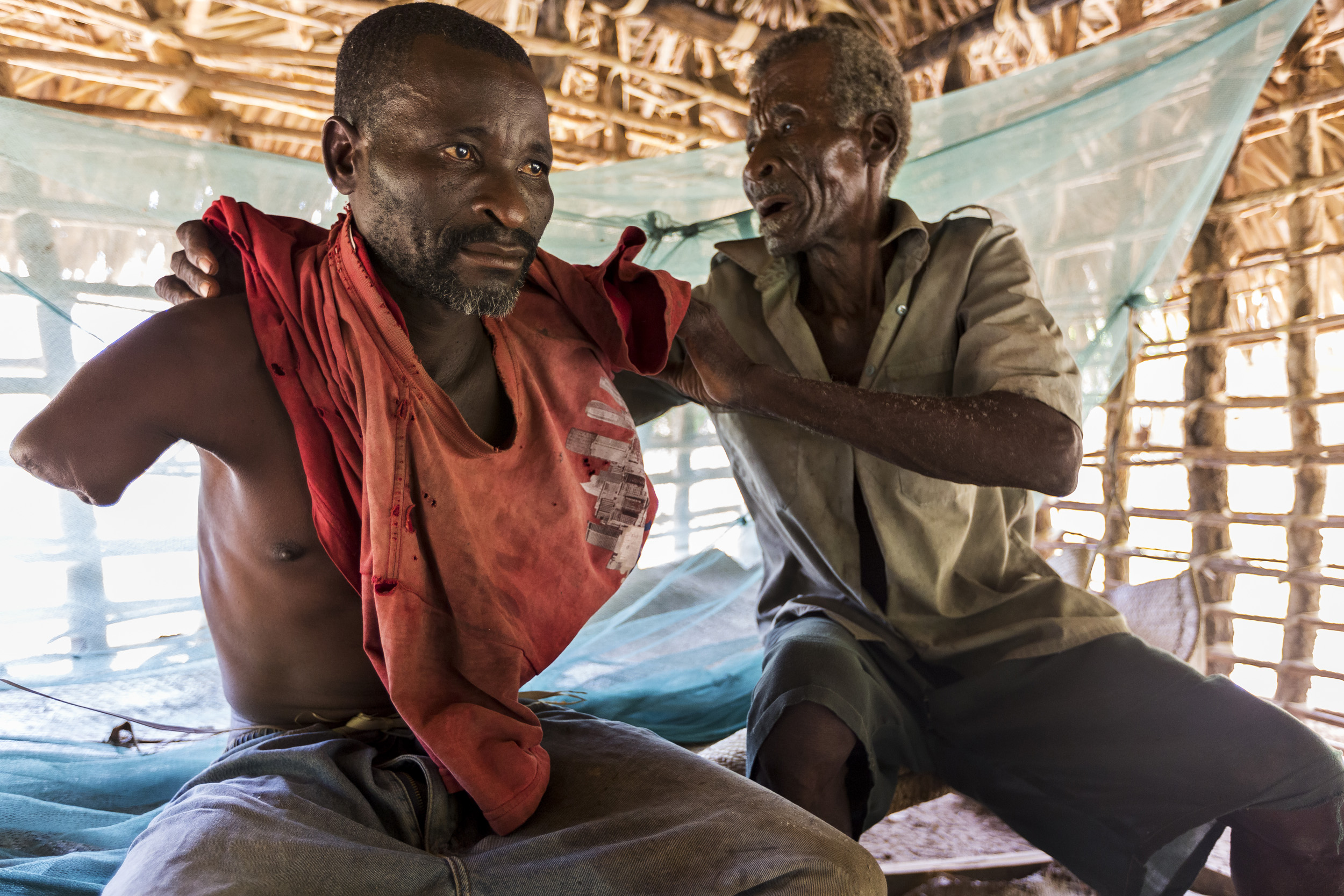
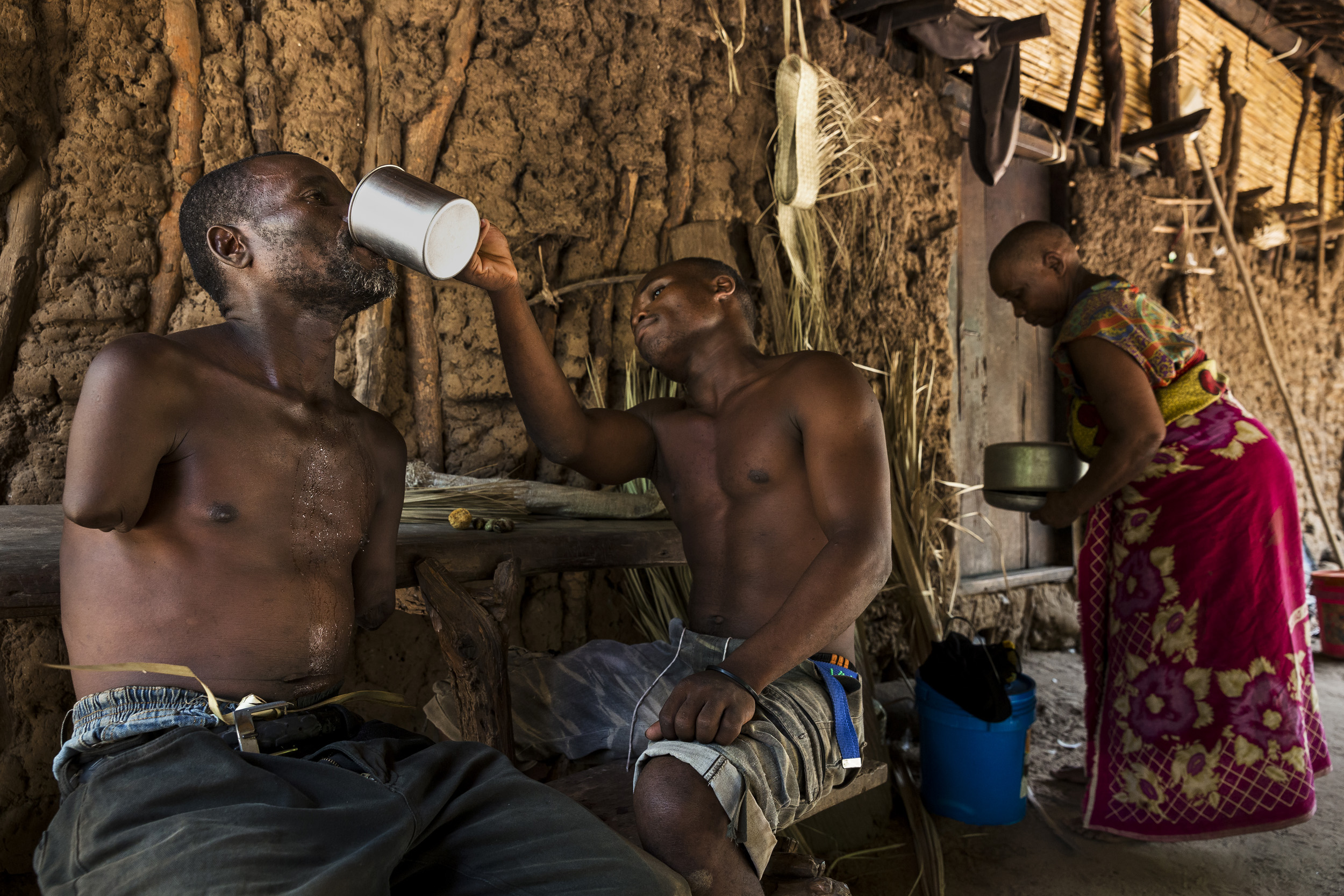
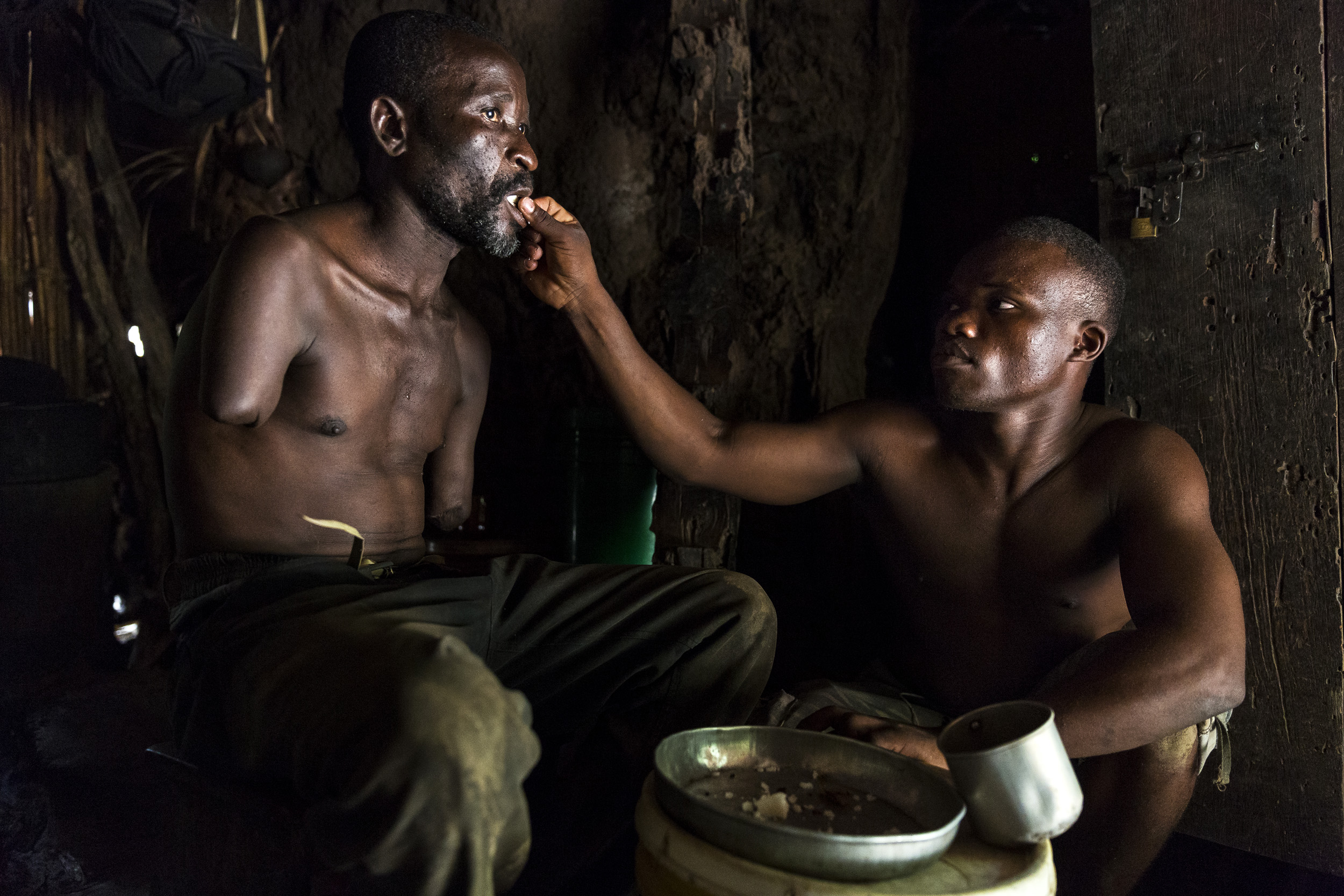
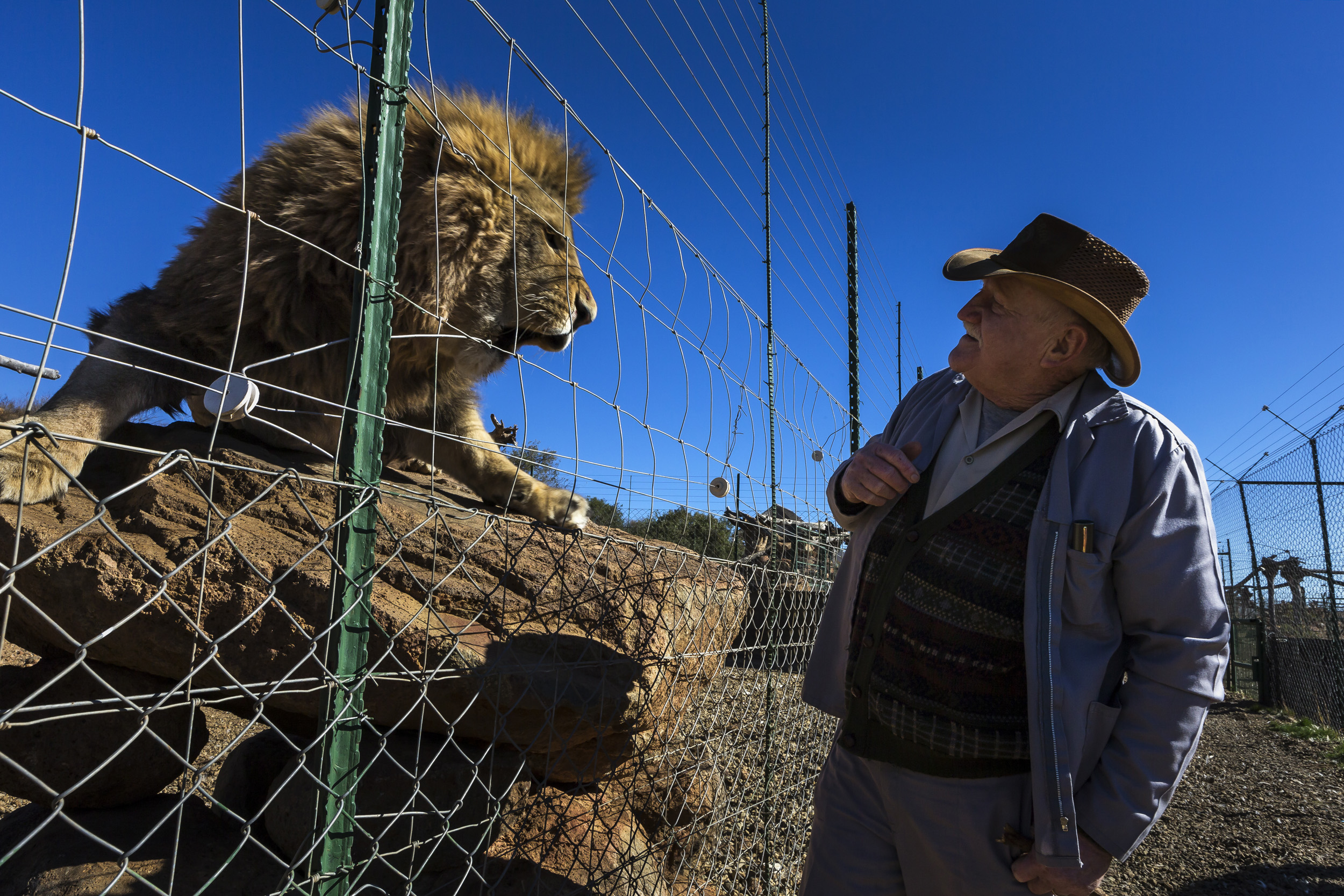
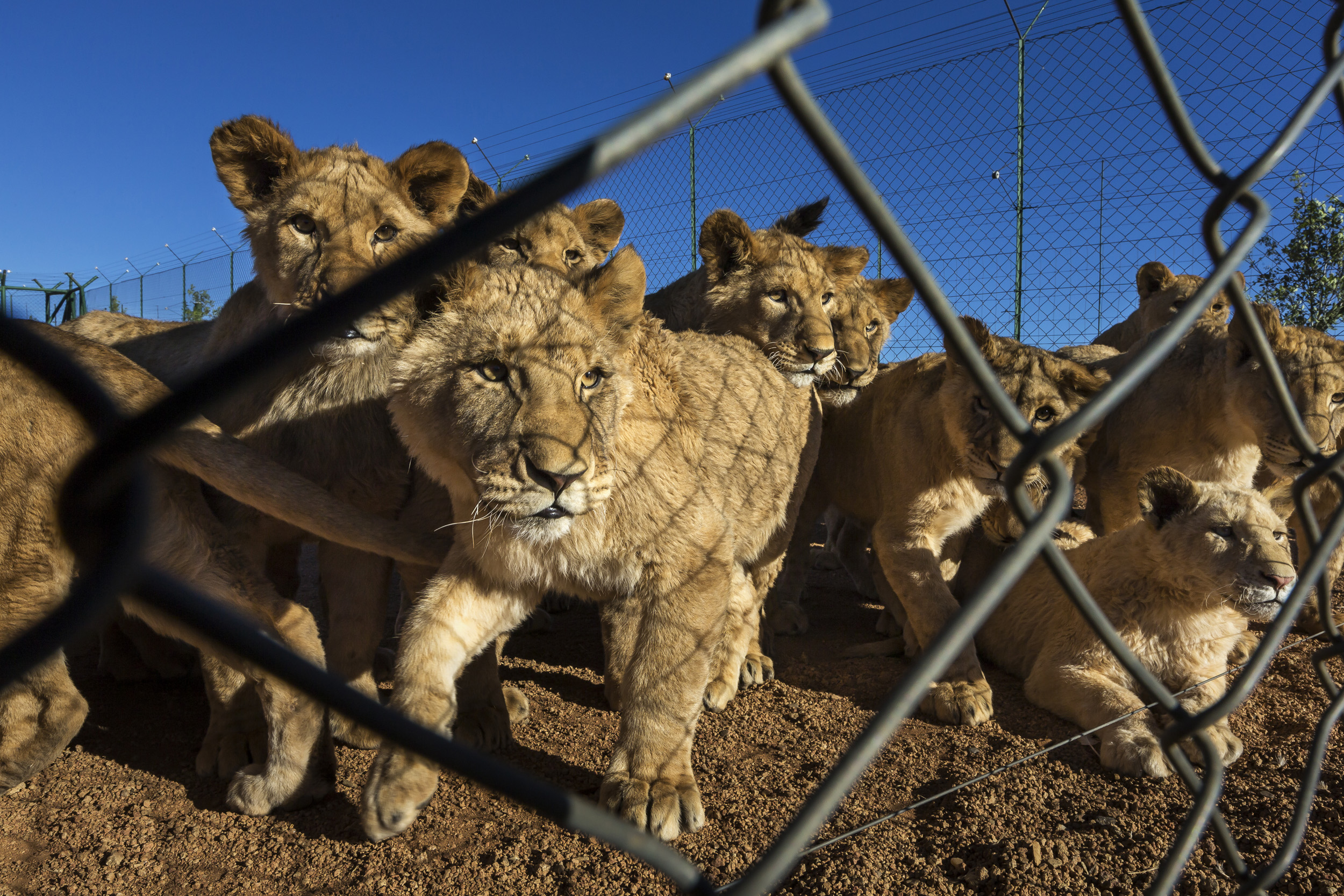
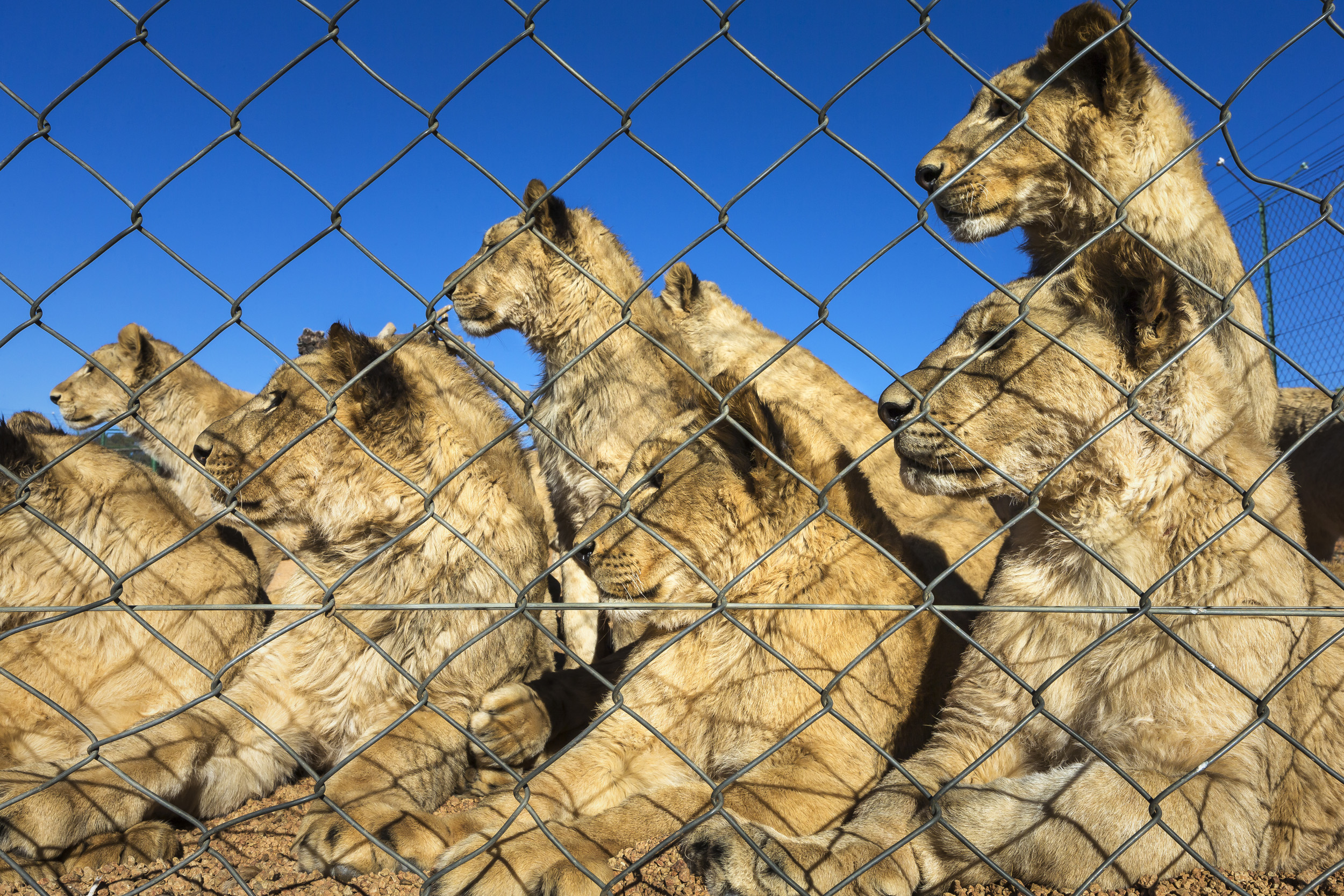
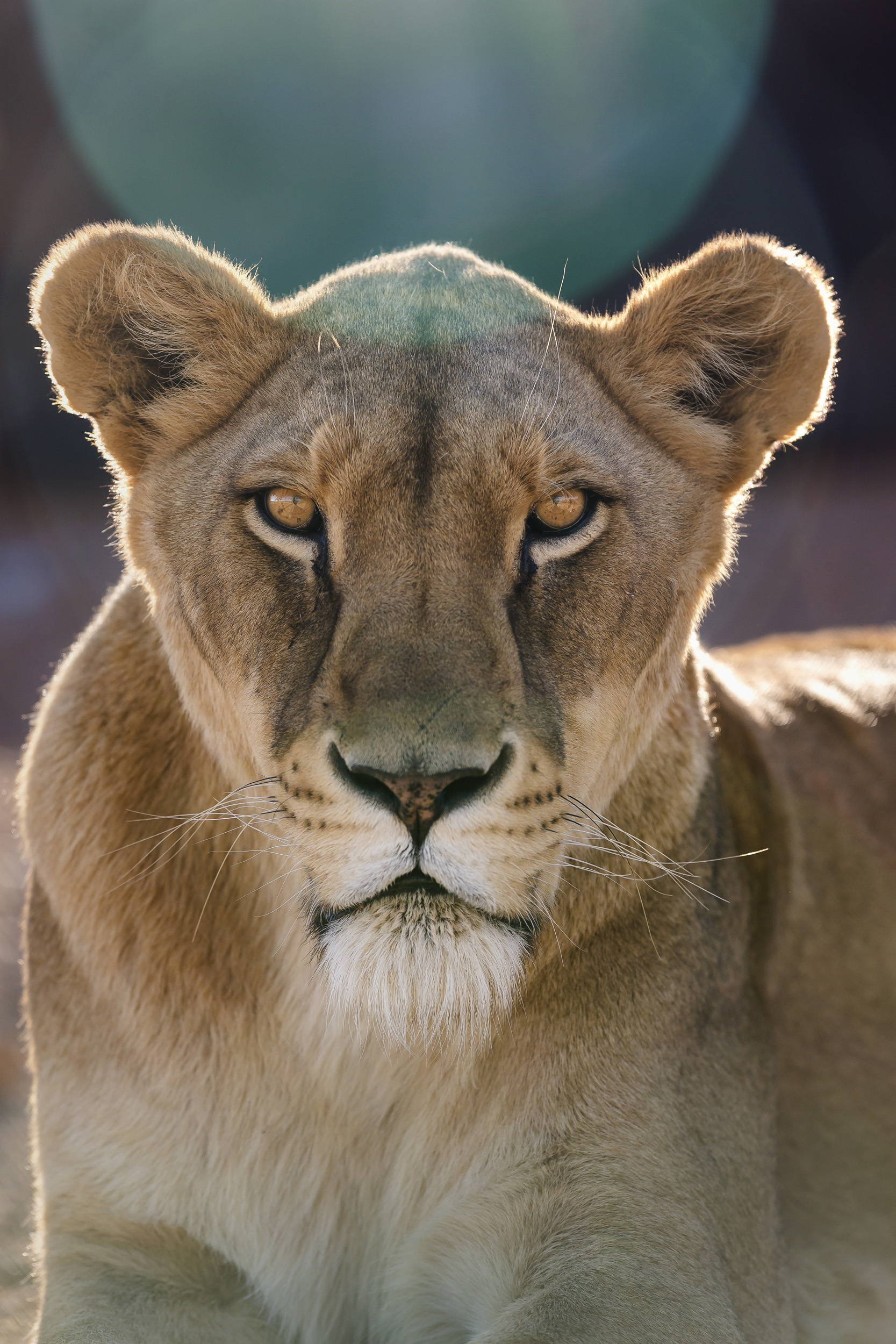
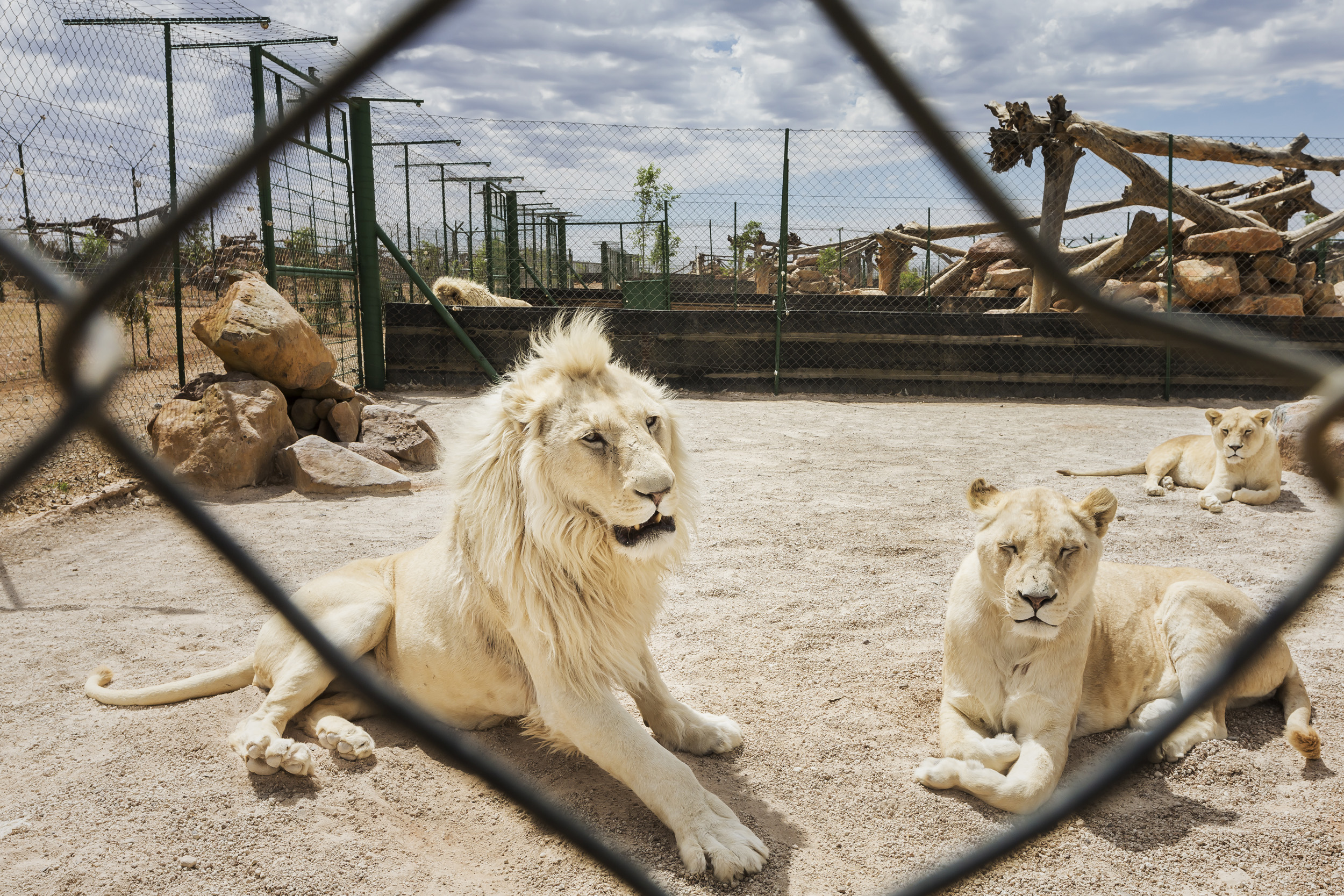
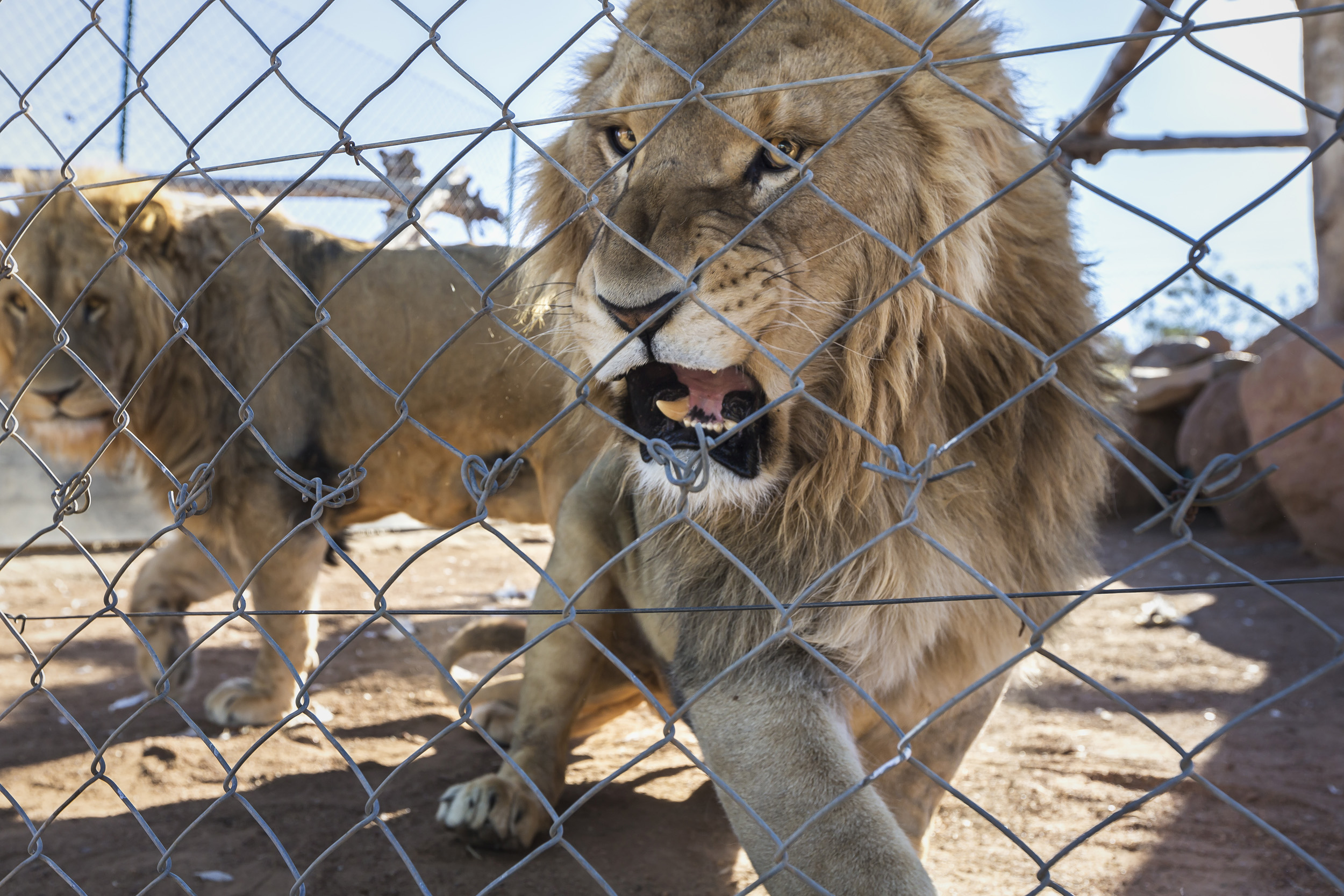

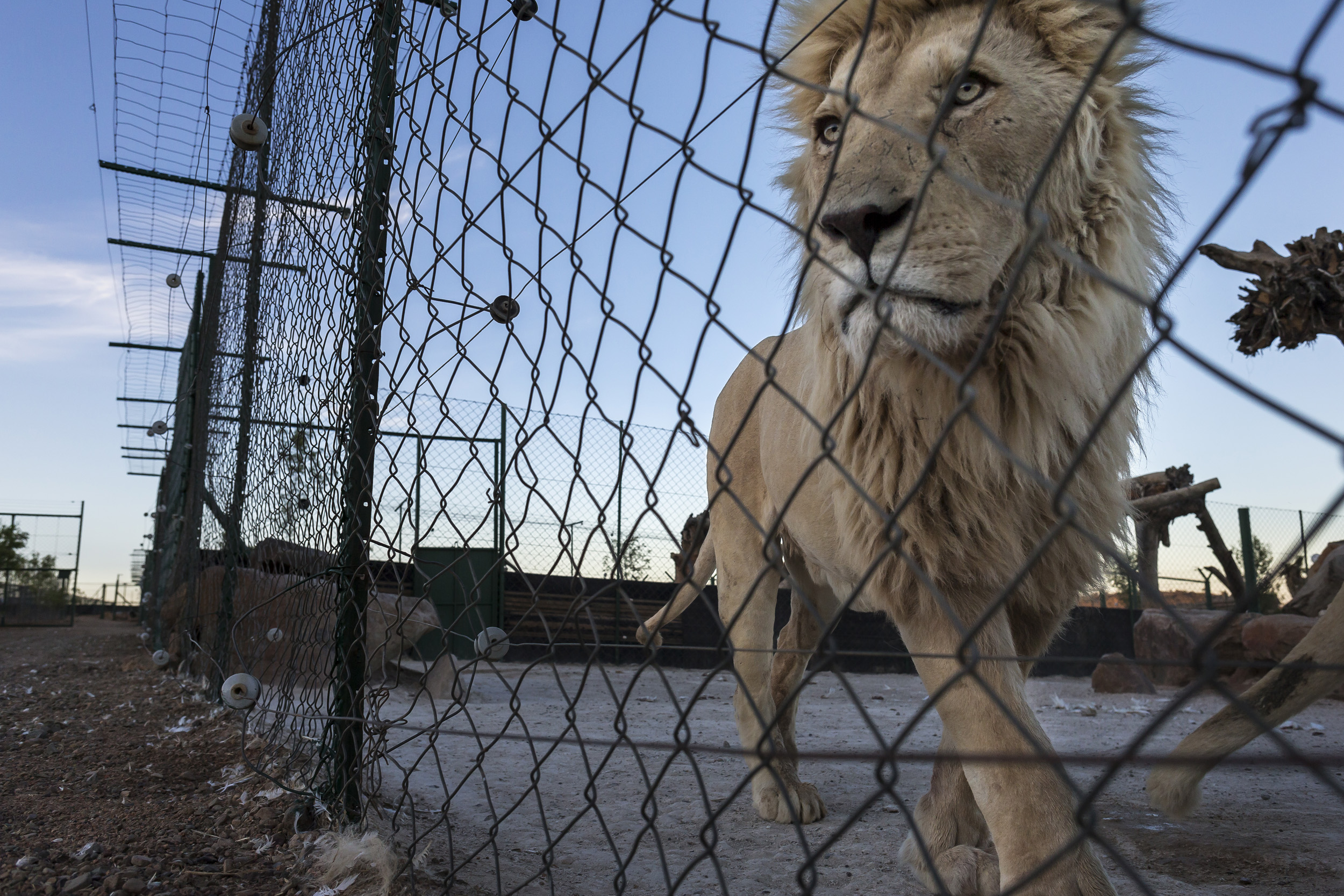
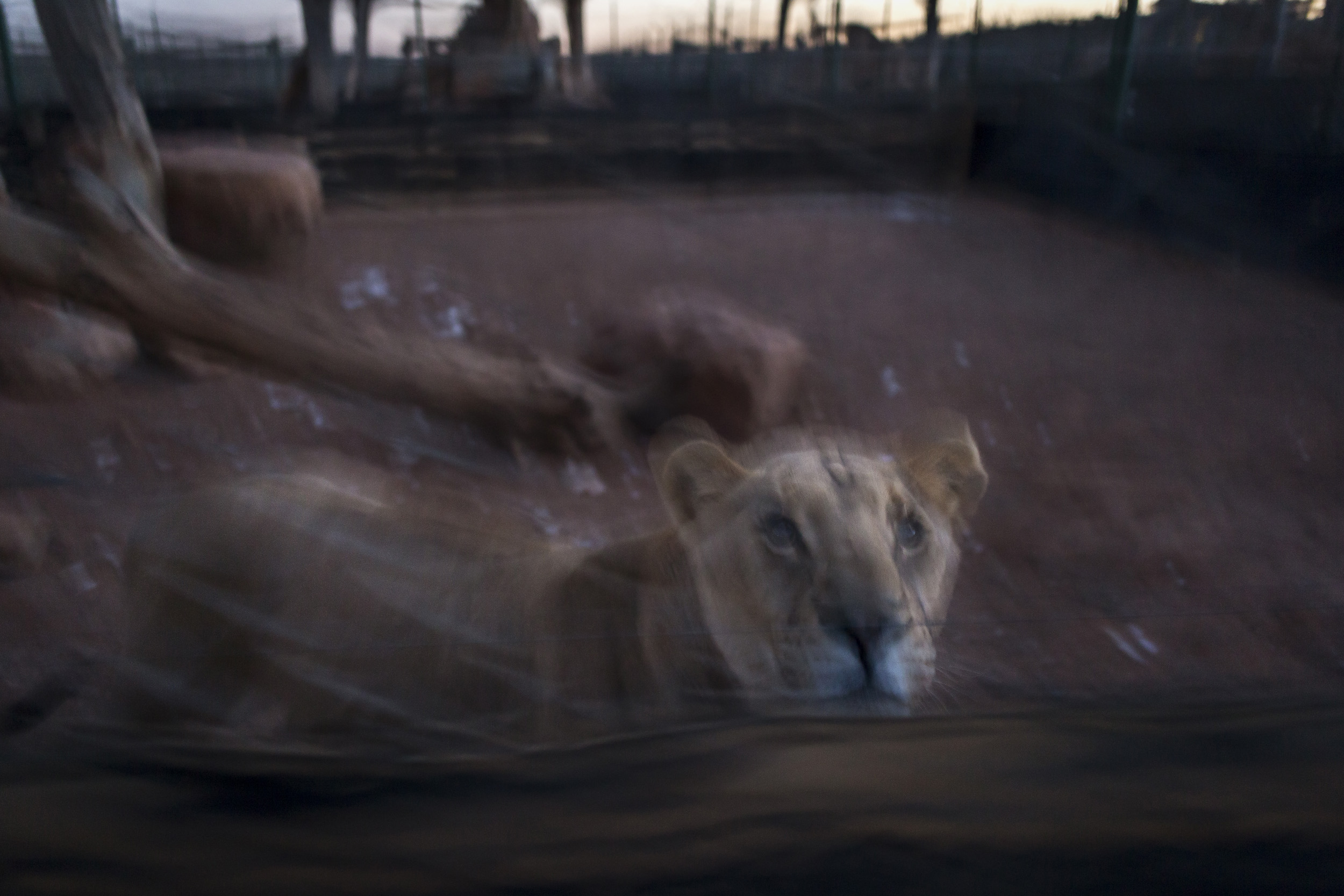
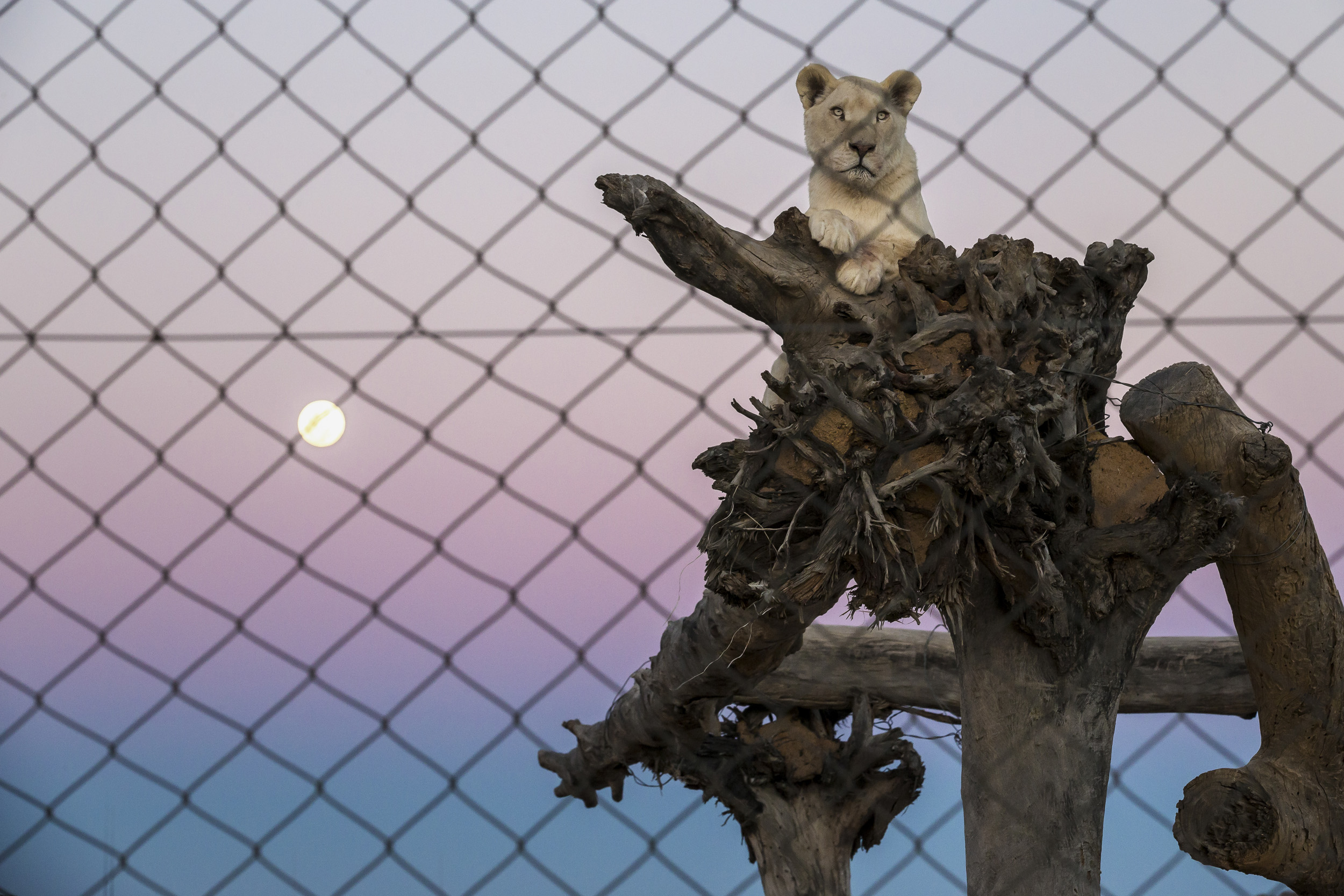

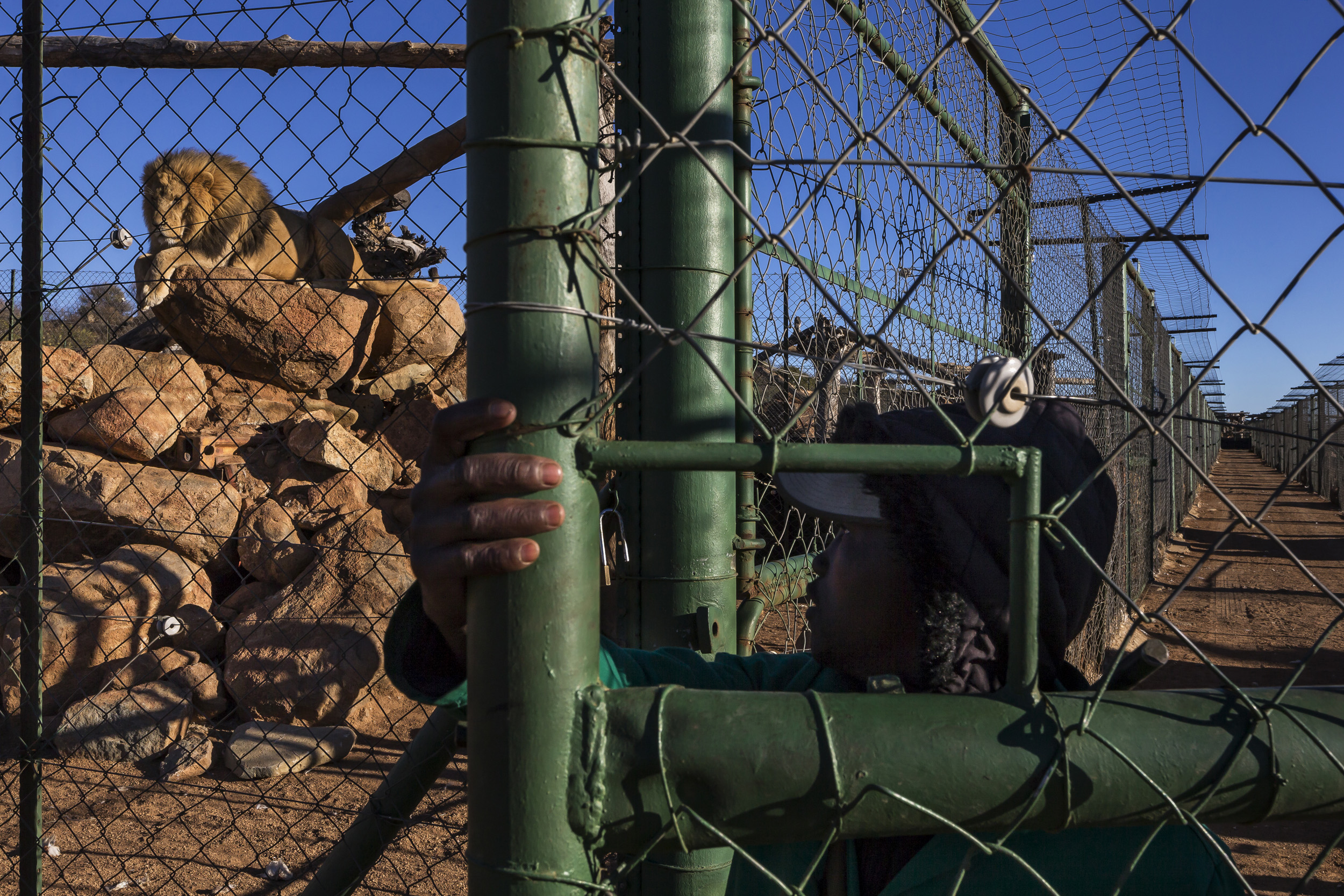
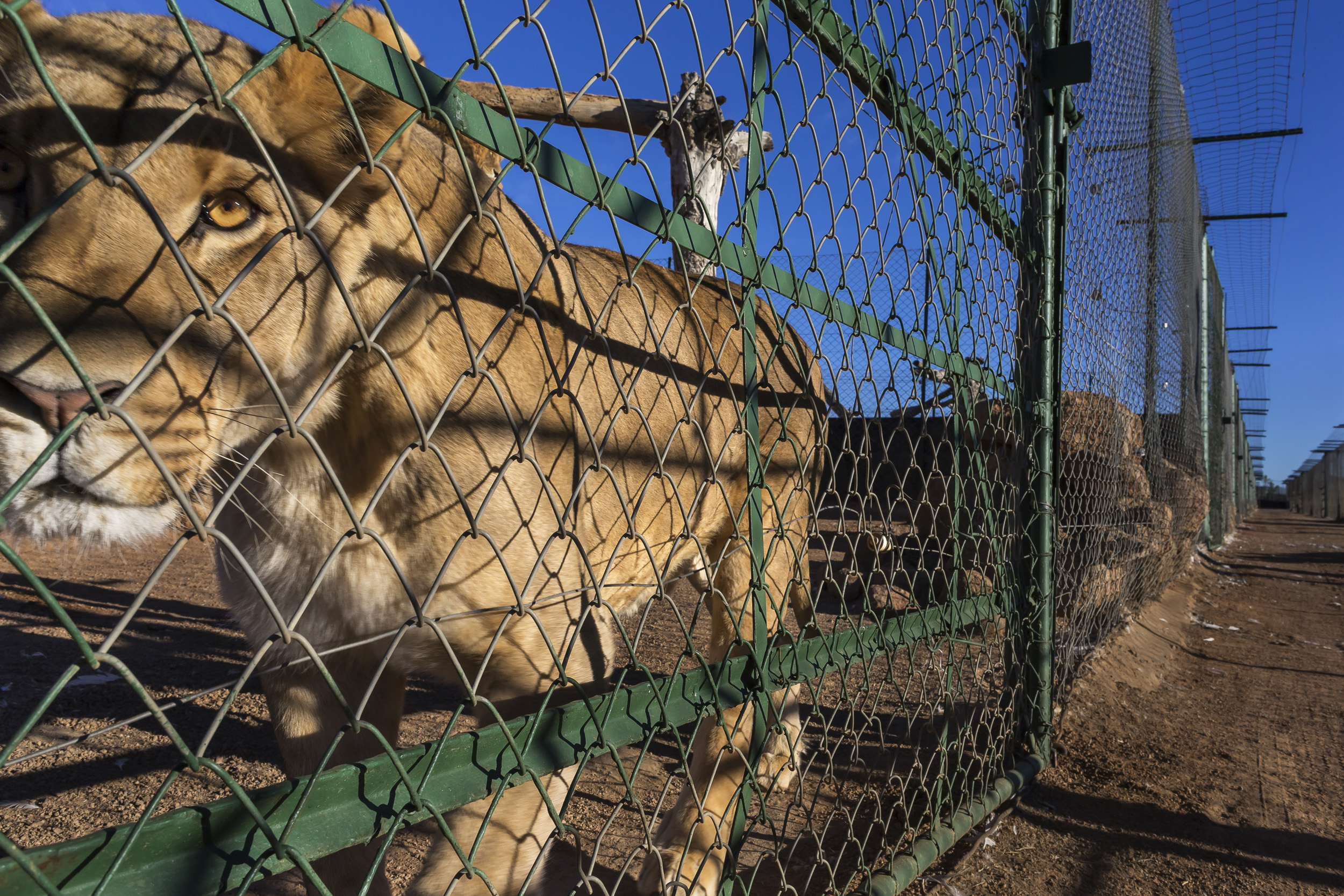
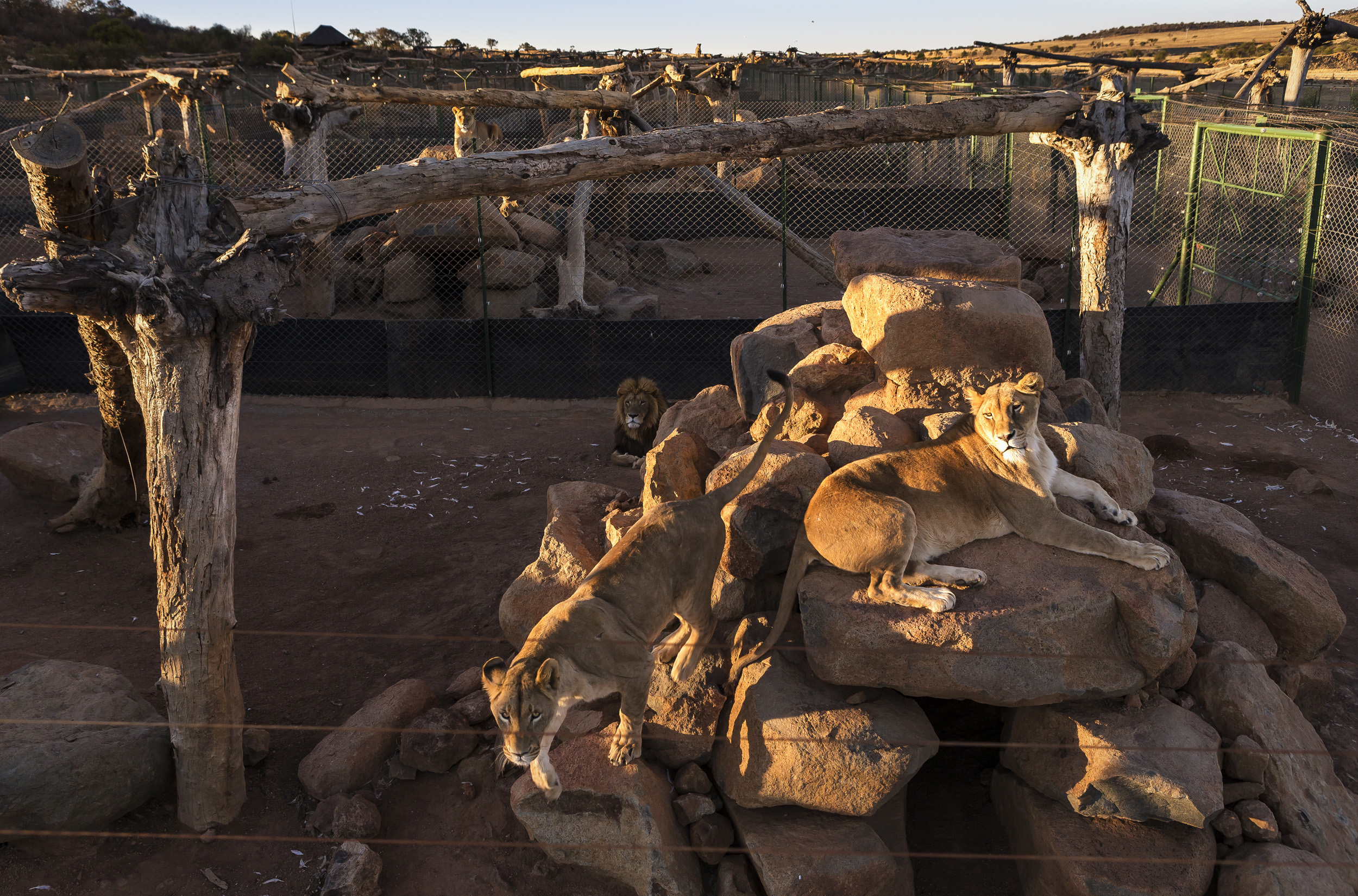
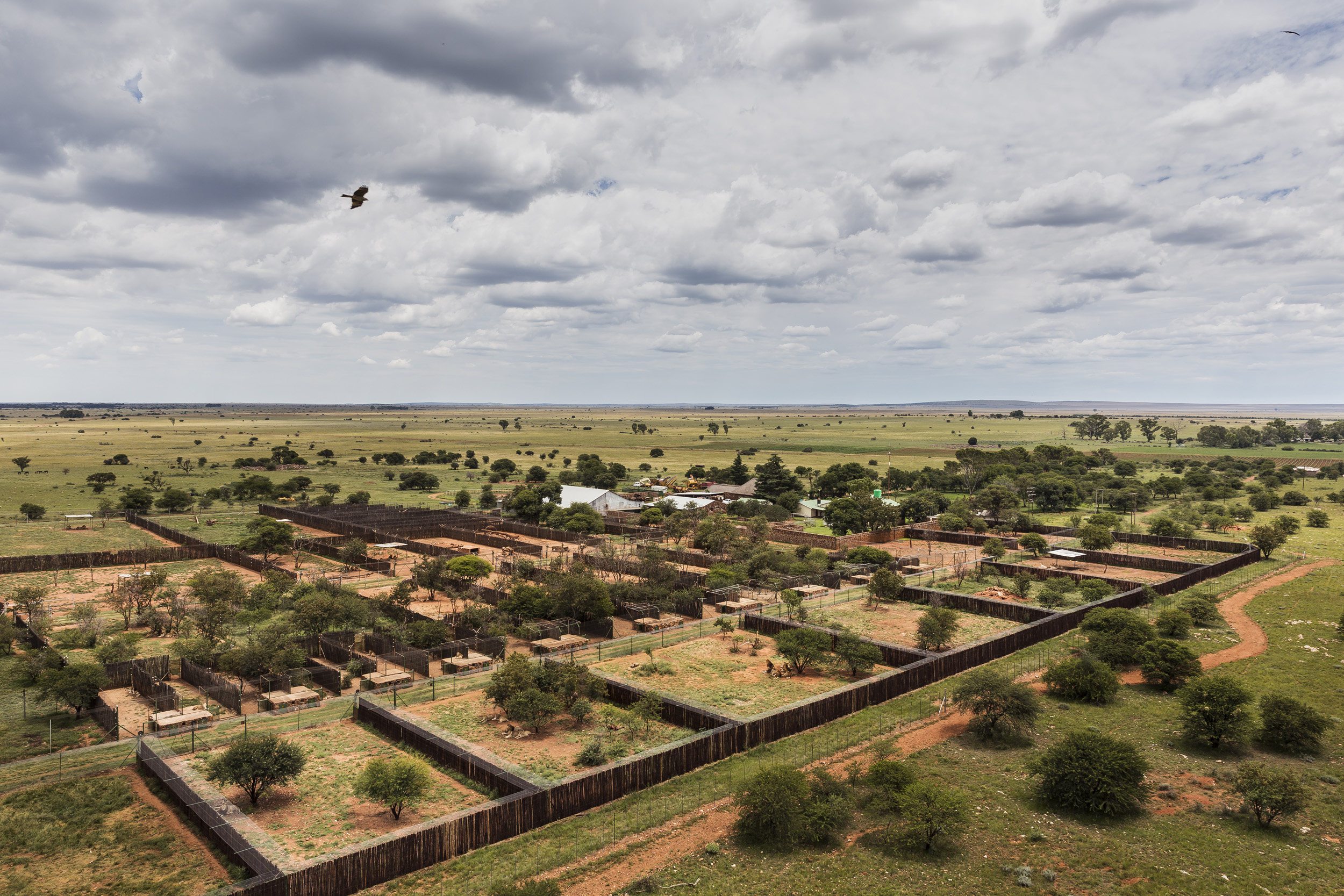
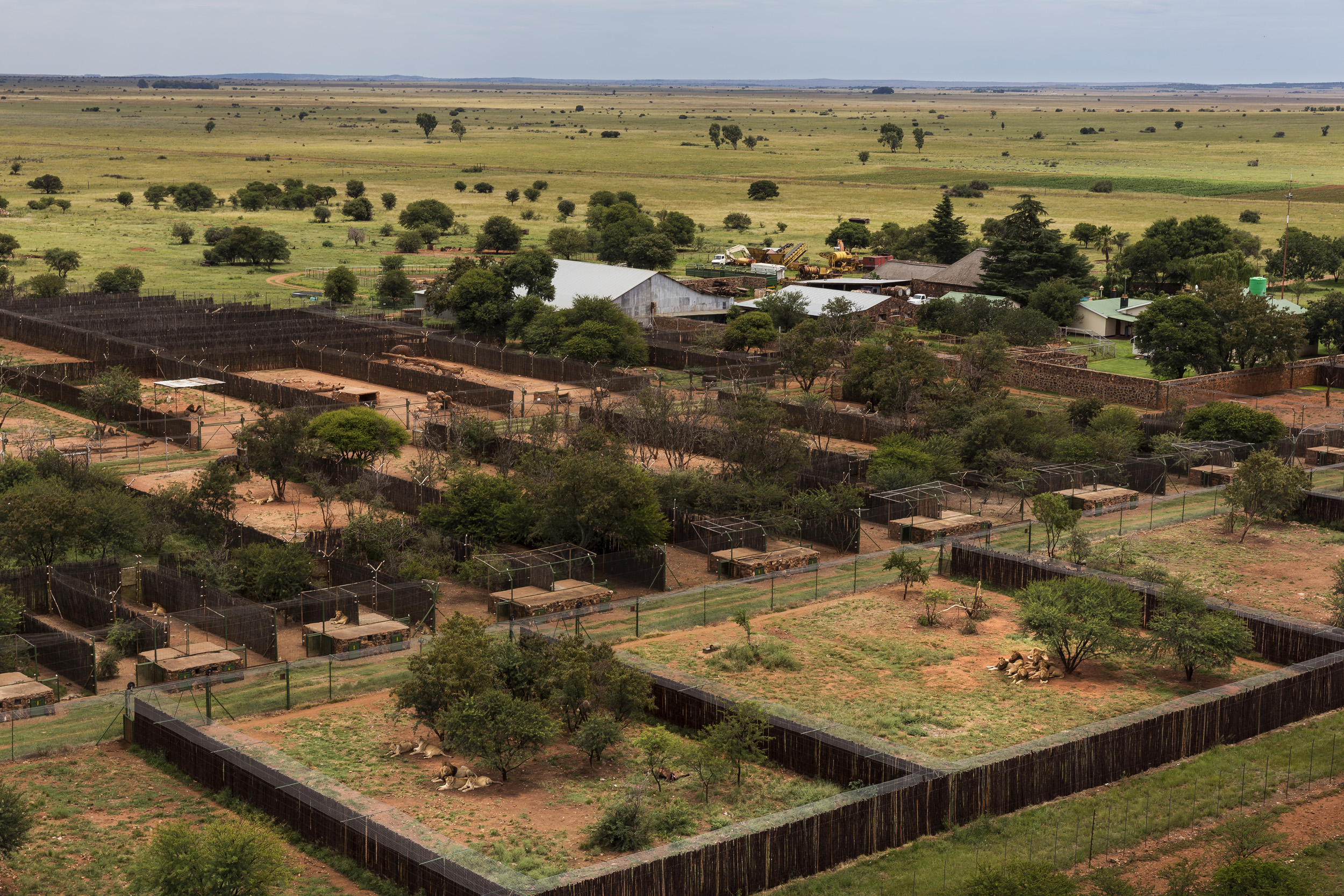
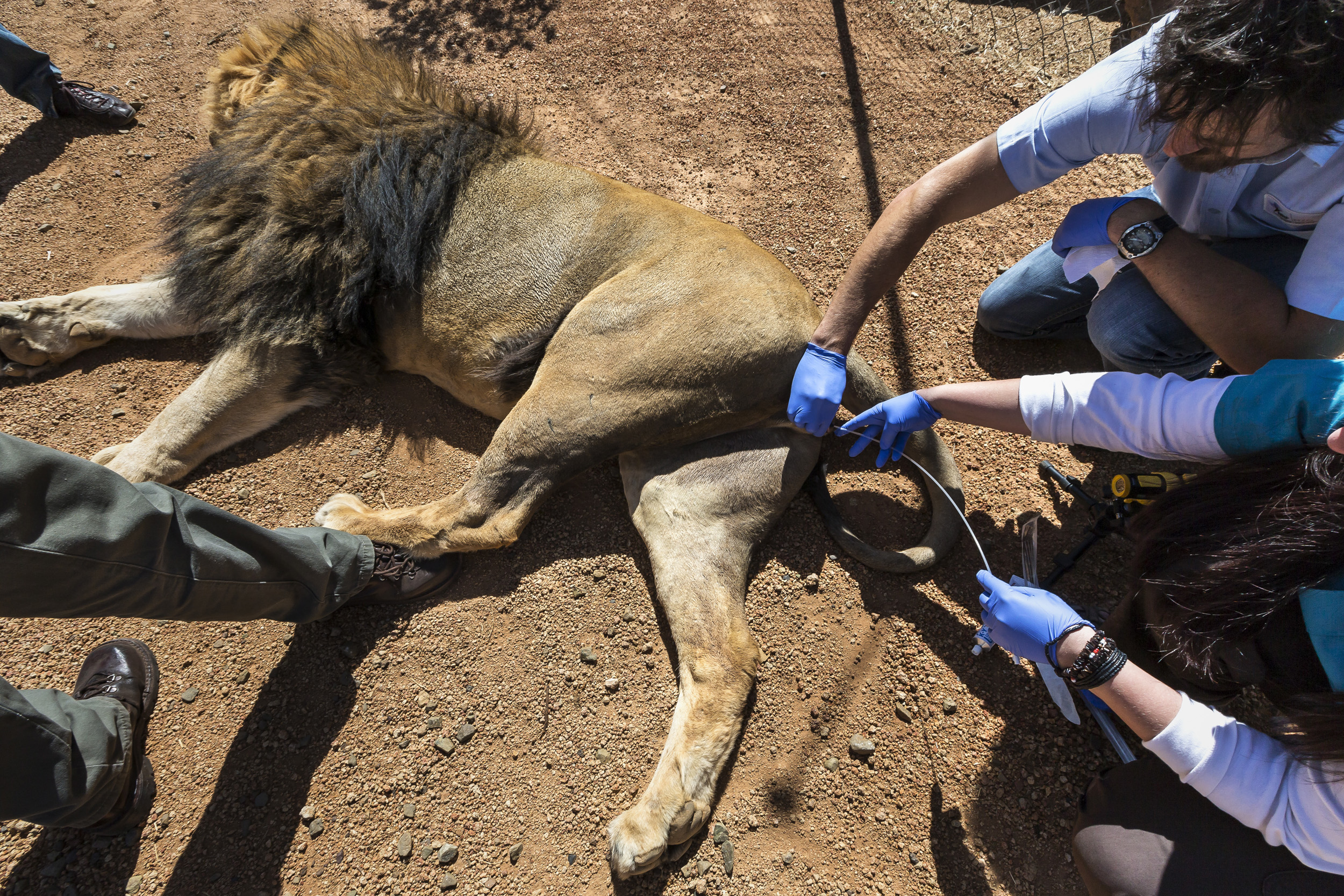
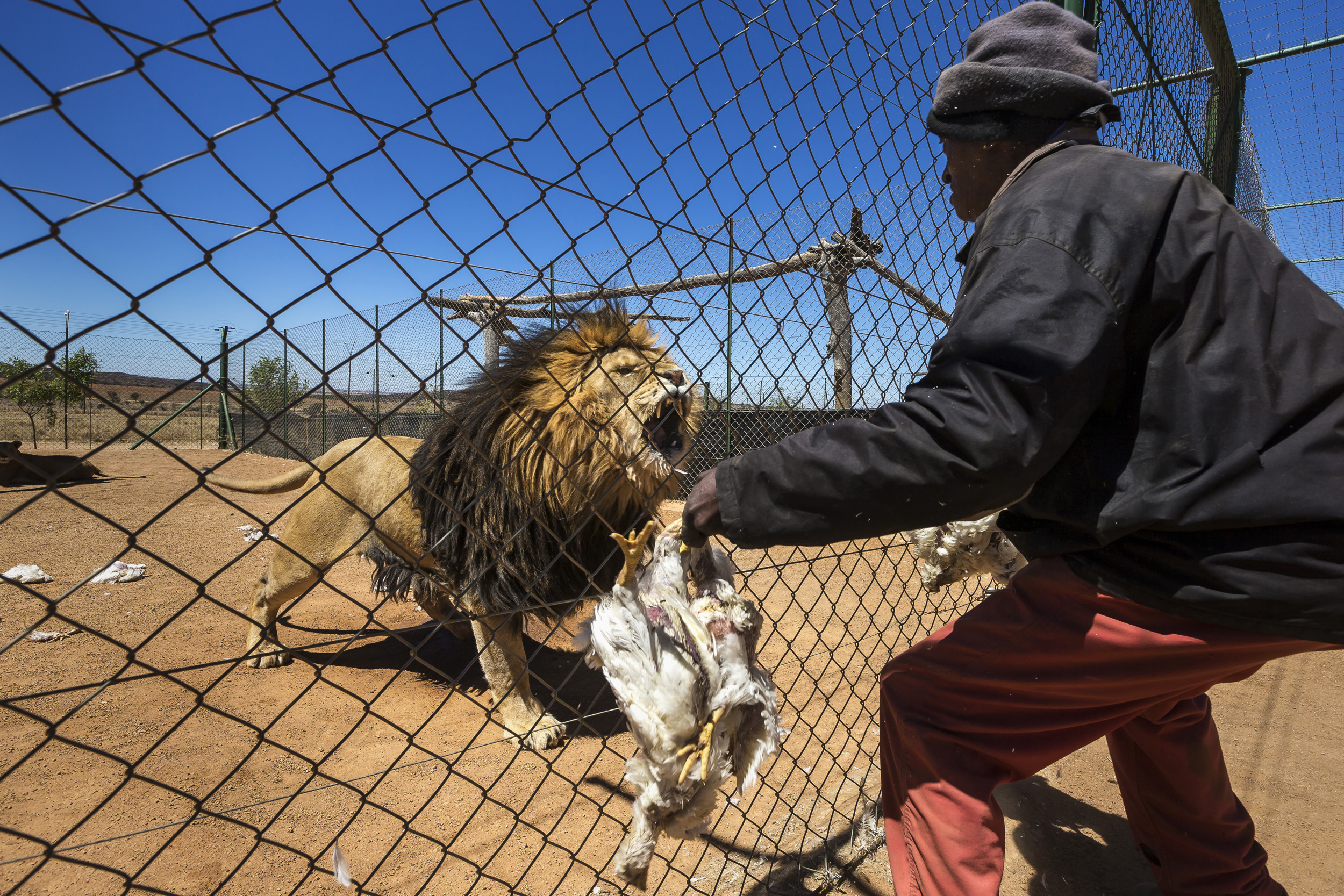
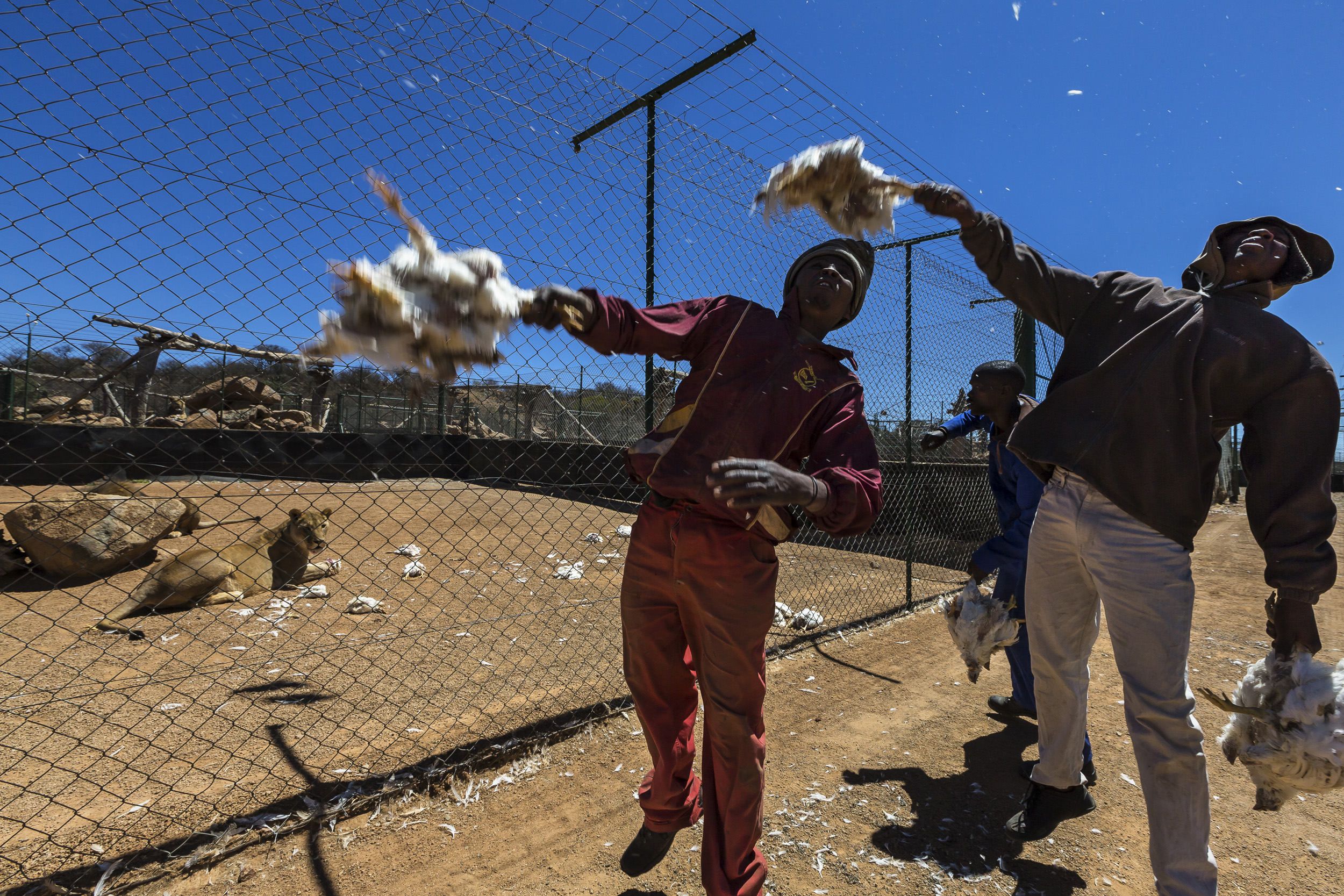
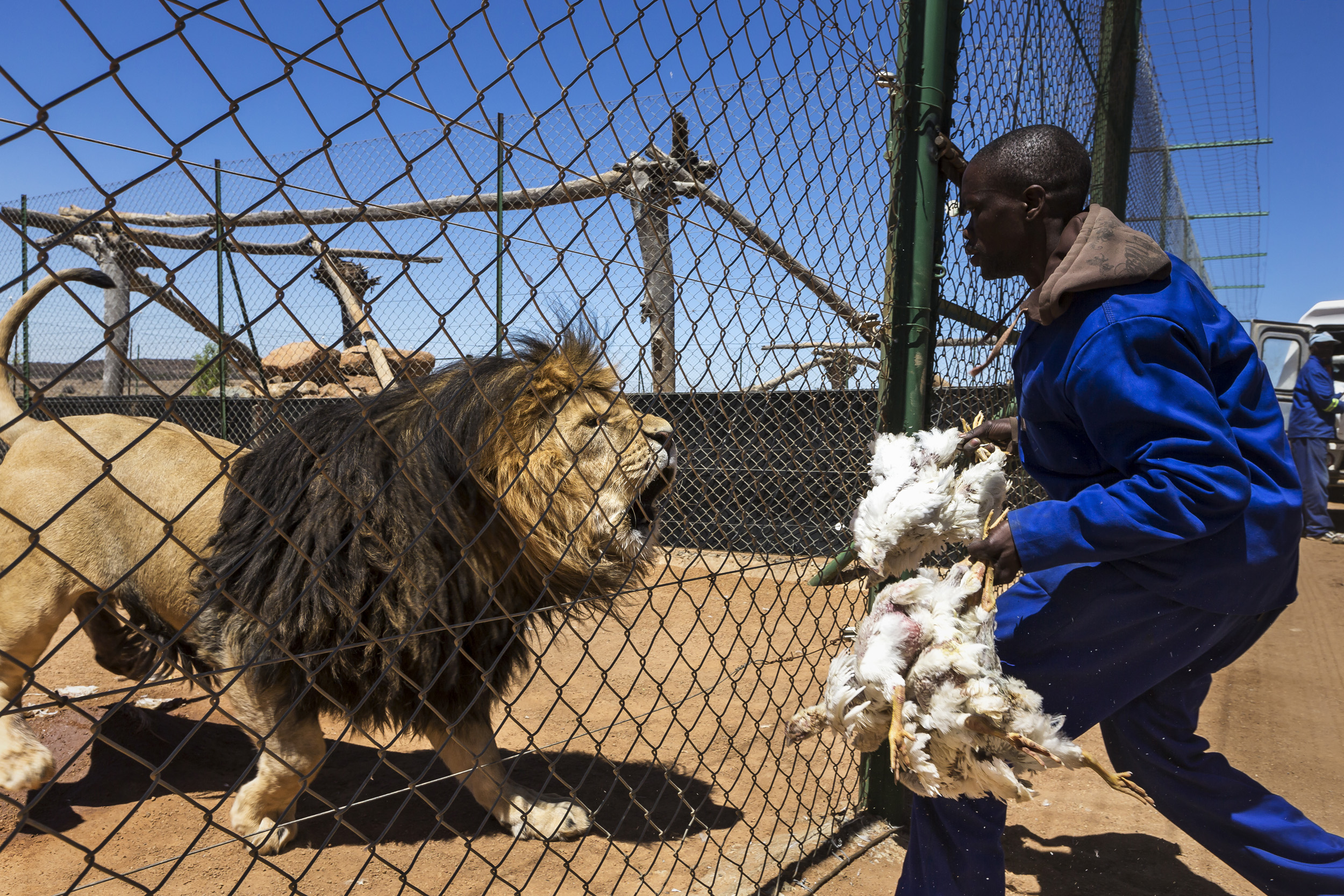
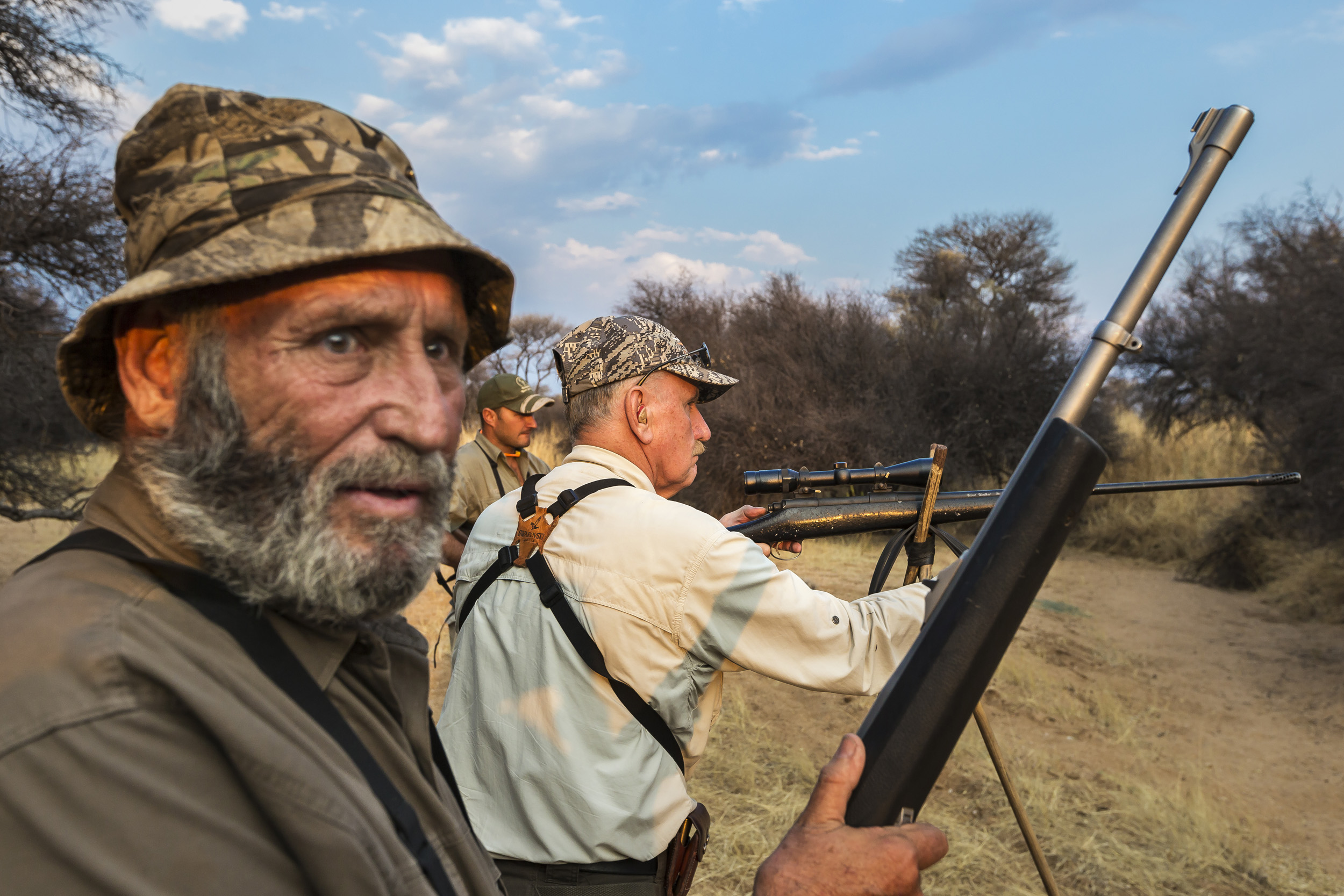
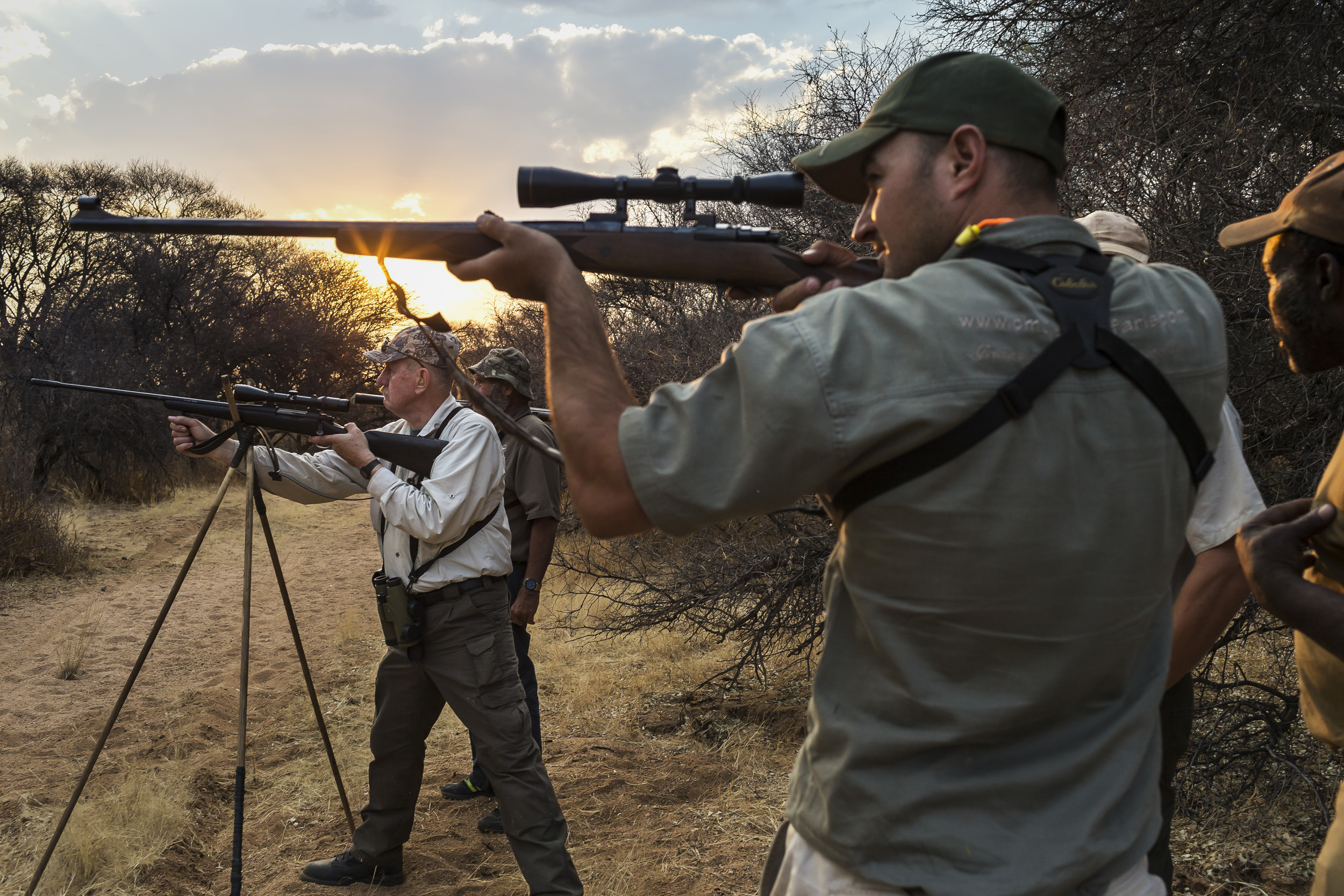
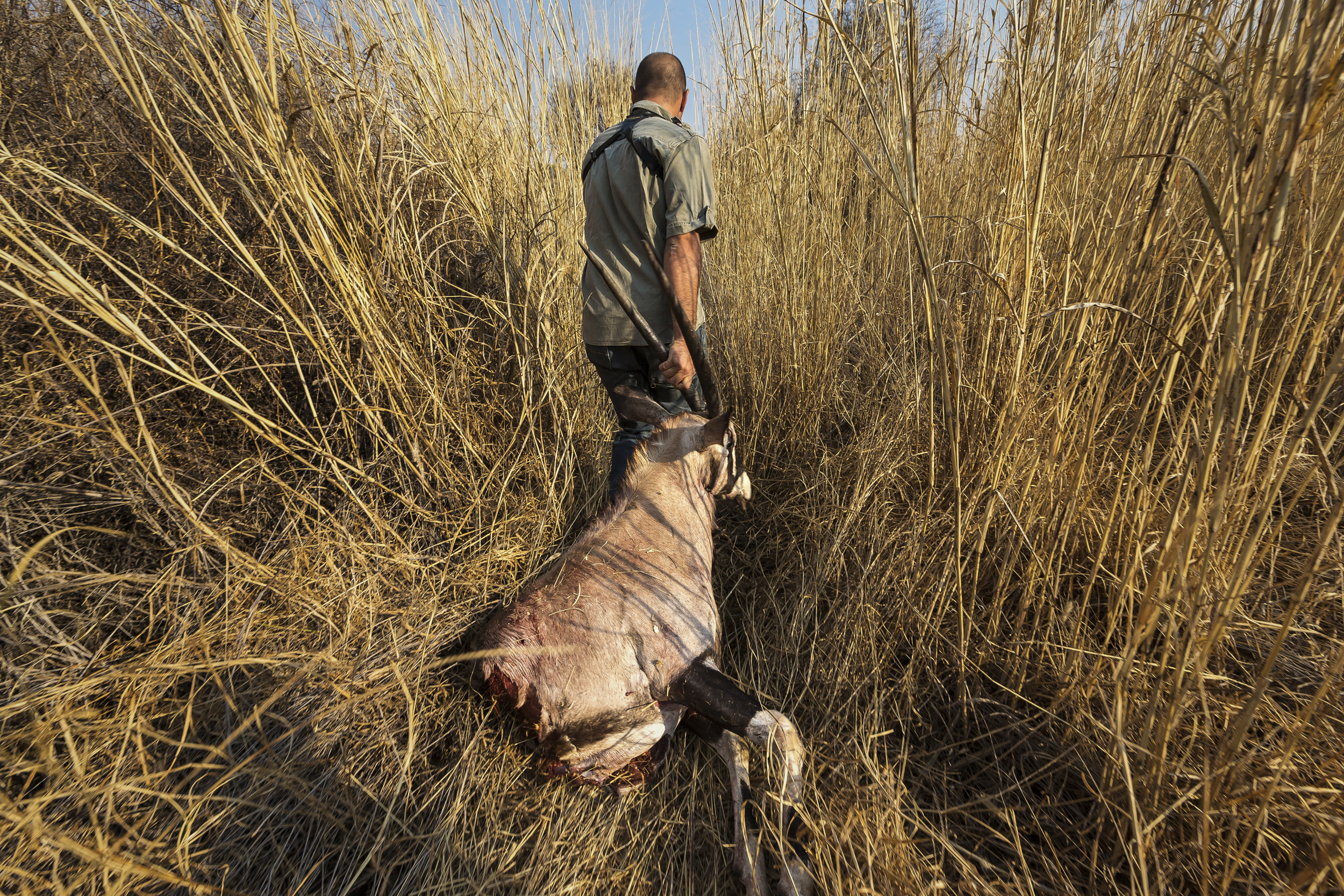
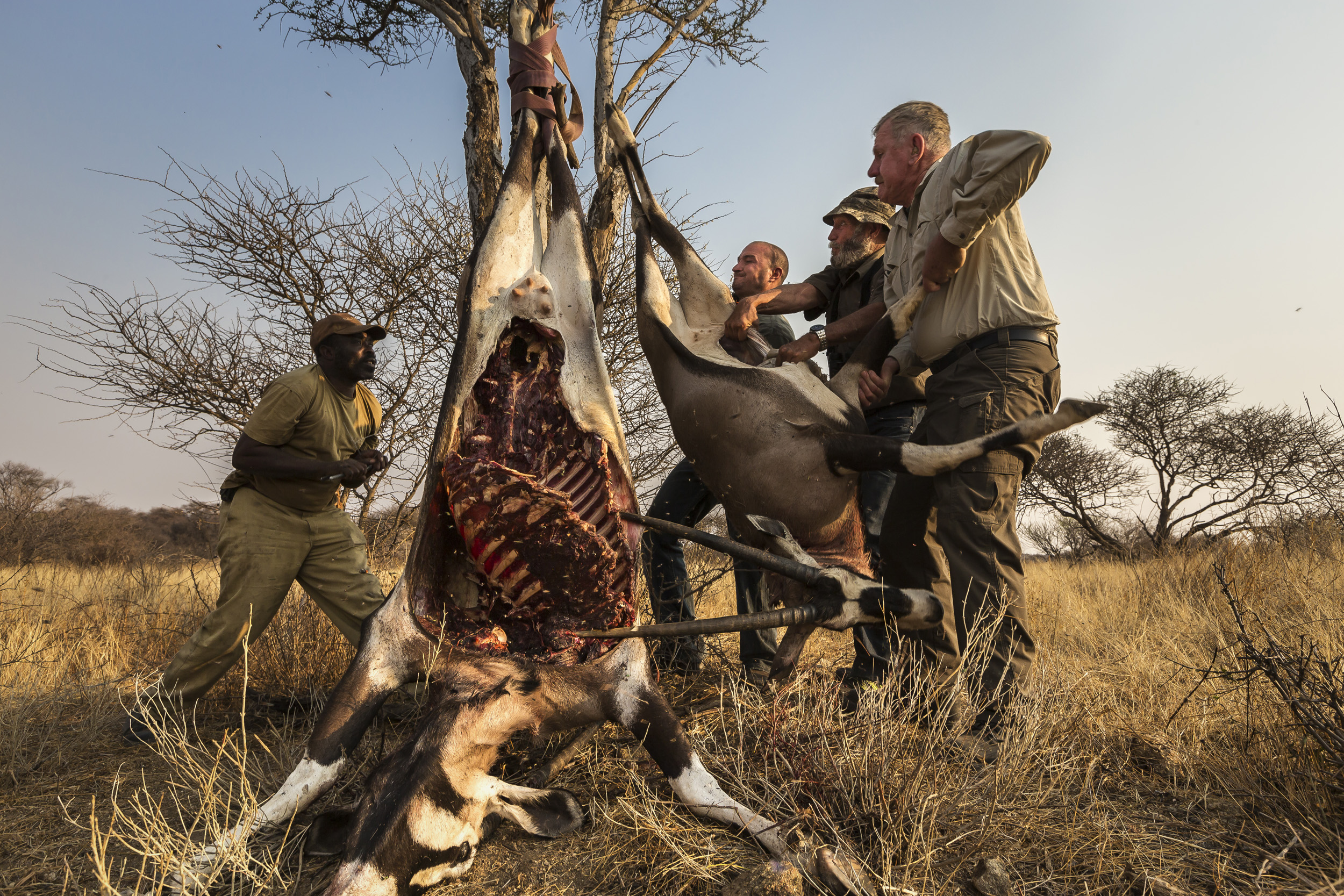
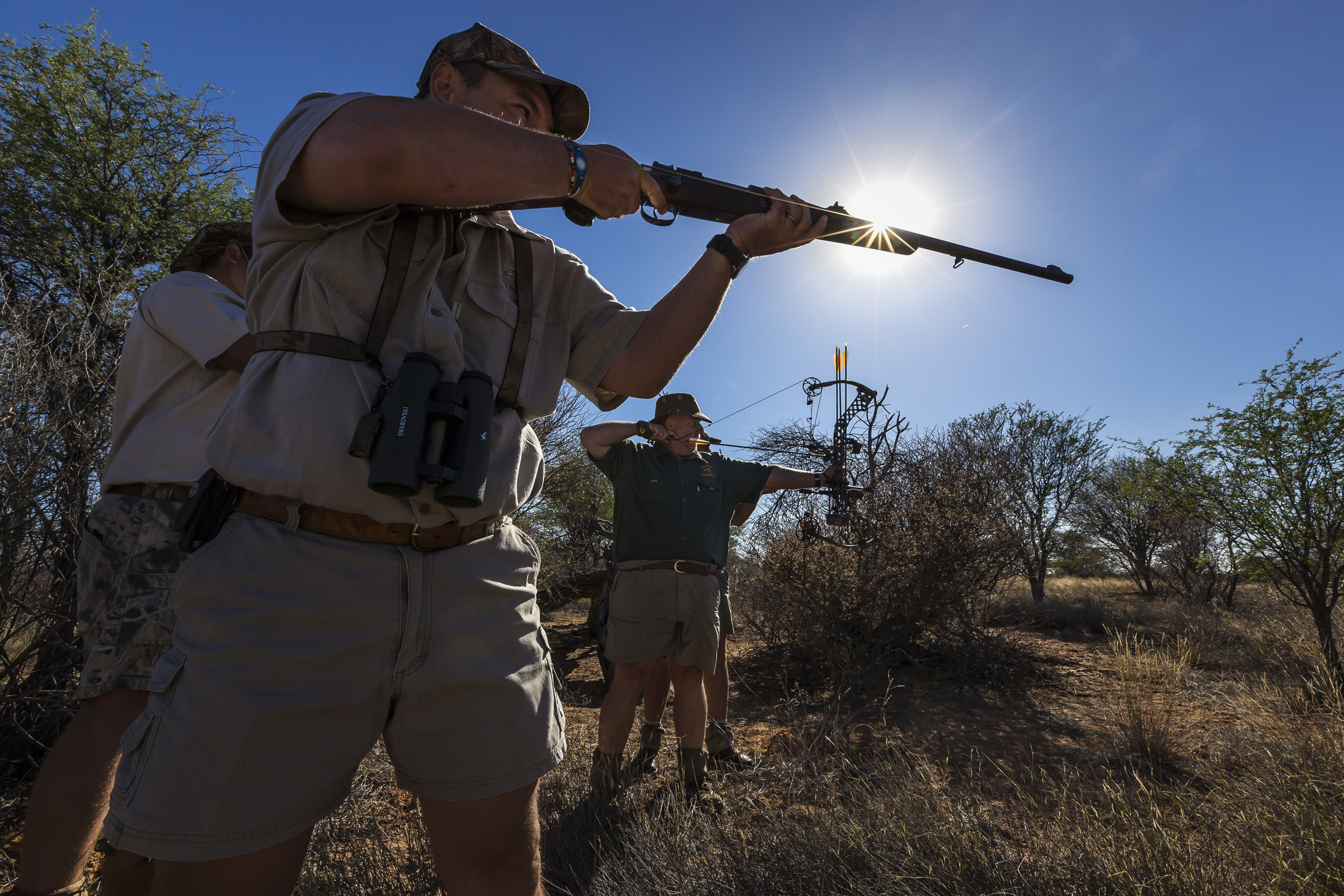
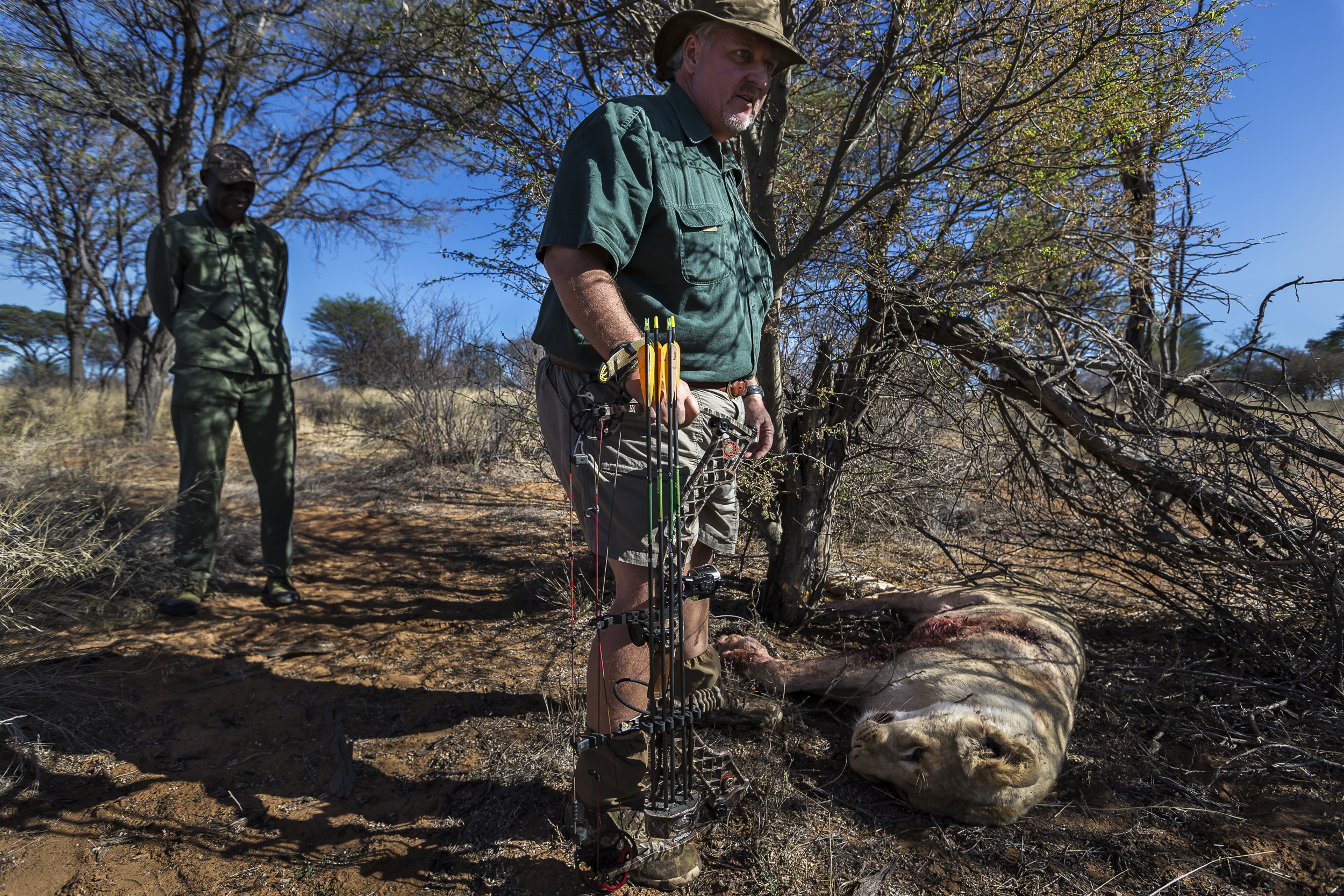
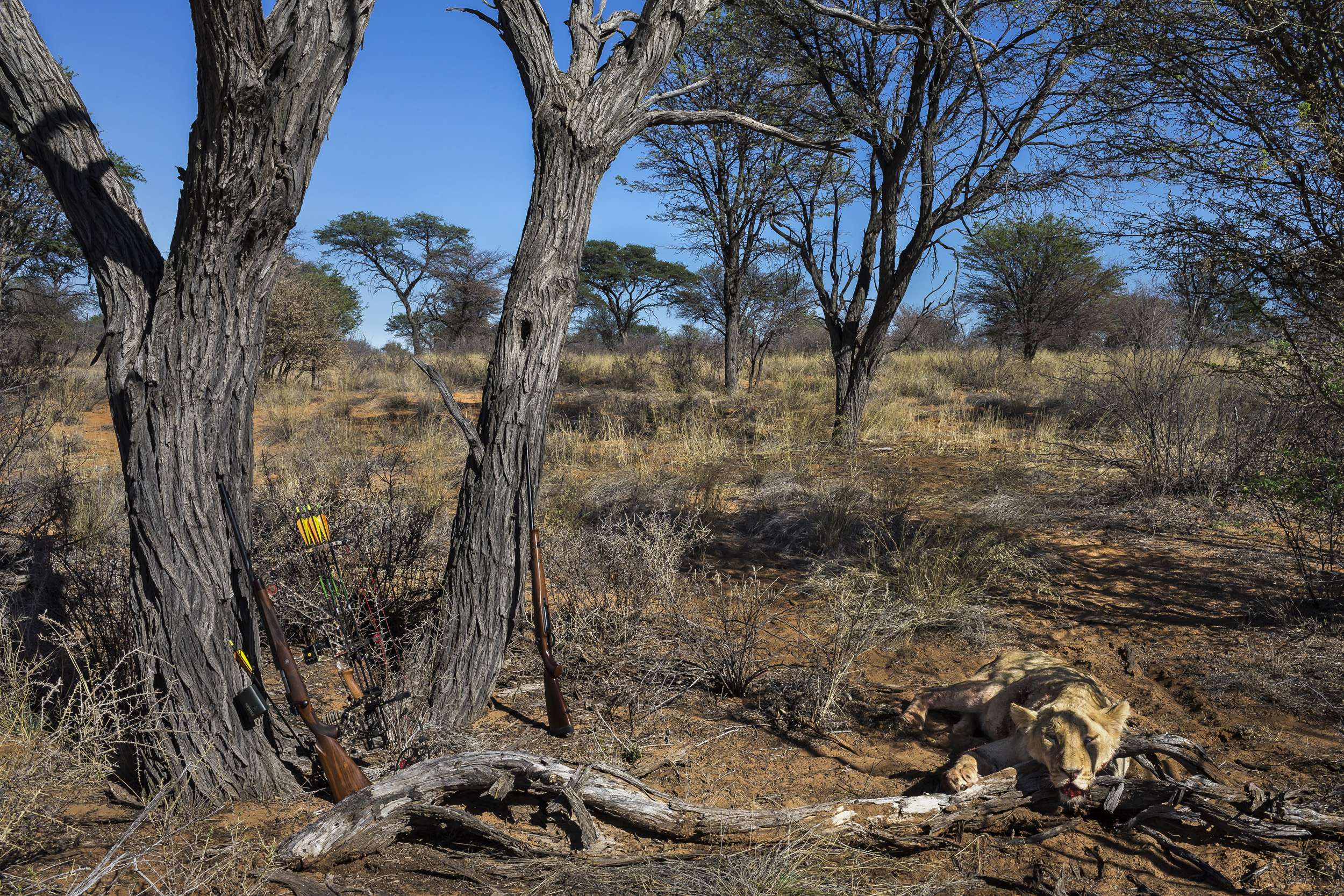

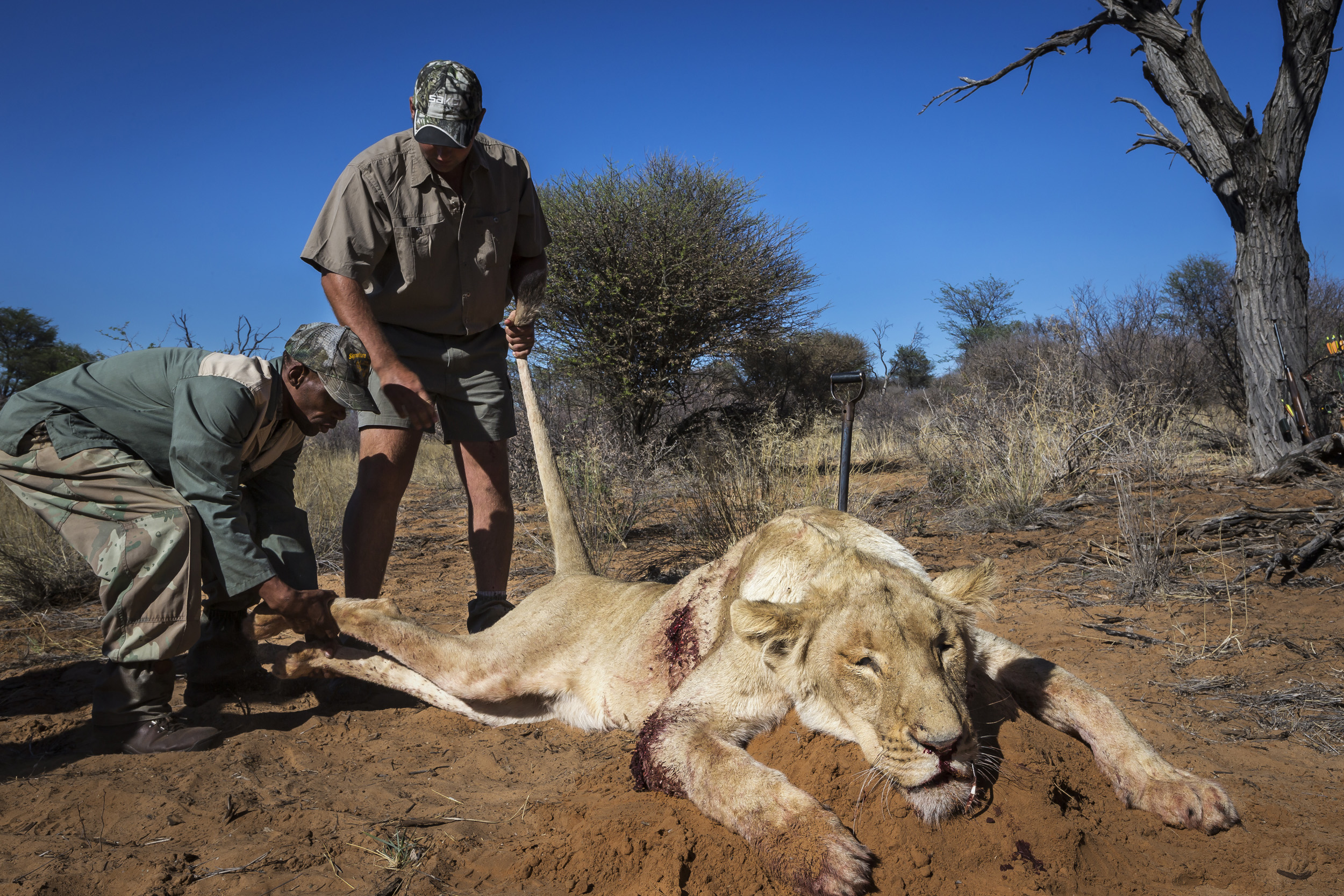

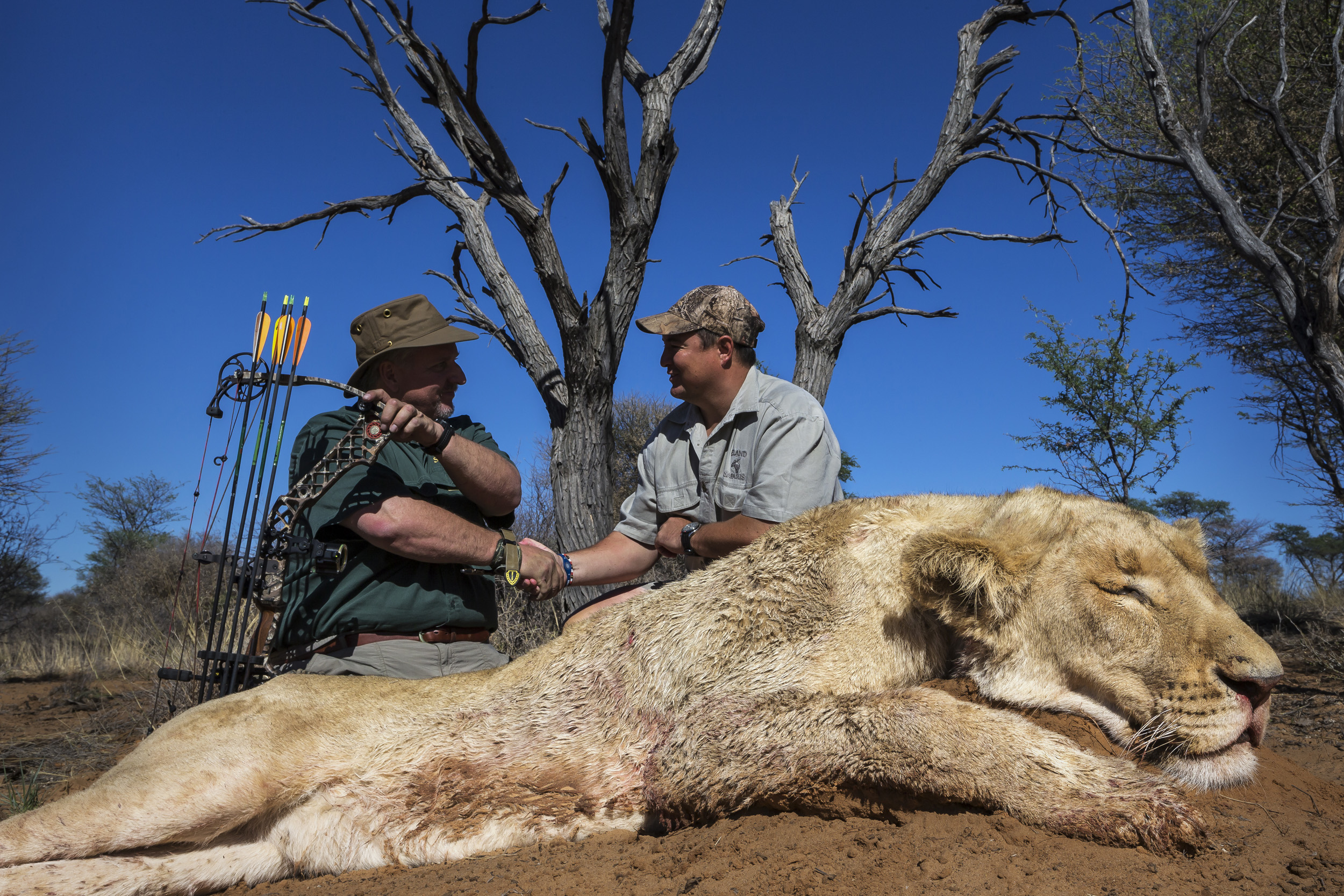


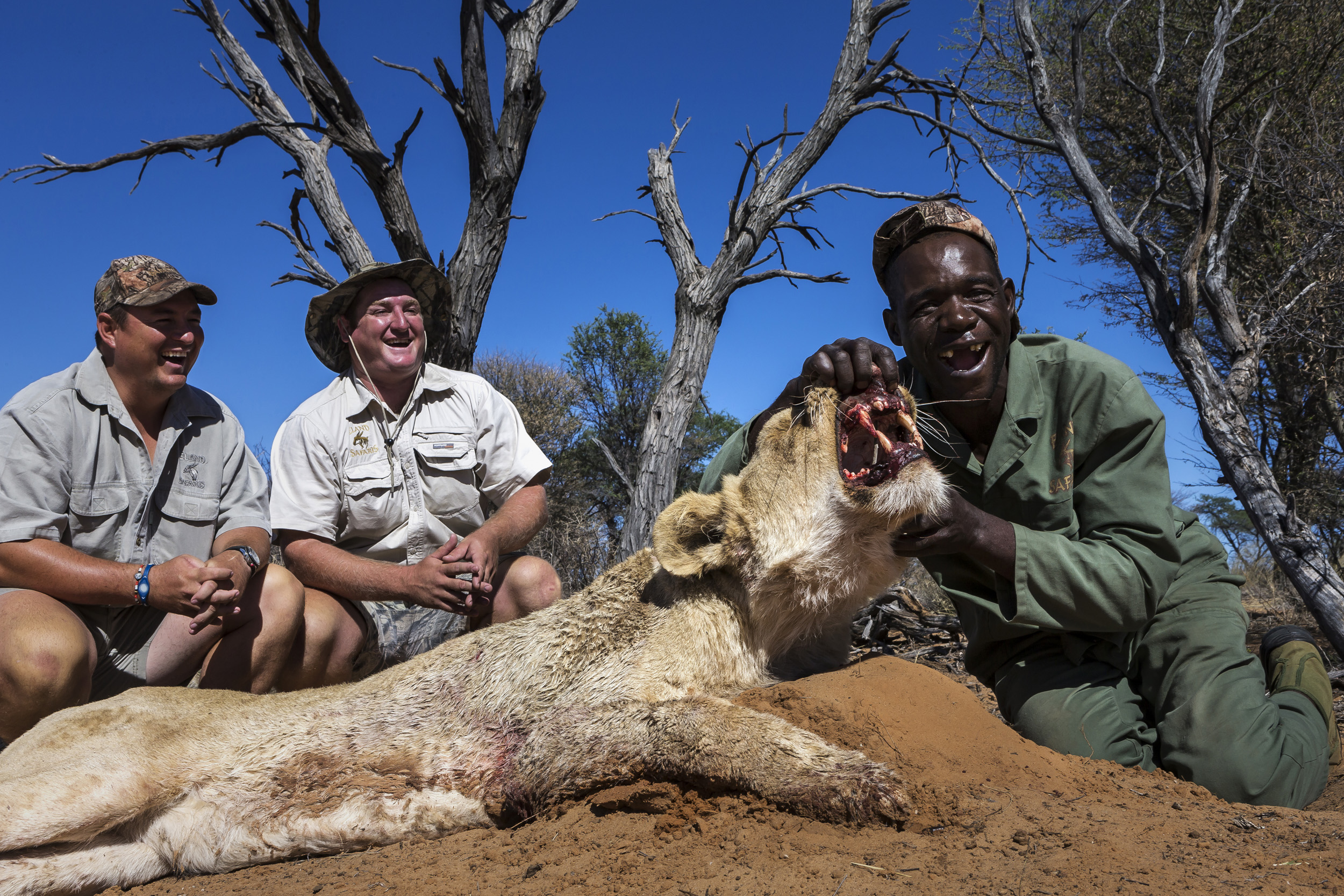
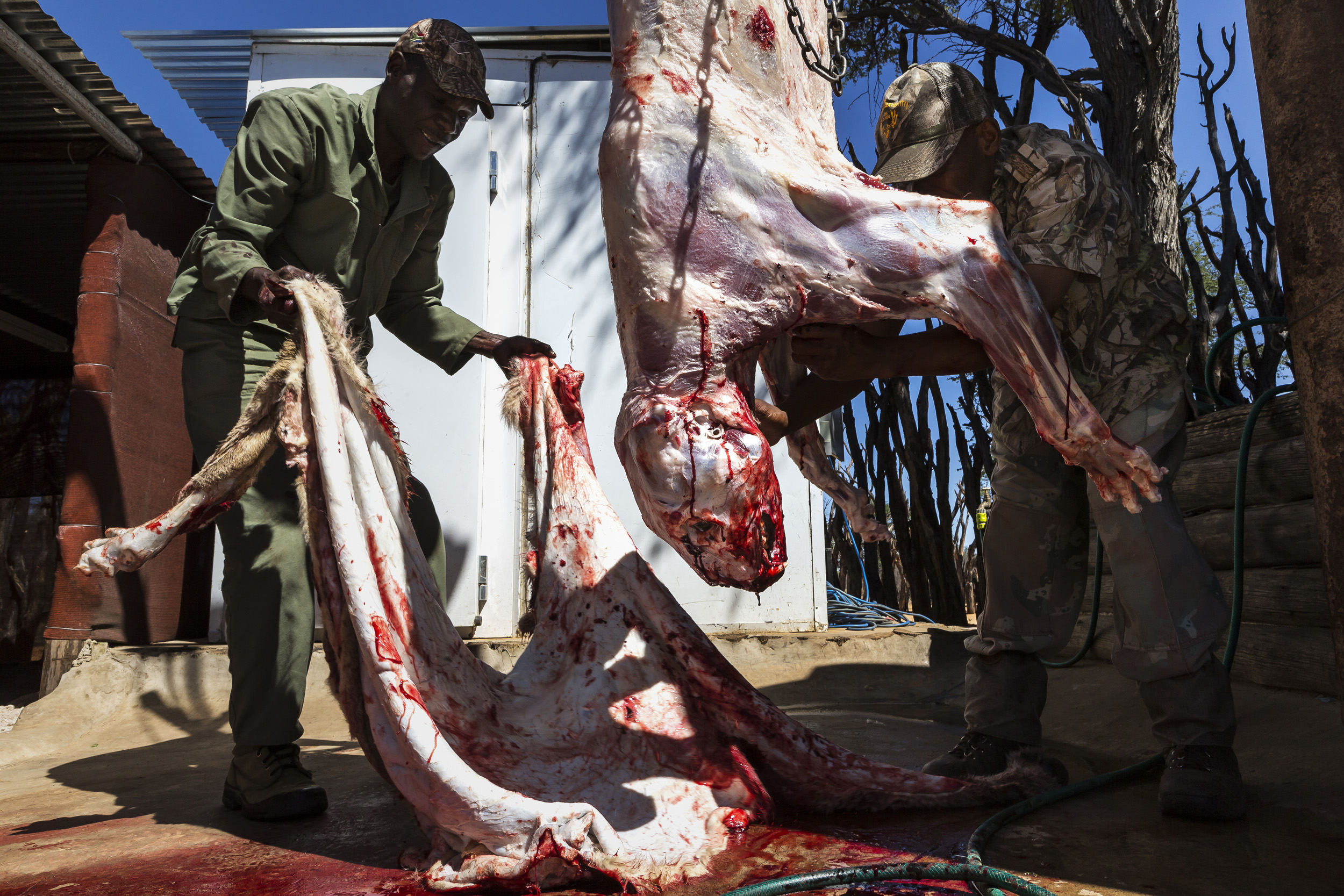
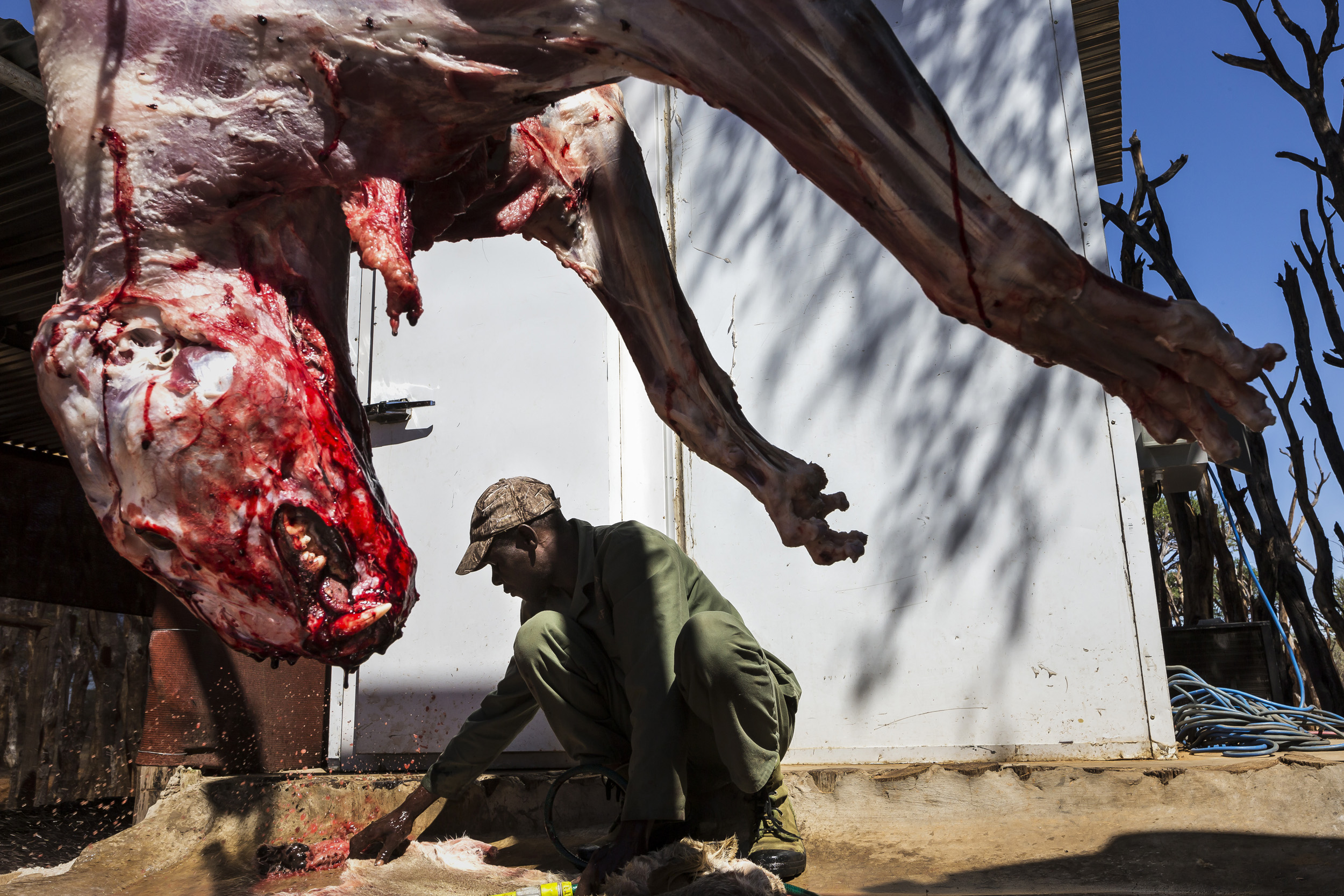
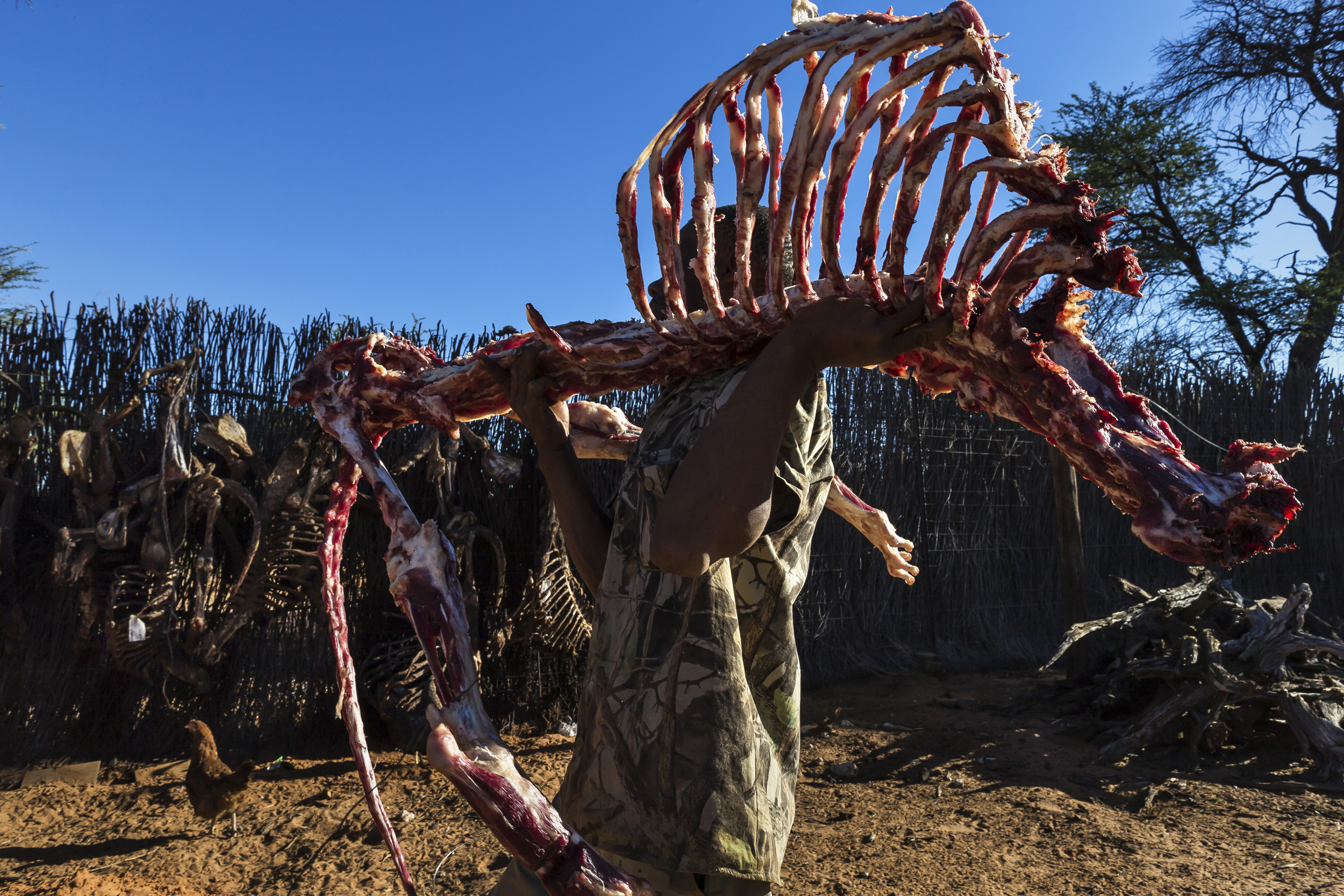
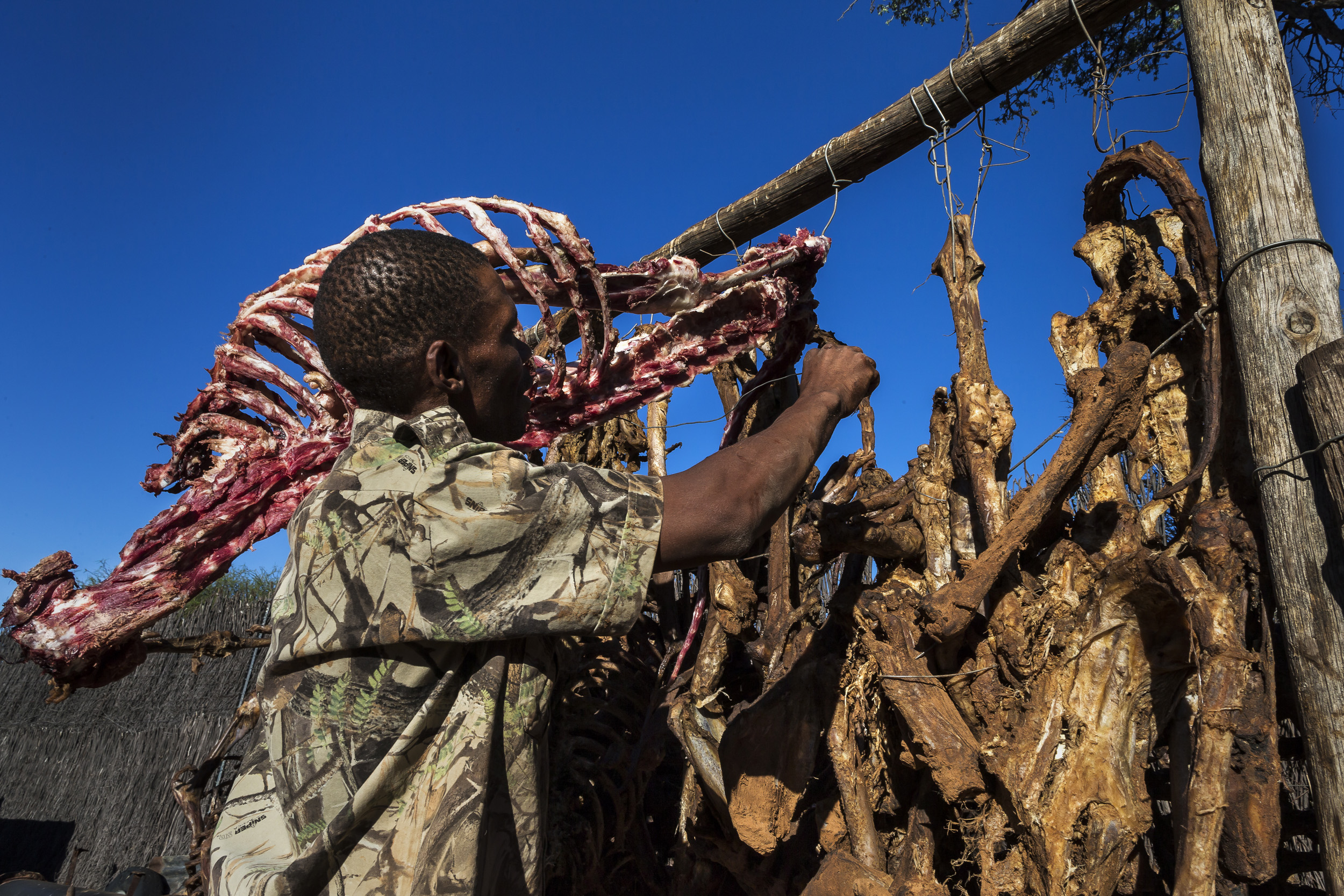
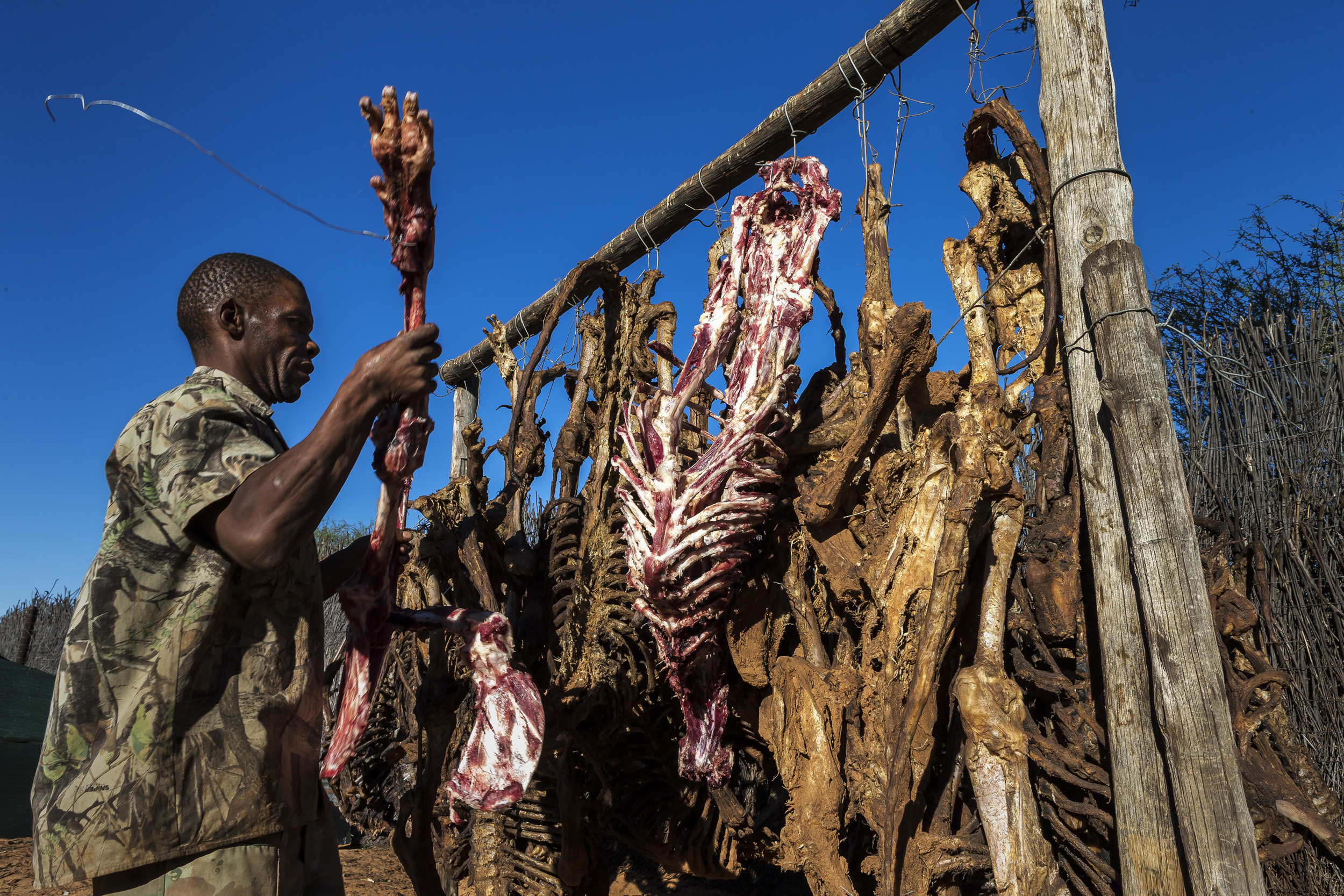
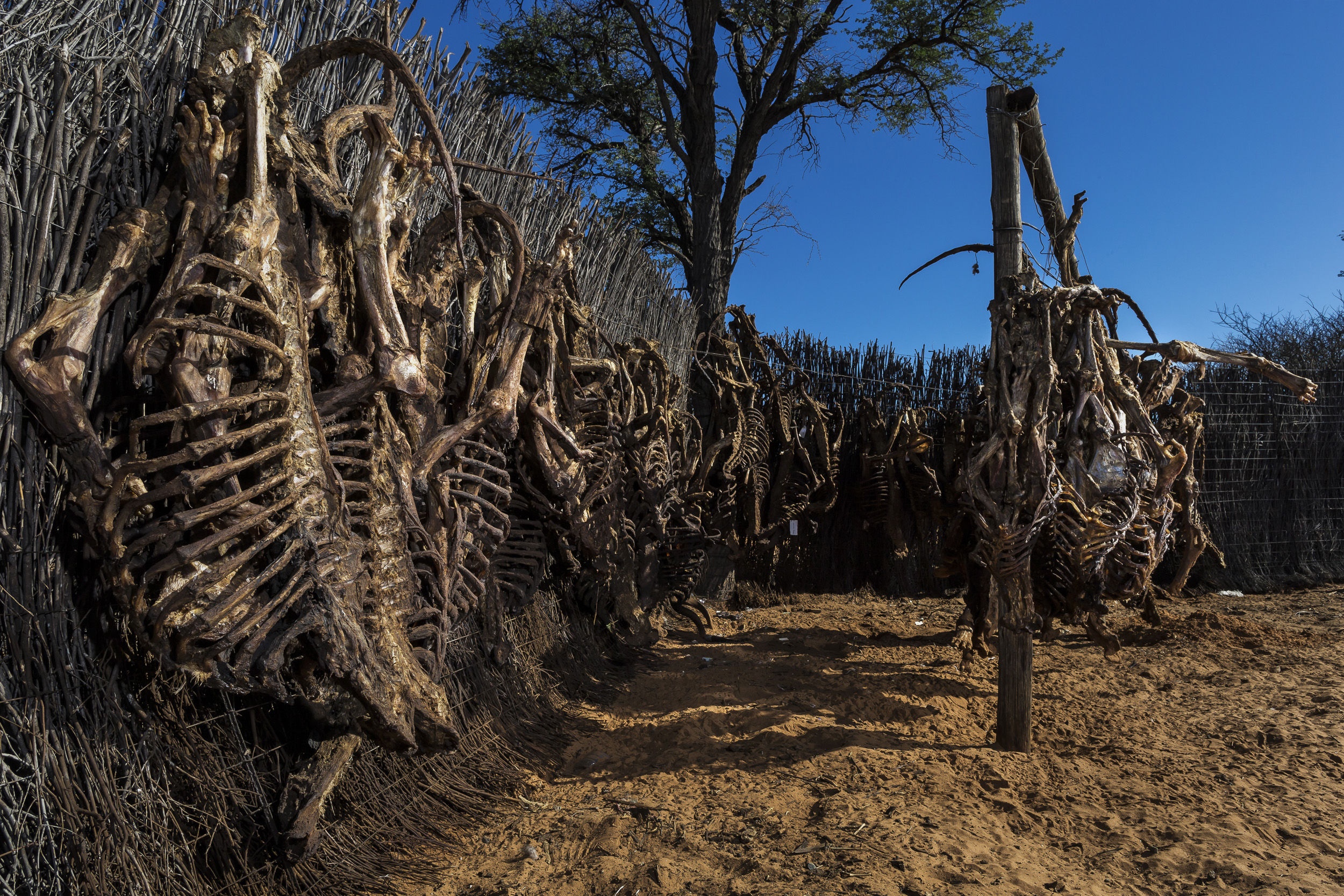
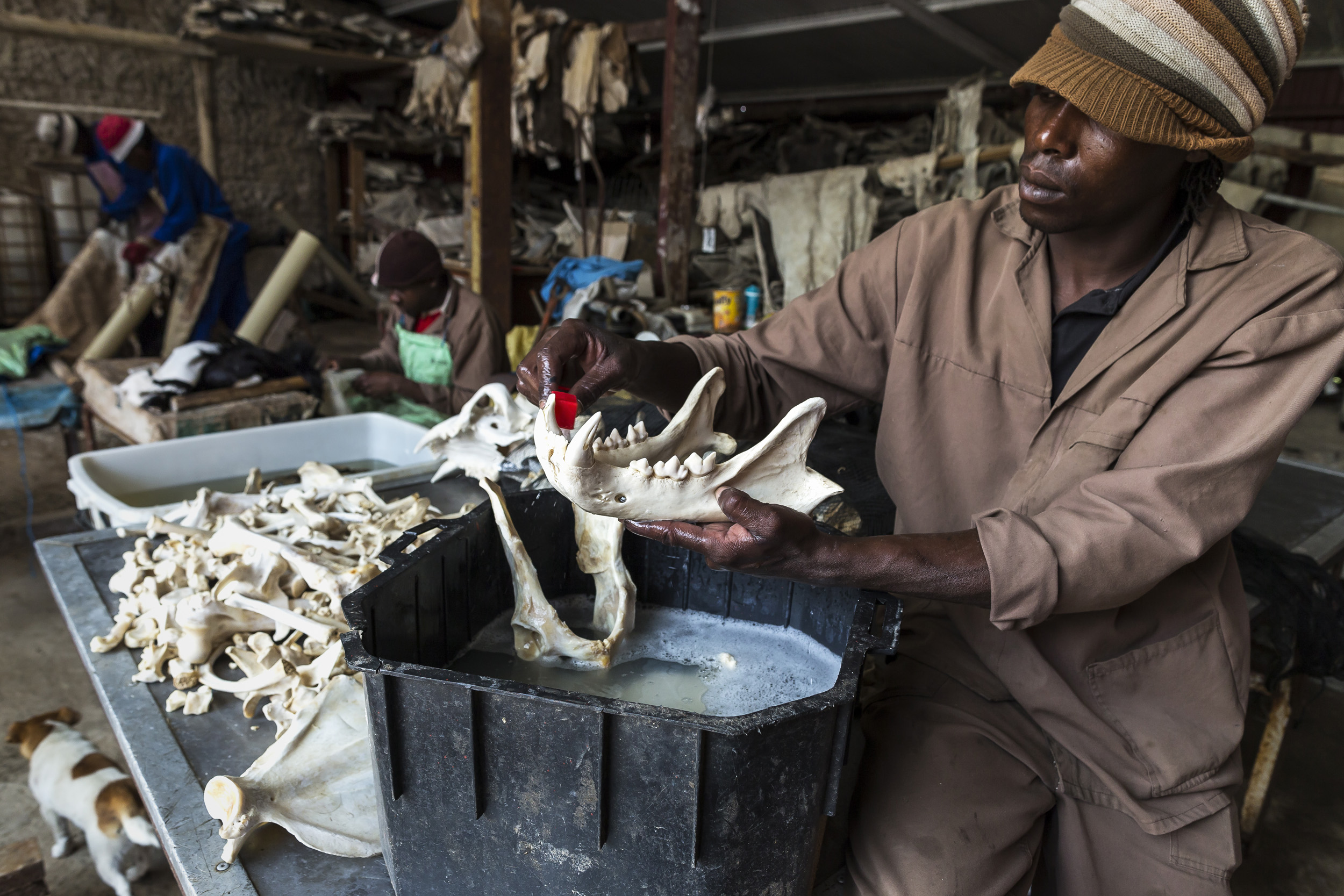
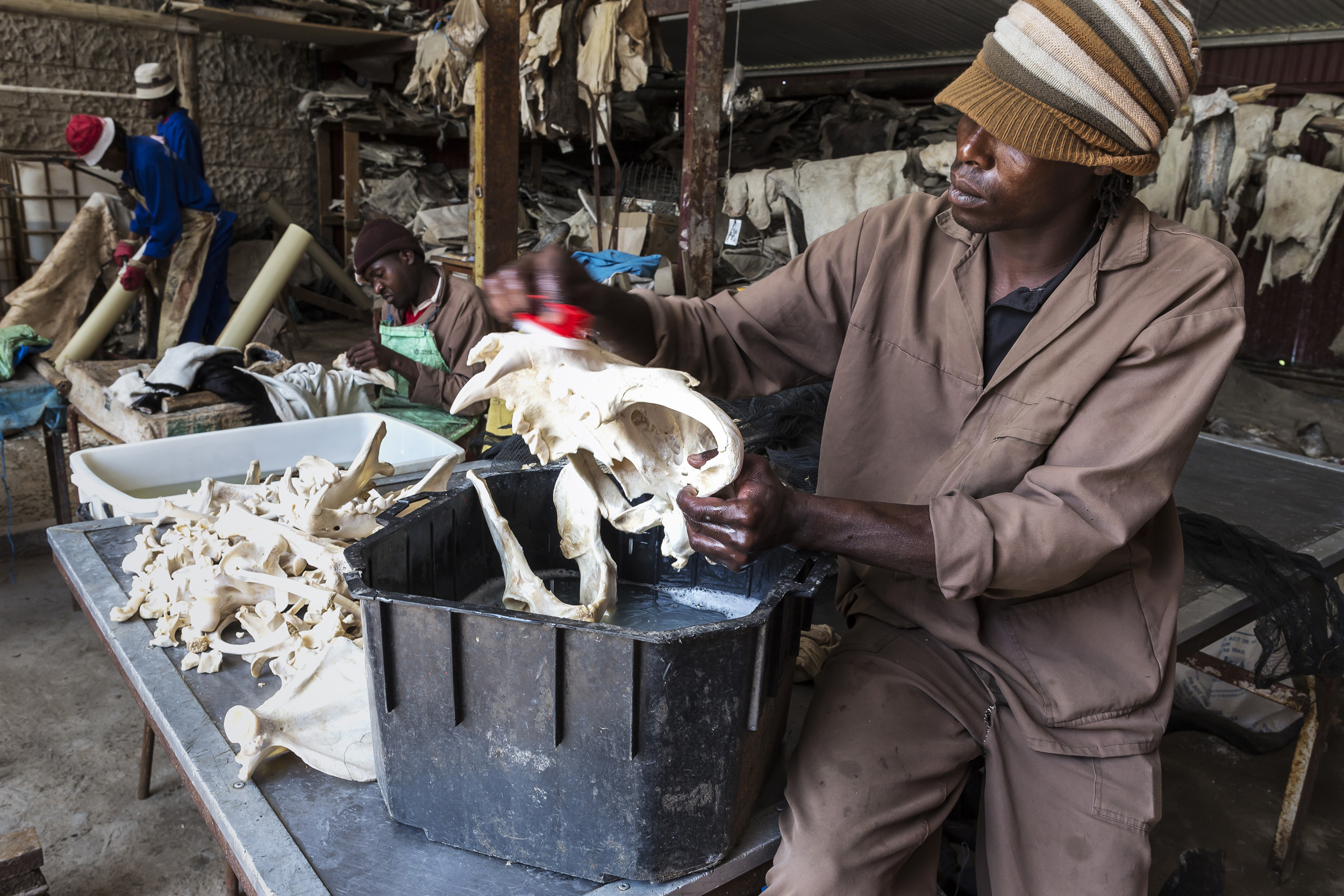
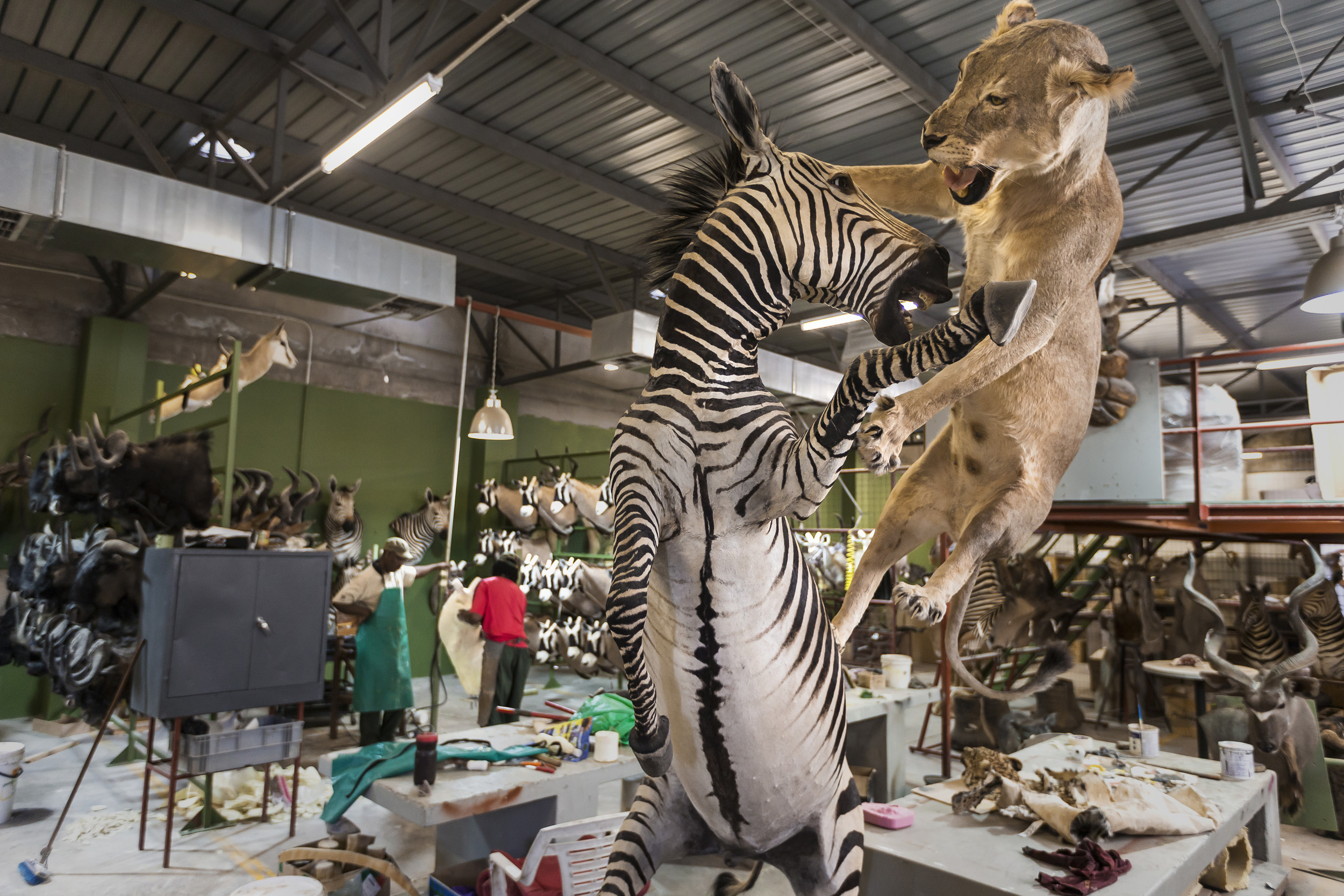
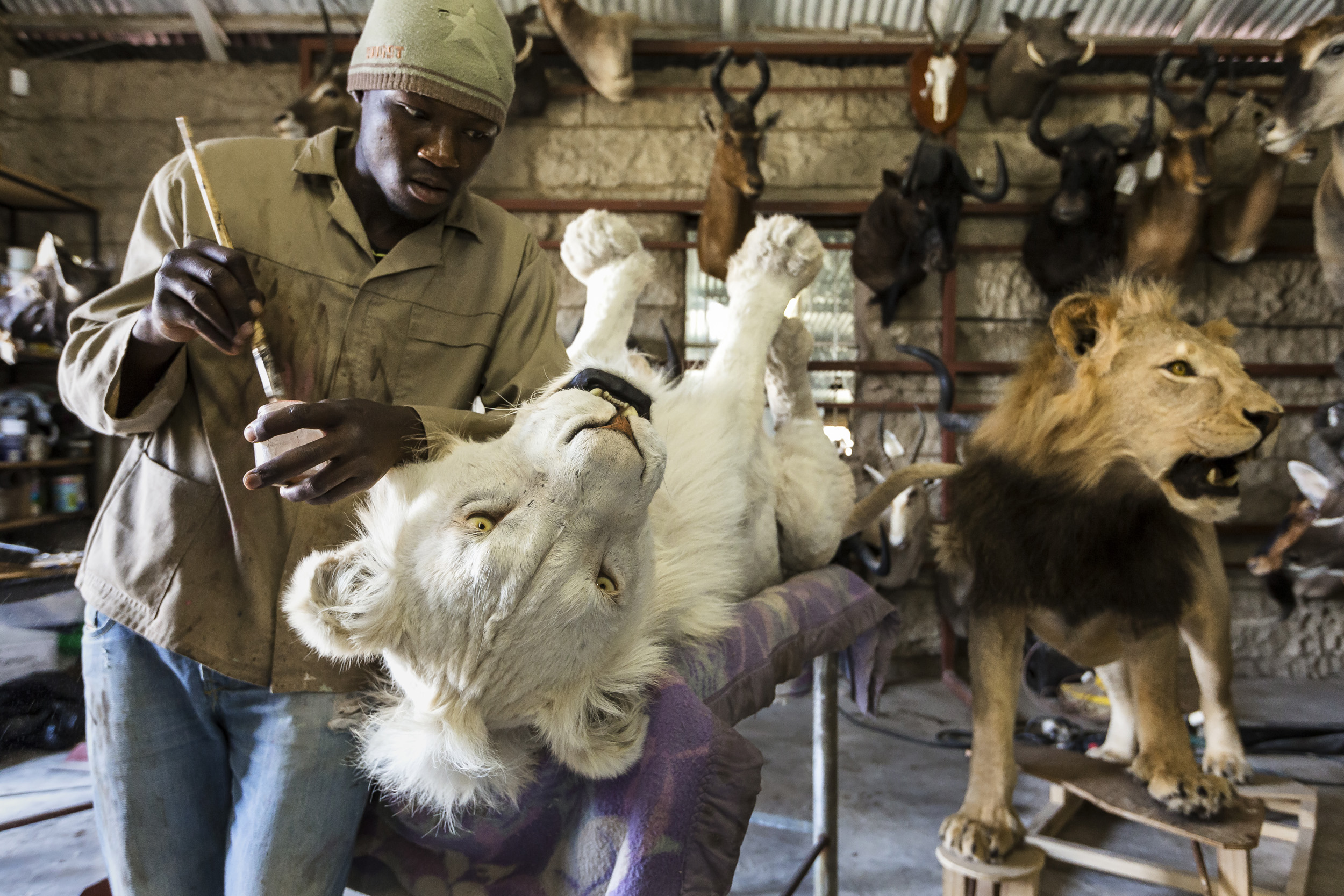
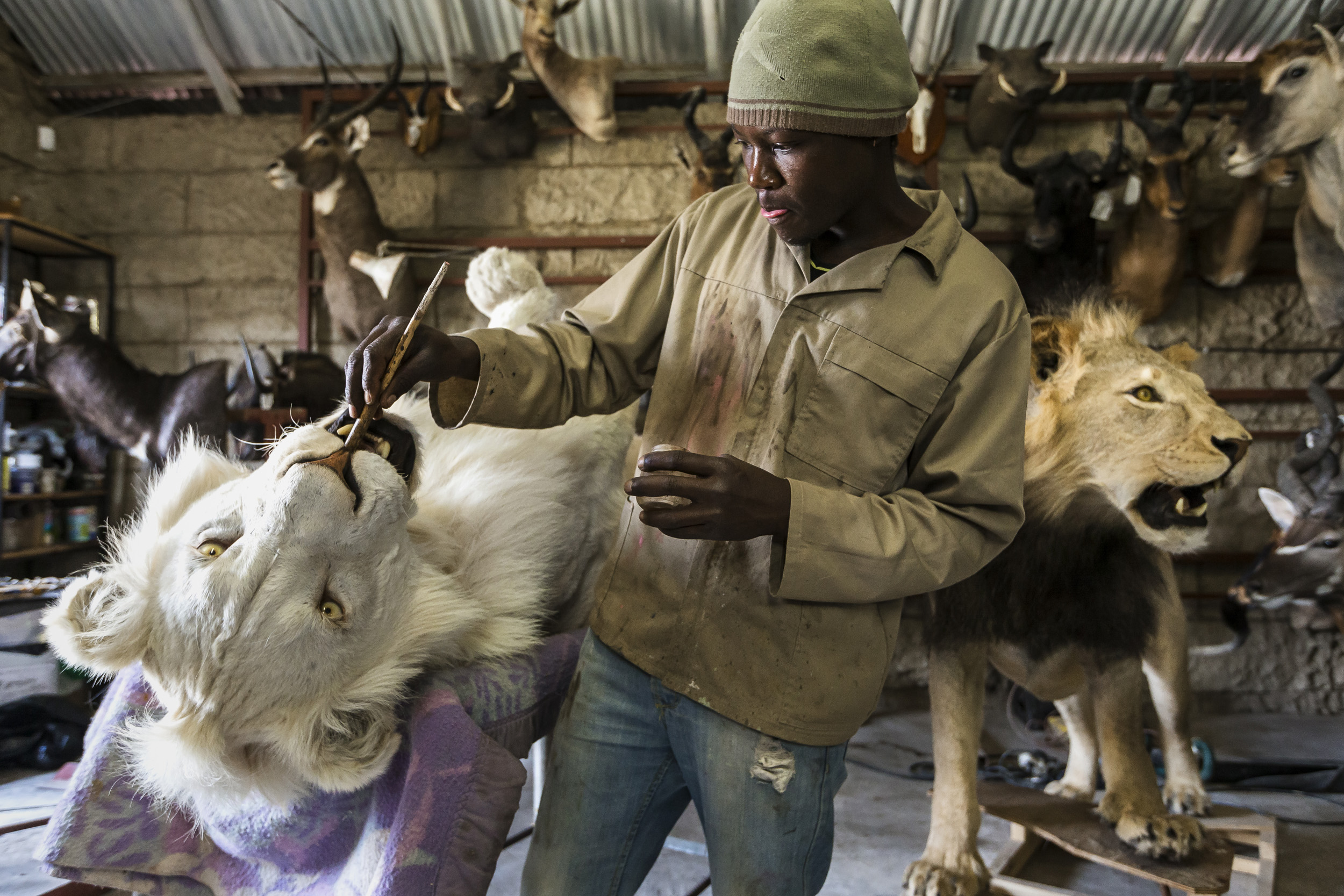


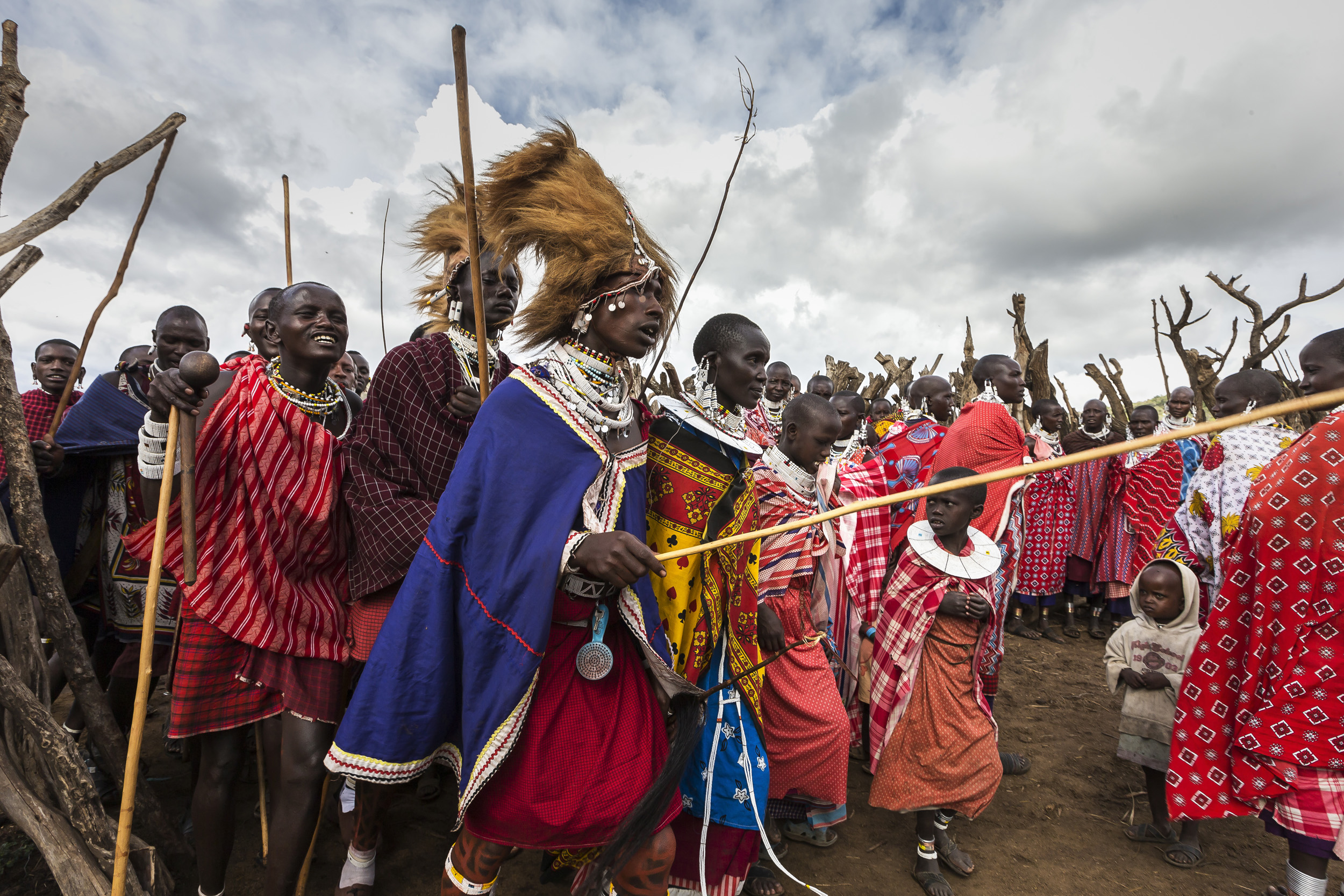
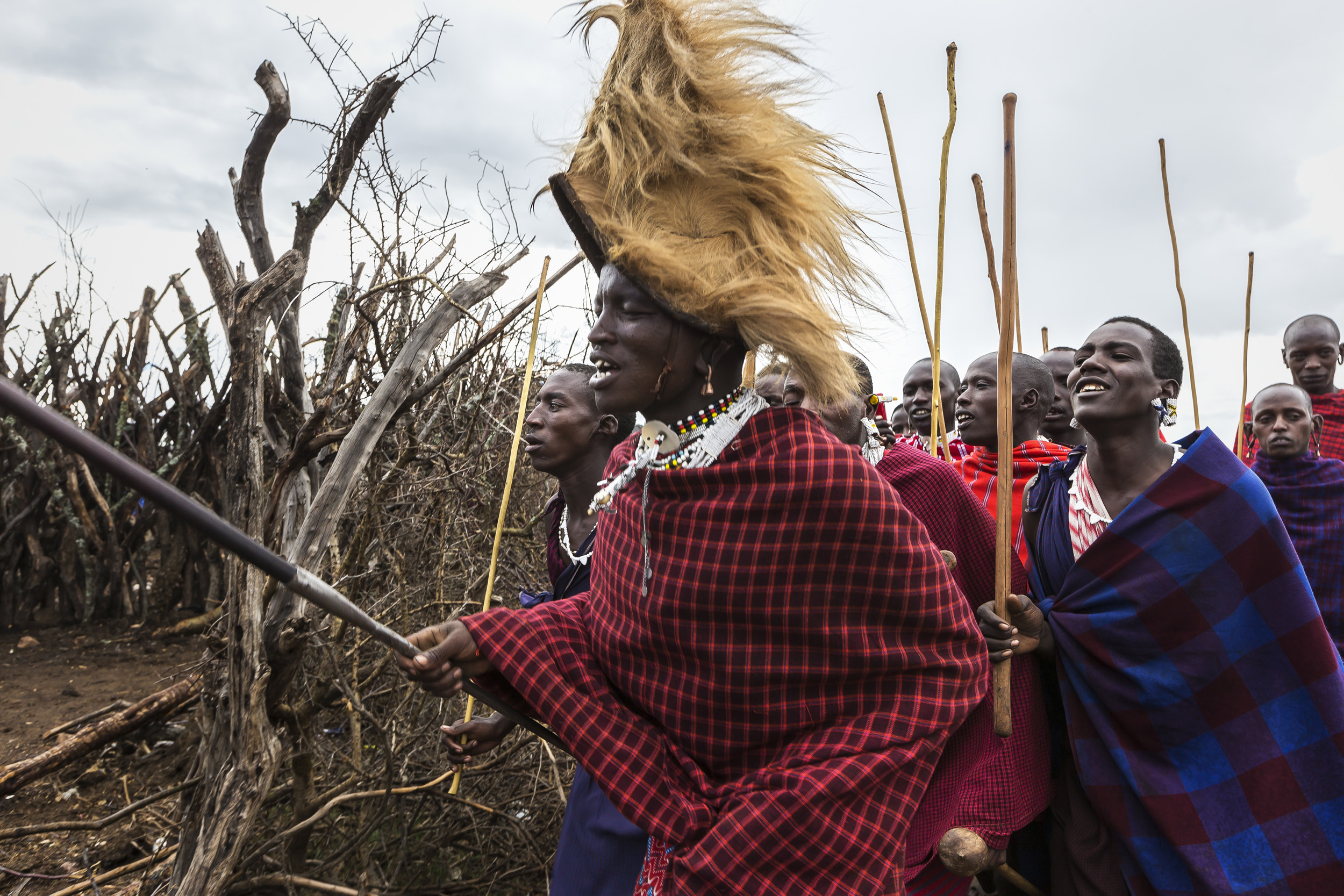


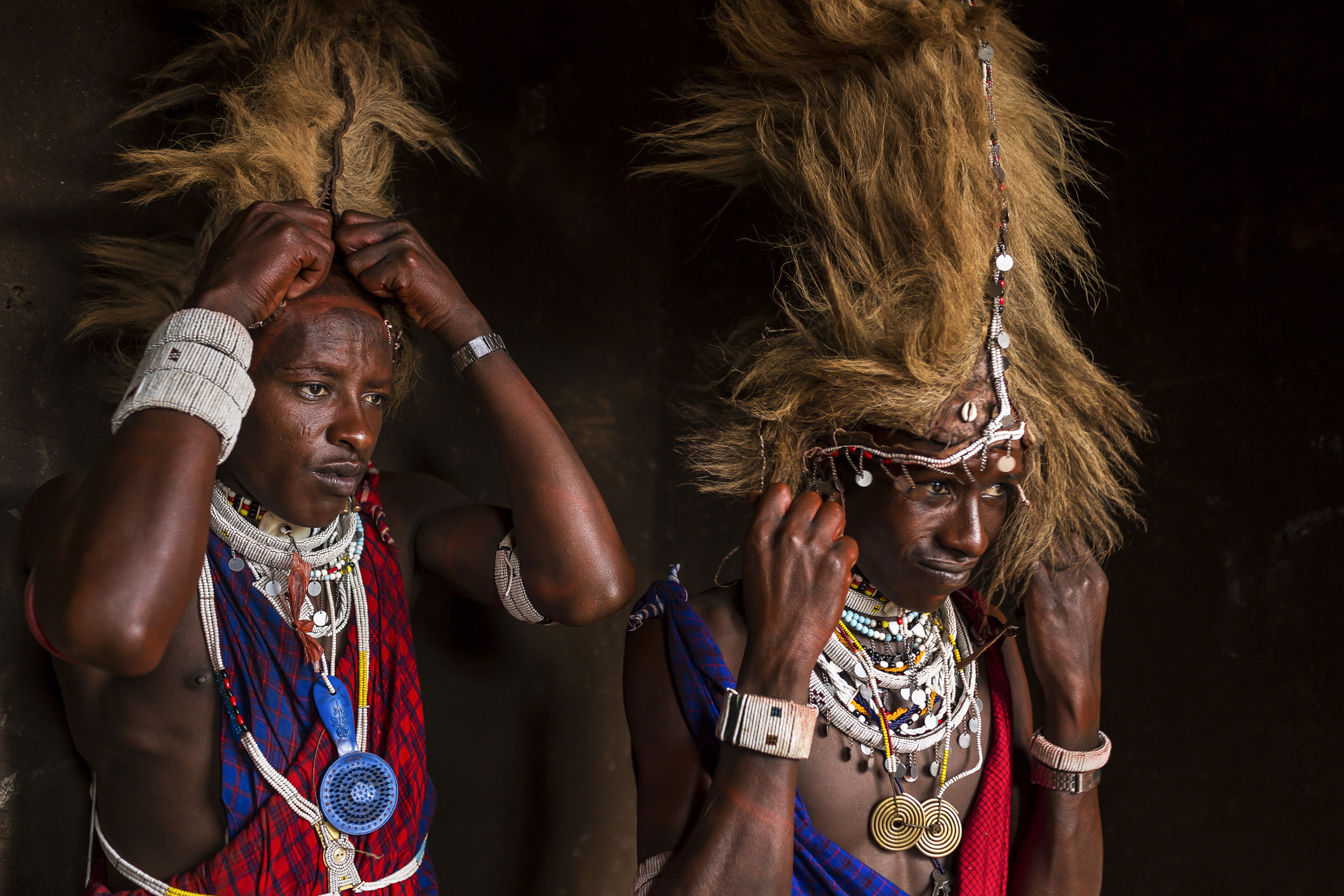
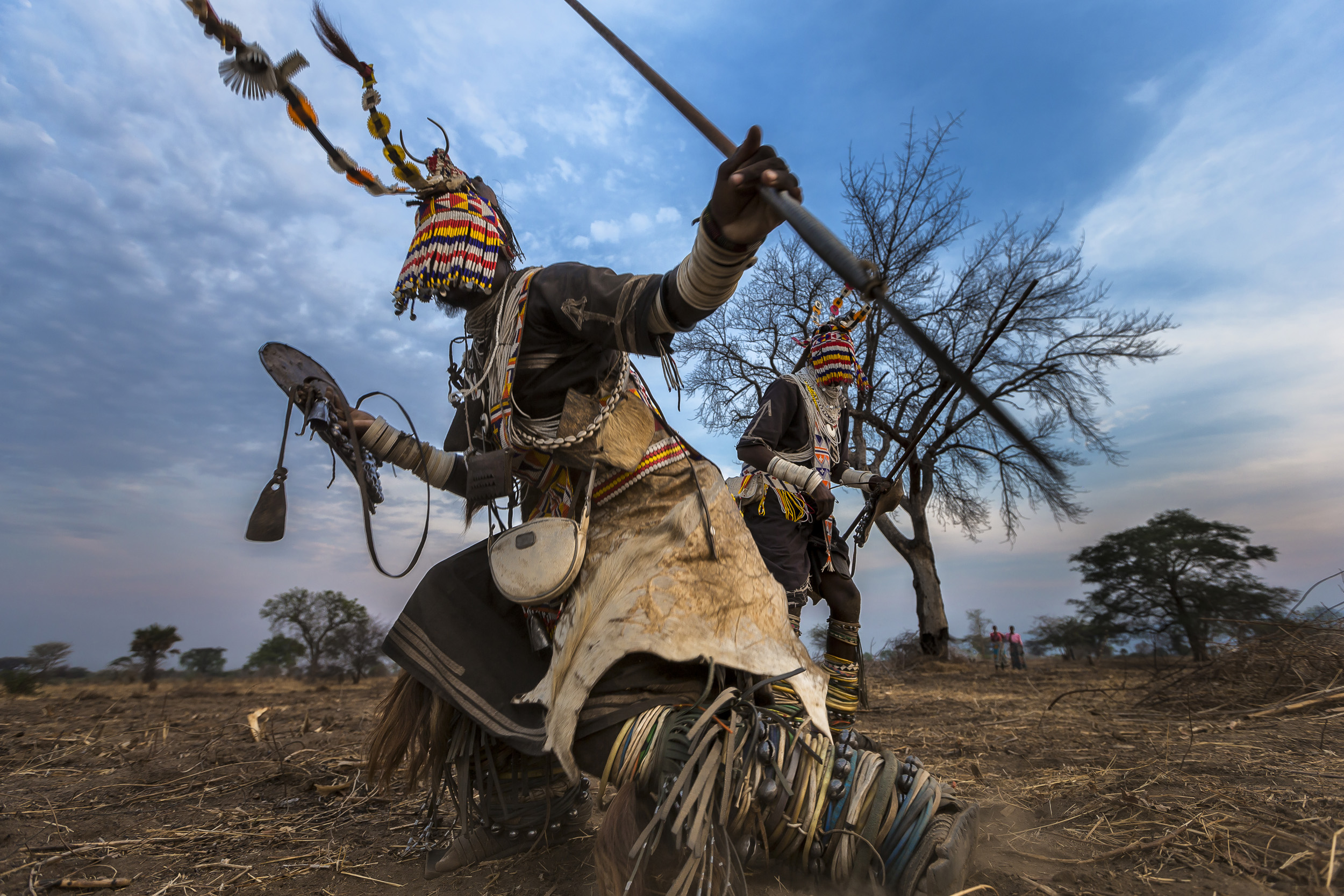
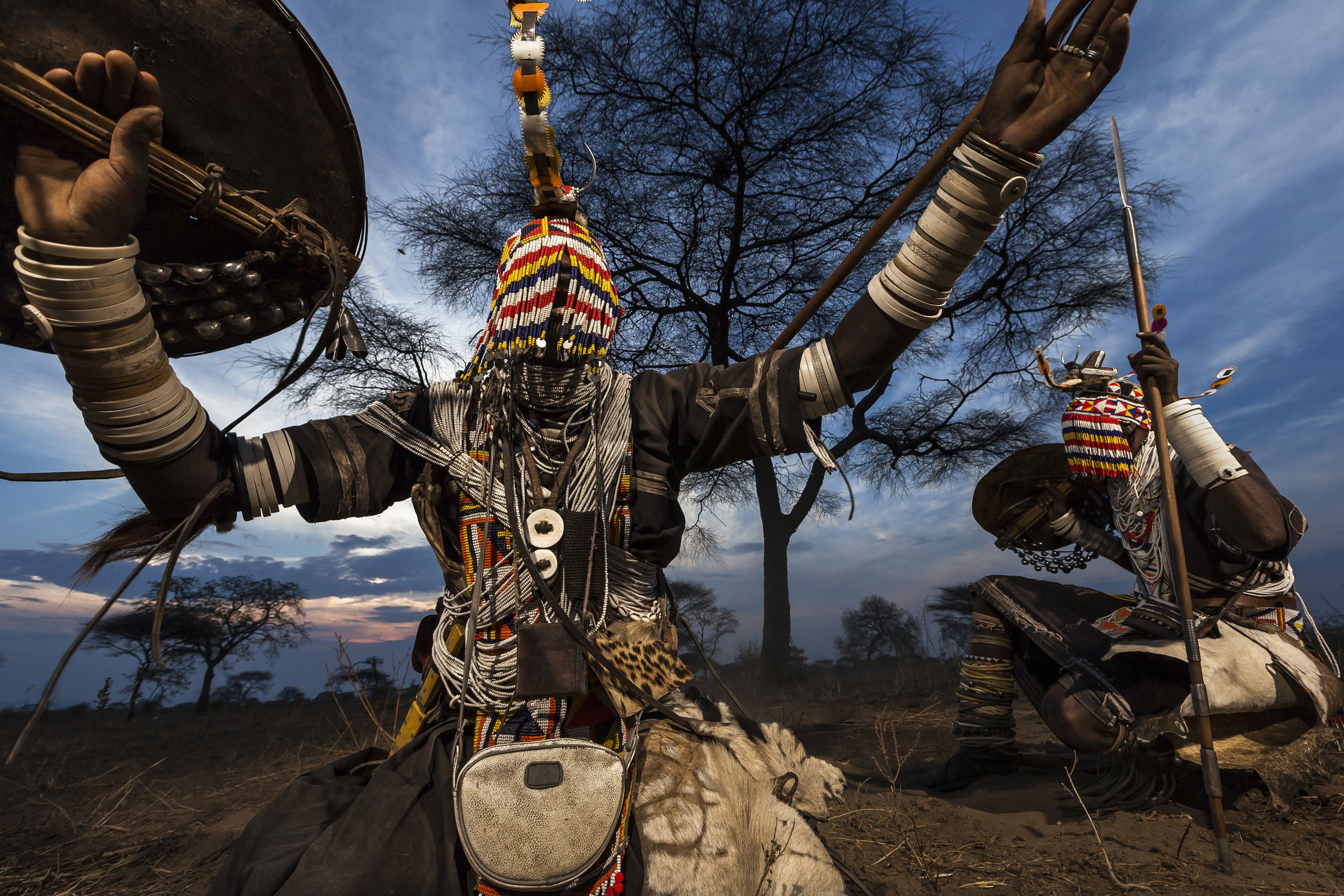

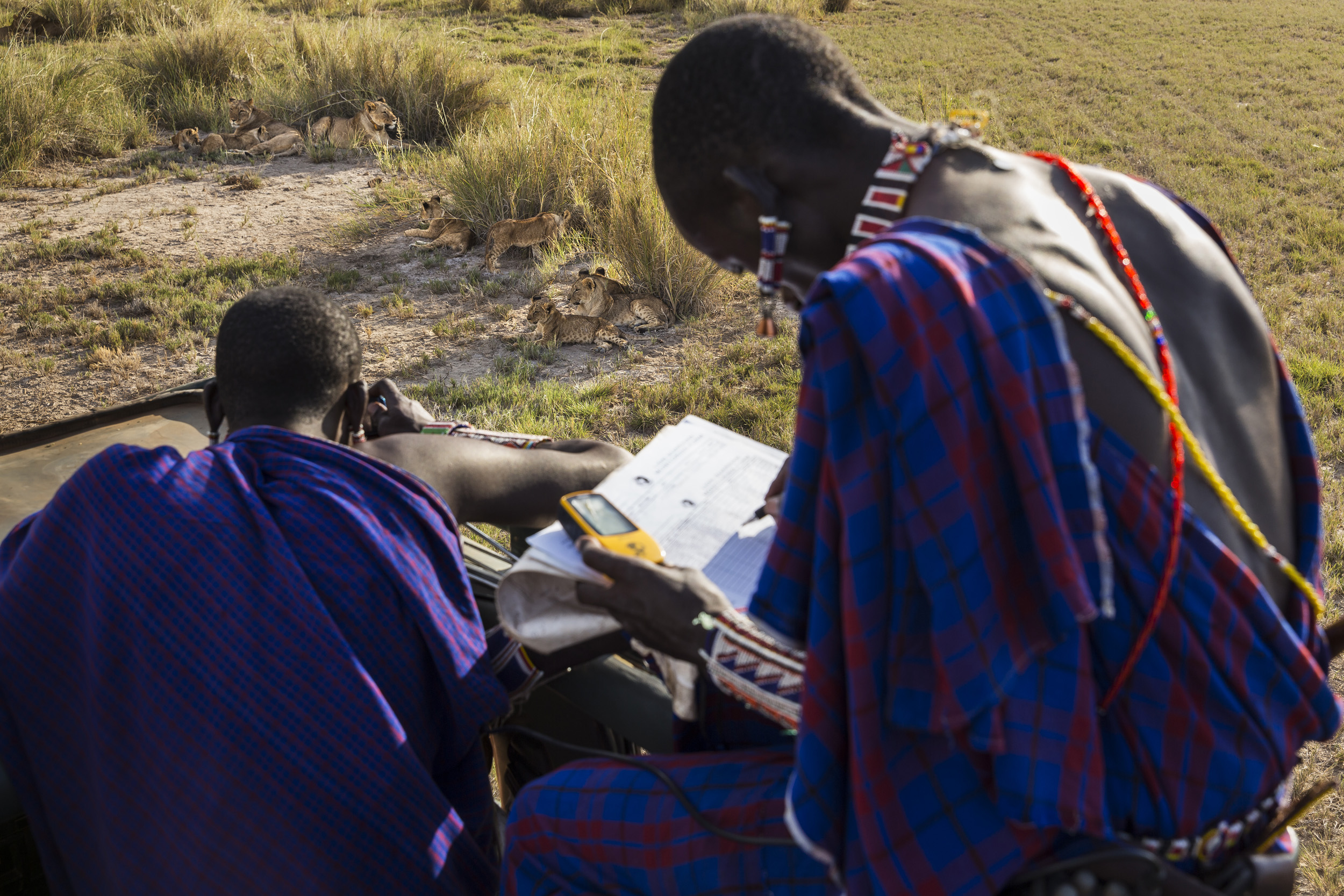

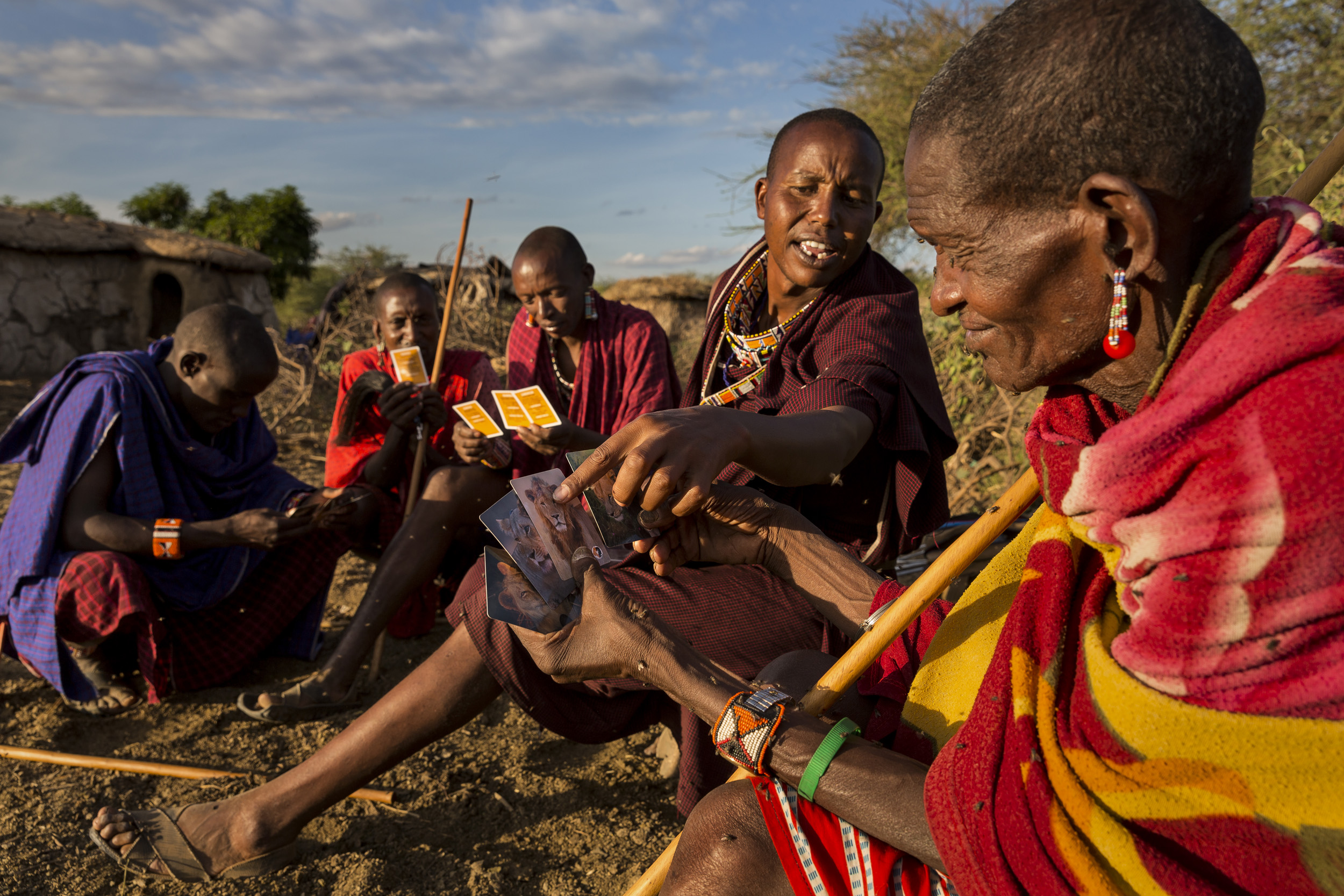

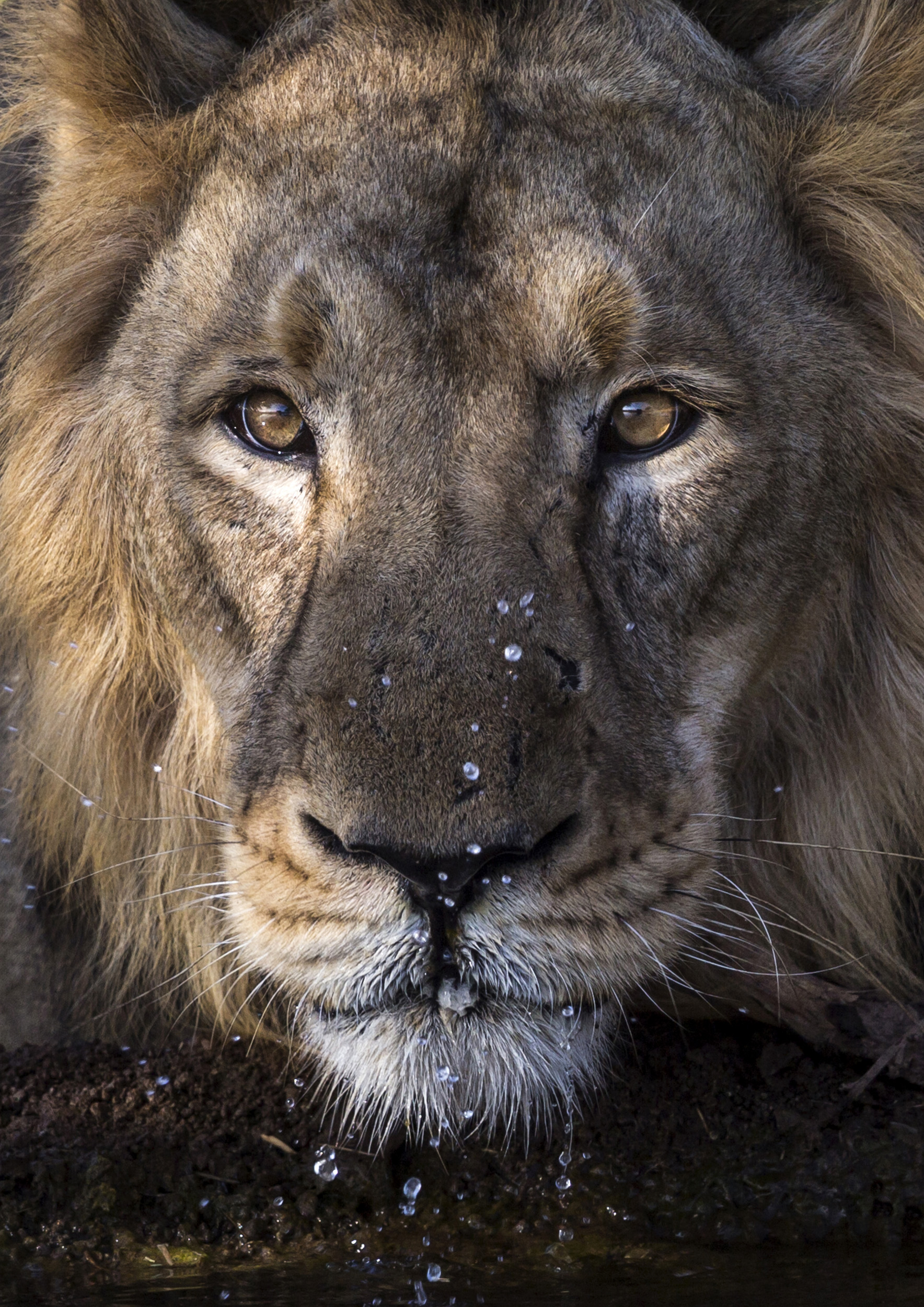
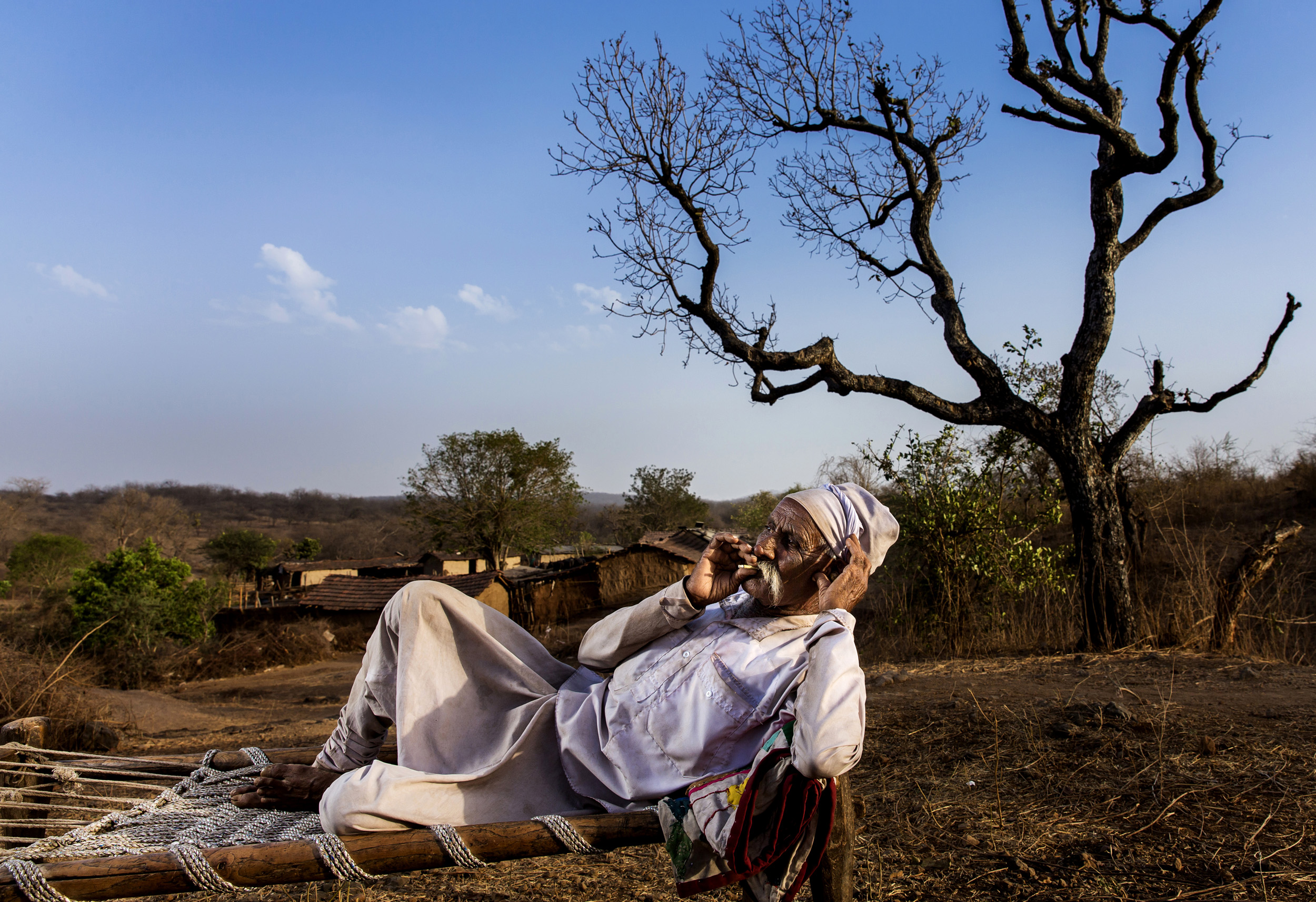

RIFIJI, SELOUS, TANZANIA, 4 MARCH 2013: Yusuf Shabani Difika, 41, lost both his arms to a lion attack on a fishing trip in the region of Selous National Park, Tanzania, 4 March 2013. The attack occured in the evening in 2005. The lion attacked Yusuf and his arms were shredded beyond recovery as he attempted to fend off the lion. He says the lion bit him multiple times on his arms, exposing his bones and ripping off the flesh. Yusuf was rescued by village friends who drove the lion off with sticks and machettes. Yusuf was rushed to a local clinic and then transported to a hospital where doctors had no choice but to amputate what was left of his arms. Yusuf has two children, aged 5 and 3, he has lost the ability to work and is entirely reliant on his father, his uncle and his cousins as well as the kindness of his village for his survival. He says the hardest thing is that he cannot clean himself or go to the bathroom without assistance. His uncle bathes him on a regular basis and his father and cousins help him to dress, eat and drink. Lion attacks on the rural people who farm close to Selous National Park are not uncommon. There is a degree of hypocrisy to the West's expectation that these people should live with lions as if there is no danger. They do not benefit from the wildlife in Selous and they live in danger as there are no fences to the Park and the range of the lions often extends outside of the park. They are especially in vulnerable during the harvest period. Wild Bush pigs are attracted by young maize and rice crops and so people sleep in their fields in order to protect their crops. They are especially exposed to lion attacks at this time. The lions are attracted to the bushpig presence, the pigs are hard to catch and the human beings are close at hand and completely vulnerable and easy to subdue. (Photo by Brent Stirton/Reportage for National Geographic Magazine.)
RIFIJI, SELOUS, TANZANIA, 4 MARCH 2013: Yusuf Shabani Difika, 41, lost both his arms to a lion attack on a fishing trip in the region of Selous National Park, Tanzania, 4 March 2013. The attack occured in the evening in 2005. The lion attacked Yusuf and his arms were shredded beyond recovery as he attempted to fend off the lion. He says the lion bit him multiple times on his arms, exposing his bones and ripping off the flesh. Yusuf was rescued by village friends who drove the lion off with sticks and machettes. Yusuf was rushed to a local clinic and then transported to a hospital where doctors had no choice but to amputate what was left of his arms. Yusuf has two children, aged 5 and 3, he has lost the ability to work and is entirely reliant on his father, his uncle and his cousins as well as the kindness of his village for his survival. He says the hardest thing is that he cannot clean himself or go to the bathroom without assistance. His uncle bathes him on a regular basis and his father and cousins help him to dress, eat and drink. Lion attacks on the rural people who farm close to Selous National Park are not uncommon. There is a degree of hypocrisy to the West's expectation that these people should live with lions as if there is no danger. They do not benefit from the wildlife in Selous and they live in danger as there are no fences to the Park and the range of the lions often extends outside of the park. They are especially in vulnerable during the harvest period. Wild Bush pigs are attracted by young maize and rice crops and so people sleep in their fields in order to protect their crops. They are especially exposed to lion attacks at this time. The lions are attracted to the bushpig presence, the pigs are hard to catch and the human beings are close at hand and completely vulnerable and easy to subdue. (Photo by Brent Stirton/Reportage for National Geographic Magazine.)
RIFIJI, SELOUS, TANZANIA, 4 MARCH 2013: Yusuf Shabani Difika, 41, lost both his arms to a lion attack on a fishing trip in the region of Selous National Park, Tanzania, 4 March 2013. The attack occured in the evening in 2005. The lion attacked Yusuf and his arms were shredded beyond recovery as he attempted to fend off the lion. He says the lion bit him multiple times on his arms, exposing his bones and ripping off the flesh. Yusuf was rescued by village friends who drove the lion off with sticks and machettes. Yusuf was rushed to a local clinic and then transported to a hospital where doctors had no choice but to amputate what was left of his arms. Yusuf has two children, aged 5 and 3, he has lost the ability to work and is entirely reliant on his father, his uncle and his cousins as well as the kindness of his village for his survival. He says the hardest thing is that he cannot clean himself or go to the bathroom without assistance. His uncle bathes him on a regular basis and his father and cousins help him to dress, eat and drink. Lion attacks on the rural people who farm close to Selous National Park are not uncommon. There is a degree of hypocrisy to the West's expectation that these people should live with lions as if there is no danger. They do not benefit from the wildlife in Selous and they live in danger as there are no fences to the Park and the range of the lions often extends outside of the park. They are especially in vulnerable during the harvest period. Wild Bush pigs are attracted by young maize and rice crops and so people sleep in their fields in order to protect their crops. They are especially exposed to lion attacks at this time. The lions are attracted to the bushpig presence, the pigs are hard to catch and the human beings are close at hand and completely vulnerable and easy to subdue. (Photo by Brent Stirton/Reportage for National Geographic Magazine.)
RIFIJI, SELOUS, TANZANIA, 4 MARCH 2013: Yusuf Shabani Difika, 41, lost both his arms to a lion attack on a fishing trip in the region of Selous National Park, Tanzania, 4 March 2013. The attack occured in the evening in 2005. The lion attacked Yusuf and his arms were shredded beyond recovery as he attempted to fend off the lion. He says the lion bit him multiple times on his arms, exposing his bones and ripping off the flesh. Yusuf was rescued by village friends who drove the lion off with sticks and machettes. Yusuf was rushed to a local clinic and then transported to a hospital where doctors had no choice but to amputate what was left of his arms. Yusuf has two children, aged 5 and 3, he has lost the ability to work and is entirely reliant on his father, his uncle and his cousins as well as the kindness of his village for his survival. He says the hardest thing is that he cannot clean himself or go to the bathroom without assistance. His uncle bathes him on a regular basis and his father and cousins help him to dress, eat and drink. Lion attacks on the rural people who farm close to Selous National Park are not uncommon. There is a degree of hypocrisy to the West's expectation that these people should live with lions as if there is no danger. They do not benefit from the wildlife in Selous and they live in danger as there are no fences to the Park and the range of the lions often extends outside of the park. They are especially in vulnerable during the harvest period. Wild Bush pigs are attracted by young maize and rice crops and so people sleep in their fields in order to protect their crops. They are especially exposed to lion attacks at this time. The lions are attracted to the bushpig presence, the pigs are hard to catch and the human beings are close at hand and completely vulnerable and easy to subdue. (Photo by Brent Stirton/Reportage for National Geographic Magazine.)
WOLMARANSSTAD, SOUTH AFRICA, SEPTEMBER 2012: Images of breeding cages for lions on Buisfontein, a lion breeding farm outside of Wolmaransstad, South Africa, September 31, 2012. These lions will be raised to maturity, used for breeding purposes and when old enough will be sold to hunters for lion hunts in South Africa. Seven years is the preferred age. As controversial as the practice is, it is legal under the South African judicial system. Two systems for the hunts exist in two different provinces of South Africa. One practice sees the lion released for a minimal 96 hours into a 3000-hectare area before the hunt can begin. The other practice sees the lion released for 3 months into a minimum 3000-hectare area before it can be hunted. Recent global research points to the fact that hunting and breeding programs are necessary components for the survival of lions into the future. These phenomenons go some way towards lessening pressure on wild lion populations as well as preserving a strong lion DNA base and a future repository for lions for areas where they have been decimated. The hunting industry is also a strong employer in Africa, with over 1.4 million square kilometers given over to hunting concessions. This is a landmass more than 20% higher than that given over to Wildlife Conservation areas. More than 18000 hunters come to Africa every year and the money high-end dangerous game hunting brings to the continent goes some way to preserving the land mass set aside for hunting. The South Africa Predators Breeders association is making strides towards a more regulated industry, with a charter and code of conduct in the works, which is expected to bring a stronger emphasis on ethical practice into play. (Photo by Brent Stirton/Reportage for National Geographic Magazine.)
WOLMARANSSTAD, SOUTH AFRICA, SEPTEMBER 2012: Images of breeding cages for lion cubs on Buisfontein, a lion breeding farm outside of Wolmaransstad, South Africa, September 31, 2012. These lions will be raised to maturity, used for breeding purposes and when old enough will be sold to hunters for lion hunts in South Africa. Seven years is the preferred age. As controversial as the practice is, it is legal under the South African judicial system. Two systems for the hunts exist in two different provinces of South Africa. One practice sees the lion released for a minimal 96 hours into a 3000-hectare area before the hunt can begin. The other practice sees the lion released for 3 months into a minimum 3000-hectare area before it can be hunted. Recent global research points to the fact that hunting and breeding programs are necessary components for the survival of lions into the future. These phenomenons go some way towards lessening pressure on wild lion populations as well as preserving a strong lion DNA base and a future repository for lions for areas where they have been decimated. The hunting industry is also a strong employer in Africa, with over 1.4 million square kilometers given over to hunting concessions. This is a landmass more than 20% higher than that given over to Wildlife Conservation areas. More than 18000 hunters come to Africa every year and the money high-end dangerous game hunting brings to the continent goes some way to preserving the land mass set aside for hunting. The South Africa Predators Breeders association is making strides towards a more regulated industry, with a charter and code of conduct in the works, which is expected to bring a stronger emphasis on ethical practice into play. (Photo by Brent Stirton/Reportage for National Geographic Magazine.)
WOLMARANSSTAD, SOUTH AFRICA, SEPTEMBER 2012: Images of breeding cages for lions on Buisfontein, a lion breeding farm outside of Wolmaransstad, South Africa, September 31, 2012. These lions will be raised to maturity, used for breeding purposes and when old enough will be sold to hunters for lion hunts in South Africa. Seven years is the preferred age. As controversial as the practice is, it is legal under the South African judicial system. Two systems for the hunts exist in two different provinces of South Africa. One practice sees the lion released for a minimal 96 hours into a 3000-hectare area before the hunt can begin. The other practice sees the lion released for 3 months into a minimum 3000-hectare area before it can be hunted. Recent global research points to the fact that hunting and breeding programs are necessary components for the survival of lions into the future. These phenomenons go some way towards lessening pressure on wild lion populations as well as preserving a strong lion DNA base and a future repository for lions for areas where they have been decimated. The hunting industry is also a strong employer in Africa, with over 1.4 million square kilometers given over to hunting concessions. This is a landmass more than 20% higher than that given over to Wildlife Conservation areas. More than 18000 hunters come to Africa every year and the money high-end dangerous game hunting brings to the continent goes some way to preserving the land mass set aside for hunting. The South Africa Predators Breeders association is making strides towards a more regulated industry, with a charter and code of conduct in the works, which is expected to bring a stronger emphasis on ethical practice into play. (Photo by Brent Stirton/Reportage for National Geographic Magazine.)
WOLMARANSSTAD, SOUTH AFRICA, SEPTEMBER 2012: Images of breeding cages for lions on Buisfontein, a lion breeding farm outside of Wolmaransstad, South Africa, September 31, 2012. These lions will be raised to maturity, used for breeding purposes and when old enough will be sold to hunters for lion hunts in South Africa. Seven years is the preferred age. As controversial as the practice is, it is legal under the South African judicial system. Two systems for the hunts exist in two different provinces of South Africa. One practice sees the lion released for a minimal 96 hours into a 3000-hectare area before the hunt can begin. The other practice sees the lion released for 3 months into a minimum 3000-hectare area before it can be hunted. Recent global research points to the fact that hunting and breeding programs are necessary components for the survival of lions into the future. These phenomenons go some way towards lessening pressure on wild lion populations as well as preserving a strong lion DNA base and a future repository for lions for areas where they have been decimated. The hunting industry is also a strong employer in Africa, with over 1.4 million square kilometers given over to hunting concessions. This is a landmass more than 20% higher than that given over to Wildlife Conservation areas. More than 18000 hunters come to Africa every year and the money high-end dangerous game hunting brings to the continent goes some way to preserving the land mass set aside for hunting. The South Africa Predators Breeders association is making strides towards a more regulated industry, with a charter and code of conduct in the works, which is expected to bring a stronger emphasis on ethical practice into play. (Photo by Brent Stirton/Reportage for National Geographic Magazine.)
WOLMARANSSTAD, SOUTH AFRICA, SEPTEMBER 2012: Images of breeding cages for lions on Buisfontein, a lion breeding farm outside of Wolmaransstad, South Africa, September 31, 2012. These lions will be raised to maturity, used for breeding purposes and when old enough will be sold to hunters for lion hunts in South Africa. Seven years is the preferred age. As controversial as the practice is, it is legal under the South African judicial system. Two systems for the hunts exist in two different provinces of South Africa. One practice sees the lion released for a minimal 96 hours into a 3000-hectare area before the hunt can begin. The other practice sees the lion released for 3 months into a minimum 3000-hectare area before it can be hunted. Recent global research points to the fact that hunting and breeding programs are necessary components for the survival of lions into the future. These phenomenons go some way towards lessening pressure on wild lion populations as well as preserving a strong lion DNA base and a future repository for lions for areas where they have been decimated. The hunting industry is also a strong employer in Africa, with over 1.4 million square kilometers given over to hunting concessions. This is a landmass more than 20% higher than that given over to Wildlife Conservation areas. More than 18000 hunters come to Africa every year and the money high-end dangerous game hunting brings to the continent goes some way to preserving the land mass set aside for hunting. The South Africa Predators Breeders association is making strides towards a more regulated industry, with a charter and code of conduct in the works, which is expected to bring a stronger emphasis on ethical practice into play. (Photo by Brent Stirton/Reportage for National Geographic Magazine.)
WOLMARANSSTAD, SOUTH AFRICA, SEPTEMBER 2012: Images of breeding cages for lions on Buisfontein, a lion breeding farm outside of Wolmaransstad, South Africa, September 31, 2012. These lions will be raised to maturity, used for breeding purposes and when old enough will be sold to hunters for lion hunts in South Africa. Seven years is the preferred age. As controversial as the practice is, it is legal under the South African judicial system. Two systems for the hunts exist in two different provinces of South Africa. One practice sees the lion released for a minimal 96 hours into a 3000-hectare area before the hunt can begin. The other practice sees the lion released for 3 months into a minimum 3000-hectare area before it can be hunted. Recent global research points to the fact that hunting and breeding programs are necessary components for the survival of lions into the future. These phenomenons go some way towards lessening pressure on wild lion populations as well as preserving a strong lion DNA base and a future repository for lions for areas where they have been decimated. The hunting industry is also a strong employer in Africa, with over 1.4 million square kilometers given over to hunting concessions. This is a landmass more than 20% higher than that given over to Wildlife Conservation areas. More than 18000 hunters come to Africa every year and the money high-end dangerous game hunting brings to the continent goes some way to preserving the land mass set aside for hunting. The South Africa Predators Breeders association is making strides towards a more regulated industry, with a charter and code of conduct in the works, which is expected to bring a stronger emphasis on ethical practice into play. (Photo by Brent Stirton/Reportage for National Geographic Magazine.)
WOLMARANSSTAD, SOUTH AFRICA, SEPTEMBER 2012: Images of breeding cages for lions on Buisfontein, a lion breeding farm outside of Wolmaransstad, South Africa, September 31, 2012. These lions will be raised to maturity, used for breeding purposes and when old enough will be sold to hunters for lion hunts in South Africa. Seven years is the preferred age. As controversial as the practice is, it is legal under the South African judicial system. Two systems for the hunts exist in two different provinces of South Africa. One practice sees the lion released for a minimal 96 hours into a 3000-hectare area before the hunt can begin. The other practice sees the lion released for 3 months into a minimum 3000-hectare area before it can be hunted. Recent global research points to the fact that hunting and breeding programs are necessary components for the survival of lions into the future. These phenomenons go some way towards lessening pressure on wild lion populations as well as preserving a strong lion DNA base and a future repository for lions for areas where they have been decimated. The hunting industry is also a strong employer in Africa, with over 1.4 million square kilometers given over to hunting concessions. This is a landmass more than 20% higher than that given over to Wildlife Conservation areas. More than 18000 hunters come to Africa every year and the money high-end dangerous game hunting brings to the continent goes some way to preserving the land mass set aside for hunting. The South Africa Predators Breeders association is making strides towards a more regulated industry, with a charter and code of conduct in the works, which is expected to bring a stronger emphasis on ethical practice into play. (Photo by Brent Stirton/Reportage for National Geographic Magazine.)
WOLMARANSSTAD, SOUTH AFRICA, SEPTEMBER 2012: Images of breeding cages for lions on Buisfontein, a lion breeding farm outside of Wolmaransstad, South Africa, September 31, 2012. These lions will be raised to maturity, used for breeding purposes and when old enough will be sold to hunters for lion hunts in South Africa. Seven years is the preferred age. As controversial as the practice is, it is legal under the South African judicial system. Two systems for the hunts exist in two different provinces of South Africa. One practice sees the lion released for a minimal 96 hours into a 3000-hectare area before the hunt can begin. The other practice sees the lion released for 3 months into a minimum 3000-hectare area before it can be hunted. Recent global research points to the fact that hunting and breeding programs are necessary components for the survival of lions into the future. These phenomenons go some way towards lessening pressure on wild lion populations as well as preserving a strong lion DNA base and a future repository for lions for areas where they have been decimated. The hunting industry is also a strong employer in Africa, with over 1.4 million square kilometers given over to hunting concessions. This is a landmass more than 20% higher than that given over to Wildlife Conservation areas. More than 18000 hunters come to Africa every year and the money high-end dangerous game hunting brings to the continent goes some way to preserving the land mass set aside for hunting. The South Africa Predators Breeders association is making strides towards a more regulated industry, with a charter and code of conduct in the works, which is expected to bring a stronger emphasis on ethical practice into play. (Photo by Brent Stirton/Reportage for National Geographic Magazine.)
WOLMARANSSTAD, SOUTH AFRICA, SEPTEMBER 2012: Images of breeding cages for lions on Buisfontein, a lion breeding farm outside of Wolmaransstad, South Africa, September 31, 2012. These lions will be raised to maturity, used for breeding purposes and when old enough will be sold to hunters for lion hunts in South Africa. Seven years is the preferred age. As controversial as the practice is, it is legal under the South African judicial system. Two systems for the hunts exist in two different provinces of South Africa. One practice sees the lion released for a minimal 96 hours into a 3000-hectare area before the hunt can begin. The other practice sees the lion released for 3 months into a minimum 3000-hectare area before it can be hunted. Recent global research points to the fact that hunting and breeding programs are necessary components for the survival of lions into the future. These phenomenons go some way towards lessening pressure on wild lion populations as well as preserving a strong lion DNA base and a future repository for lions for areas where they have been decimated. The hunting industry is also a strong employer in Africa, with over 1.4 million square kilometers given over to hunting concessions. This is a landmass more than 20% higher than that given over to Wildlife Conservation areas. More than 18000 hunters come to Africa every year and the money high-end dangerous game hunting brings to the continent goes some way to preserving the land mass set aside for hunting. The South Africa Predators Breeders association is making strides towards a more regulated industry, with a charter and code of conduct in the works, which is expected to bring a stronger emphasis on ethical practice into play. (Photo by Brent Stirton/Reportage for National Geographic Magazine.)
WOLMARANSSTAD, SOUTH AFRICA, SEPTEMBER 2012: Images of breeding cages for lions on Buisfontein, a lion breeding farm outside of Wolmaransstad, South Africa, September 31, 2012. These lions will be raised to maturity, used for breeding purposes and when old enough will be sold to hunters for lion hunts in South Africa. Seven years is the preferred age. As controversial as the practice is, it is legal under the South African judicial system. Two systems for the hunts exist in two different provinces of South Africa. One practice sees the lion released for a minimal 96 hours into a 3000-hectare area before the hunt can begin. The other practice sees the lion released for 3 months into a minimum 3000-hectare area before it can be hunted. Recent global research points to the fact that hunting and breeding programs are necessary components for the survival of lions into the future. These phenomenons go some way towards lessening pressure on wild lion populations as well as preserving a strong lion DNA base and a future repository for lions for areas where they have been decimated. The hunting industry is also a strong employer in Africa, with over 1.4 million square kilometers given over to hunting concessions. This is a landmass more than 20% higher than that given over to Wildlife Conservation areas. More than 18000 hunters come to Africa every year and the money high-end dangerous game hunting brings to the continent goes some way to preserving the land mass set aside for hunting. The South Africa Predators Breeders association is making strides towards a more regulated industry, with a charter and code of conduct in the works, which is expected to bring a stronger emphasis on ethical practice into play. (Photo by Brent Stirton/Reportage for National Geographic Magazine.)
WOLMARANSSTAD, SOUTH AFRICA, SEPTEMBER 2012: Images of breeding cages for lions on Buisfontein, a lion breeding farm outside of Wolmaransstad, South Africa, September 31, 2012. These lions will be raised to maturity, used for breeding purposes and when old enough will be sold to hunters for lion hunts in South Africa. Seven years is the preferred age. As controversial as the practice is, it is legal under the South African judicial system. Two systems for the hunts exist in two different provinces of South Africa. One practice sees the lion released for a minimal 96 hours into a 3000-hectare area before the hunt can begin. The other practice sees the lion released for 3 months into a minimum 3000-hectare area before it can be hunted. Recent global research points to the fact that hunting and breeding programs are necessary components for the survival of lions into the future. These phenomenons go some way towards lessening pressure on wild lion populations as well as preserving a strong lion DNA base and a future repository for lions for areas where they have been decimated. The hunting industry is also a strong employer in Africa, with over 1.4 million square kilometers given over to hunting concessions. This is a landmass more than 20% higher than that given over to Wildlife Conservation areas. More than 18000 hunters come to Africa every year and the money high-end dangerous game hunting brings to the continent goes some way to preserving the land mass set aside for hunting. The South Africa Predators Breeders association is making strides towards a more regulated industry, with a charter and code of conduct in the works, which is expected to bring a stronger emphasis on ethical practice into play. (Photo by Brent Stirton/Reportage for National Geographic Magazine.)
WOLMARANSSTAD, SOUTH AFRICA, SEPTEMBER 2012: Images of breeding cages for lions on Buisfontein, a lion breeding farm outside of Wolmaransstad, South Africa, September 31, 2012. These lions will be raised to maturity, used for breeding purposes and when old enough will be sold to hunters for lion hunts in South Africa. Seven years is the preferred age. As controversial as the practice is, it is legal under the South African judicial system. Two systems for the hunts exist in two different provinces of South Africa. One practice sees the lion released for a minimal 96 hours into a 3000-hectare area before the hunt can begin. The other practice sees the lion released for 3 months into a minimum 3000-hectare area before it can be hunted. Recent global research points to the fact that hunting and breeding programs are necessary components for the survival of lions into the future. These phenomenons go some way towards lessening pressure on wild lion populations as well as preserving a strong lion DNA base and a future repository for lions for areas where they have been decimated. The hunting industry is also a strong employer in Africa, with over 1.4 million square kilometers given over to hunting concessions. This is a landmass more than 20% higher than that given over to Wildlife Conservation areas. More than 18000 hunters come to Africa every year and the money high-end dangerous game hunting brings to the continent goes some way to preserving the land mass set aside for hunting. The South Africa Predators Breeders association is making strides towards a more regulated industry, with a charter and code of conduct in the works, which is expected to bring a stronger emphasis on ethical practice into play. (Photo by Brent Stirton/Reportage for National Geographic Magazine.)
WOLMARANSSTAD, SOUTH AFRICA, SEPTEMBER 2012: Images of breeding cages for lions on Buisfontein, a lion breeding farm outside of Wolmaransstad, South Africa, September 31, 2012. These lions will be raised to maturity, used for breeding purposes and when old enough will be sold to hunters for lion hunts in South Africa. Seven years is the preferred age. As controversial as the practice is, it is legal under the South African judicial system. Two systems for the hunts exist in two different provinces of South Africa. One practice sees the lion released for a minimal 96 hours into a 3000-hectare area before the hunt can begin. The other practice sees the lion released for 3 months into a minimum 3000-hectare area before it can be hunted. Recent global research points to the fact that hunting and breeding programs are necessary components for the survival of lions into the future. These phenomenons go some way towards lessening pressure on wild lion populations as well as preserving a strong lion DNA base and a future repository for lions for areas where they have been decimated. The hunting industry is also a strong employer in Africa, with over 1.4 million square kilometers given over to hunting concessions. This is a landmass more than 20% higher than that given over to Wildlife Conservation areas. More than 18000 hunters come to Africa every year and the money high-end dangerous game hunting brings to the continent goes some way to preserving the land mass set aside for hunting. The South Africa Predators Breeders association is making strides towards a more regulated industry, with a charter and code of conduct in the works, which is expected to bring a stronger emphasis on ethical practice into play. (Photo by Brent Stirton/Reportage for National Geographic Magazine.)
WOLMARANSSTAD, SOUTH AFRICA, SEPTEMBER 2012: Images of breeding cages for lions on Buisfontein, a lion breeding farm outside of Wolmaransstad, South Africa, September 31, 2012. These lions will be raised to maturity, used for breeding purposes and when old enough will be sold to hunters for lion hunts in South Africa. Seven years is the preferred age. As controversial as the practice is, it is legal under the South African judicial system. Two systems for the hunts exist in two different provinces of South Africa. One practice sees the lion released for a minimal 96 hours into a 3000-hectare area before the hunt can begin. The other practice sees the lion released for 3 months into a minimum 3000-hectare area before it can be hunted. Recent global research points to the fact that hunting and breeding programs are necessary components for the survival of lions into the future. These phenomenons go some way towards lessening pressure on wild lion populations as well as preserving a strong lion DNA base and a future repository for lions for areas where they have been decimated. The hunting industry is also a strong employer in Africa, with over 1.4 million square kilometers given over to hunting concessions. This is a landmass more than 20% higher than that given over to Wildlife Conservation areas. More than 18000 hunters come to Africa every year and the money high-end dangerous game hunting brings to the continent goes some way to preserving the land mass set aside for hunting. The South Africa Predators Breeders association is making strides towards a more regulated industry, with a charter and code of conduct in the works, which is expected to bring a stronger emphasis on ethical practice into play. (Photo by Brent Stirton/Reportage for National Geographic Magazine.)
KOSTER, SOUTH AFRICA, 20 FEBRUARY 2013: Views of the largest lion breeding facility in the world, Doornkp Farm, owned by Ben Duminy, Koster South Africa, 20 February 2013. Duminy has between 500 and 600 lions on his property, the majority of which will be sold for trophy hunting purposes. (Photo by Brent Stirton/Reportage for National Geographic Magazine.)
KOSTER, SOUTH AFRICA, 20 FEBRUARY 2013: Views of the largest lion breeding facility in the world, Doornkp Farm, owned by Ben Duminy, Koster South Africa, 20 February 2013. Duminy has between 500 and 600 lions on his property, the majority of which will be sold for trophy hunting purposes. (Photo by Brent Stirton/Reportage for National Geographic Magazine.)
WOLMARANSSTAD, SOUTH AFRICA, SEPTEMBER 2012: A research team from the National Zoological Gardens of South Africa collects a sperm sample from a tranquilized lion at a breeders farm outside Wolmaransstad, South Africa, September 31, 2012. There is an effort to by the Predator Breeders association of South Africa to compile a lion DNA database and this event is the beginning of collaborations between govenrment and lion breeders as the breeders attempt to standardize their controversial industry. This took place in front of 30 lion breeders at Buisfontein, a lion breeding farm outside of Wolmaransstad. These lions will be raised to maturity, used for breeding purposes and when old enough will be sold to hunters for lion hunts in South Africa. Seven years is the preferred age. As controversial as the practice is, it is legal under the South African judicial system. Two systems for the hunts exist in two different provinces of South Africa. One practice sees the lion released for a minimal 96 hours into a 3000-hectare area before the hunt can begin. The other practice sees the lion released for 3 months into a minimum 3000-hectare area before it can be hunted. Recent global research points to the fact that hunting and breeding programs are necessary components for the survival of lions into the future. These phenomenons go some way towards lessening pressure on wild lion populations as well as preserving a strong lion DNA base and a future repository for lions for areas where they have been decimated. The hunting industry is also a strong employer in Africa, with over 1.4 million square kilometers given over to hunting concessions. This is a landmass more than 20% higher than that given over to Wildlife Conservation areas. More than 18000 hunters come to Africa every year and the money high-end dangerous game hunting brings to the continent goes some way to preserving the land mass set aside for hunting. The South Africa Predators Breeders association is making strides
WOLMARANSSTAD, SOUTH AFRICA, SEPTEMBER 2012: Images of breeding cages for lions on Buisfontein, a lion breeding farm outside of Wolmaransstad, South Africa, September 31, 2012. These lions will be raised to maturity, used for breeding purposes and when old enough will be sold to hunters for lion hunts in South Africa. Seven years is the preferred age. As controversial as the practice is, it is legal under the South African judicial system. Two systems for the hunts exist in two different provinces of South Africa. One practice sees the lion released for a minimal 96 hours into a 3000-hectare area before the hunt can begin. The other practice sees the lion released for 3 months into a minimum 3000-hectare area before it can be hunted. Recent global research points to the fact that hunting and breeding programs are necessary components for the survival of lions into the future. These phenomenons go some way towards lessening pressure on wild lion populations as well as preserving a strong lion DNA base and a future repository for lions for areas where they have been decimated. The hunting industry is also a strong employer in Africa, with over 1.4 million square kilometers given over to hunting concessions. This is a landmass more than 20% higher than that given over to Wildlife Conservation areas. More than 18000 hunters come to Africa every year and the money high-end dangerous game hunting brings to the continent goes some way to preserving the land mass set aside for hunting. The South Africa Predators Breeders association is making strides towards a more regulated industry, with a charter and code of conduct in the works, which is expected to bring a stronger emphasis on ethical practice into play. (Photo by Brent Stirton/Reportage for National Geographic Magazine.)
WOLMARANSSTAD, SOUTH AFRICA, SEPTEMBER 2012: Images of breeding cages for lions on Buisfontein, a lion breeding farm outside of Wolmaransstad, South Africa, September 31, 2012. These lions will be raised to maturity, used for breeding purposes and when old enough will be sold to hunters for lion hunts in South Africa. Seven years is the preferred age. As controversial as the practice is, it is legal under the South African judicial system. Two systems for the hunts exist in two different provinces of South Africa. One practice sees the lion released for a minimal 96 hours into a 3000-hectare area before the hunt can begin. The other practice sees the lion released for 3 months into a minimum 3000-hectare area before it can be hunted. Recent global research points to the fact that hunting and breeding programs are necessary components for the survival of lions into the future. These phenomenons go some way towards lessening pressure on wild lion populations as well as preserving a strong lion DNA base and a future repository for lions for areas where they have been decimated. The hunting industry is also a strong employer in Africa, with over 1.4 million square kilometers given over to hunting concessions. This is a landmass more than 20% higher than that given over to Wildlife Conservation areas. More than 18000 hunters come to Africa every year and the money high-end dangerous game hunting brings to the continent goes some way to preserving the land mass set aside for hunting. The South Africa Predators Breeders association is making strides towards a more regulated industry, with a charter and code of conduct in the works, which is expected to bring a stronger emphasis on ethical practice into play. (Photo by Brent Stirton/Reportage for National Geographic Magazine.)
WOLMARANSSTAD, SOUTH AFRICA, SEPTEMBER 2012: Images of breeding cages for lions on Buisfontein, a lion breeding farm outside of Wolmaransstad, South Africa, September 31, 2012. These lions will be raised to maturity, used for breeding purposes and when old enough will be sold to hunters for lion hunts in South Africa. Seven years is the preferred age. As controversial as the practice is, it is legal under the South African judicial system. Two systems for the hunts exist in two different provinces of South Africa. One practice sees the lion released for a minimal 96 hours into a 3000-hectare area before the hunt can begin. The other practice sees the lion released for 3 months into a minimum 3000-hectare area before it can be hunted. Recent global research points to the fact that hunting and breeding programs are necessary components for the survival of lions into the future. These phenomenons go some way towards lessening pressure on wild lion populations as well as preserving a strong lion DNA base and a future repository for lions for areas where they have been decimated. The hunting industry is also a strong employer in Africa, with over 1.4 million square kilometers given over to hunting concessions. This is a landmass more than 20% higher than that given over to Wildlife Conservation areas. More than 18000 hunters come to Africa every year and the money high-end dangerous game hunting brings to the continent goes some way to preserving the land mass set aside for hunting. The South Africa Predators Breeders association is making strides towards a more regulated industry, with a charter and code of conduct in the works, which is expected to bring a stronger emphasis on ethical practice into play. (Photo by Brent Stirton/Reportage for National Geographic Magazine.)
OKAHANDJA, NORTH NAMIBIA, SEPTEMBER 2012: A lion hunt in progress on a hunting concession in North Namibia, 17-25 September 2012. Over 700 000Km2 are given over to Hunting Concessions in Southern Africa alone. Namibia has the most sustainable hunting model, with ownership of animals given to local communities and private ranchers. There are 71 hunting concessions in Namiba today. This has provided economic incentive to look after these animals, especially major Trophy animals like lions. These images depict Bill Centers, 65, a life-long American hunter, hunting for a lion with Pieter De Lange, a Professional Hunter with Omujeve Safaris, who specialise in hunting with foreign clients in Namibia. These hunters are all high end clients who stay in the best lodges in Namibia and pay trophy fees in excess of $50 000 to hunt a lion. Namibia has limited quotas for trophy animals which are closely monitored. Game breeding for eco-tourism and hunting purposes is growing in Namibia. Hunting and Tourism which occurs on Community land means that those communities are comensated by both hunting groups and tourism, earning them finance which can be spent on community upliftment programs. (Photo by Brent Stirton/Reportage for National Geographic Magazine.)
OKAHANDJA, NORTH NAMIBIA, SEPTEMBER 2012: A lion hunt in progress on a hunting concession in North Namibia, 17-25 September 2012. Over 700 000Km2 are given over to Hunting Concessions in Southern Africa alone. Namibia has the most sustainable hunting model, with ownership of animals given to local communities and private ranchers. There are 71 hunting concessions in Namiba today. This has provided economic incentive to look after these animals, especially major Trophy animals like lions. These images depict Bill Centers, 65, a life-long American hunter, hunting for a lion with Pieter De Lange, a Professional Hunter with Omujeve Safaris, who specialise in hunting with foreign clients in Namibia. These hunters are all high end clients who stay in the best lodges in Namibia and pay trophy fees in excess of $50 000 to hunt a lion. Namibia has limited quotas for trophy animals which are closely monitored. Game breeding for eco-tourism and hunting purposes is growing in Namibia. Hunting and Tourism which occurs on Community land means that those communities are comensated by both hunting groups and tourism, earning them finance which can be spent on community upliftment programs. (Photo by Brent Stirton/Reportage for National Geographic Magazine.)
OKAHANDJA, NORTH NAMIBIA, SEPTEMBER 2012: A lion hunt in progress on a hunting concession in North Namibia, 17-25 September 2012. Over 700 000Km2 are given over to Hunting Concessions in Southern Africa alone. Namibia has the most sustainable hunting model, with ownership of animals given to local communities and private ranchers. There are 71 hunting concessions in Namiba today. This has provided economic incentive to look after these animals, especially major Trophy animals like lions. These images depict Bill Centers, 65, a life-long American hunter, hunting for a lion with Pieter De Lange, a Professional Hunter with Omujeve Safaris, who specialise in hunting with foreign clients in Namibia. These hunters are all high end clients who stay in the best lodges in Namibia and pay trophy fees in excess of $50 000 to hunt a lion. Namibia has limited quotas for trophy animals which are closely monitored. Game breeding for eco-tourism and hunting purposes is growing in Namibia. Hunting and Tourism which occurs on Community land means that those communities are comensated by both hunting groups and tourism, earning them finance which can be spent on community upliftment programs. (Photo by Brent Stirton/Reportage for National Geographic Magazine.)
OKAHANDJA, NORTH NAMIBIA, SEPTEMBER 2012: A lion hunt in progress on a hunting concession in North Namibia, 17-25 September 2012. Over 700 000Km2 are given over to Hunting Concessions in Southern Africa alone. Namibia has the most sustainable hunting model, with ownership of animals given to local communities and private ranchers. There are 71 hunting concessions in Namiba today. This has provided economic incentive to look after these animals, especially major Trophy animals like lions. These images depict Bill Centers, 65, a life-long American hunter, hunting for a lion with Pieter De Lange, a Professional Hunter with Omujeve Safaris, who specialise in hunting with foreign clients in Namibia. These hunters are all high end clients who stay in the best lodges in Namibia and pay trophy fees in excess of $50 000 to hunt a lion. Namibia has limited quotas for trophy animals which are closely monitored. Game breeding for eco-tourism and hunting purposes is growing in Namibia. Hunting and Tourism which occurs on Community land means that those communities are comensated by both hunting groups and tourism, earning them finance which can be spent on community upliftment programs. (Photo by Brent Stirton/Reportage for National Geographic Magazine.)
NORTH WEST PROVINCE, SOUTH AFRICA, OCTOBER 2012: American Bow hunter Steve Sibrel hunts a lioness with professional South African hunter guides on a game farm close to the South Africa/Botswana border region, October 19, 2012. Two systems for the hunts exist in two different provinces of South Africa. One practice sees the lion released for a minimal 96 hours into a 3000-hectare area before the hunt can begin. The other practice sees the lion released for 3 months into a minimum 3000-hectare area before it can be hunted. The lioness in these images was released 96 hours ahead of the hunt into the area. Recent global research points to the fact that hunting and breeding programs are necessary components for the survival of lions into the future. These practices go some way towards lessening pressure on wild lion populations as well as preserving a strong lion DNA base and a future repository for lions for areas where they have been decimated. The hunting industry is also a strong employer in Africa, with over 1.4 million square kilometers given over to hunting concessions. This is a landmass more than 20% higher than that given over to Wildlife Conservation areas. More than 18000 hunters come to Africa every year and the money high-end dangerous game hunting brings to the continent goes some way to preserving the land mass set aside for hunting. The South Africa Predators Breeders association is making strides towards a more regulated industry, with a charter and code of conduct in the works, which is expected to bring a stronger emphasis on ethical practice into play. (Photo by Brent Stirton/Reportage for National Geographic Magazine.)
NORTH WEST PROVINCE, SOUTH AFRICA, OCTOBER 2012: American Bow hunter Steve Sibrel hunts a lioness with professional South African hunter guides on a game farm close to the South Africa/Botswana border region, October 19, 2012. Two systems for the hunts exist in two different provinces of South Africa. One practice sees the lion released for a minimal 96 hours into a 3000-hectare area before the hunt can begin. The other practice sees the lion released for 3 months into a minimum 3000-hectare area before it can be hunted. The lioness in these images was released 96 hours ahead of the hunt into the area. Recent global research points to the fact that hunting and breeding programs are necessary components for the survival of lions into the future. These practices go some way towards lessening pressure on wild lion populations as well as preserving a strong lion DNA base and a future repository for lions for areas where they have been decimated. The hunting industry is also a strong employer in Africa, with over 1.4 million square kilometers given over to hunting concessions. This is a landmass more than 20% higher than that given over to Wildlife Conservation areas. More than 18000 hunters come to Africa every year and the money high-end dangerous game hunting brings to the continent goes some way to preserving the land mass set aside for hunting. The South Africa Predators Breeders association is making strides towards a more regulated industry, with a charter and code of conduct in the works, which is expected to bring a stronger emphasis on ethical practice into play. (Photo by Brent Stirton/Reportage for National Geographic Magazine.)
NORTH WEST PROVINCE, SOUTH AFRICA, OCTOBER 2012: American Bow hunter Steve Sibrel hunts a lioness with professional South African hunter guides on a game farm close to the South Africa/Botswana border region, October 19, 2012. Two systems for the hunts exist in two different provinces of South Africa. One practice sees the lion released for a minimal 96 hours into a 3000-hectare area before the hunt can begin. The other practice sees the lion released for 3 months into a minimum 3000-hectare area before it can be hunted. The lioness in these images was released 96 hours ahead of the hunt into the area. Recent global research points to the fact that hunting and breeding programs are necessary components for the survival of lions into the future. These practices go some way towards lessening pressure on wild lion populations as well as preserving a strong lion DNA base and a future repository for lions for areas where they have been decimated. The hunting industry is also a strong employer in Africa, with over 1.4 million square kilometers given over to hunting concessions. This is a landmass more than 20% higher than that given over to Wildlife Conservation areas. More than 18000 hunters come to Africa every year and the money high-end dangerous game hunting brings to the continent goes some way to preserving the land mass set aside for hunting. The South Africa Predators Breeders association is making strides towards a more regulated industry, with a charter and code of conduct in the works, which is expected to bring a stronger emphasis on ethical practice into play. (Photo by Brent Stirton/Reportage for National Geographic Magazine.)
NORTH WEST PROVINCE, SOUTH AFRICA, OCTOBER 2012: American Bow hunter Steve Sibrel hunts a lioness with professional South African hunter guides on a game farm close to the South Africa/Botswana border region, October 19, 2012. Two systems for the hunts exist in two different provinces of South Africa. One practice sees the lion released for a minimal 96 hours into a 3000-hectare area before the hunt can begin. The other practice sees the lion released for 3 months into a minimum 3000-hectare area before it can be hunted. The lioness in these images was released 96 hours ahead of the hunt into the area. Recent global research points to the fact that hunting and breeding programs are necessary components for the survival of lions into the future. These practices go some way towards lessening pressure on wild lion populations as well as preserving a strong lion DNA base and a future repository for lions for areas where they have been decimated. The hunting industry is also a strong employer in Africa, with over 1.4 million square kilometers given over to hunting concessions. This is a landmass more than 20% higher than that given over to Wildlife Conservation areas. More than 18000 hunters come to Africa every year and the money high-end dangerous game hunting brings to the continent goes some way to preserving the land mass set aside for hunting. The South Africa Predators Breeders association is making strides towards a more regulated industry, with a charter and code of conduct in the works, which is expected to bring a stronger emphasis on ethical practice into play. (Photo by Brent Stirton/Reportage for National Geographic Magazine.)
NORTH WEST PROVINCE, SOUTH AFRICA, OCTOBER 2012: American Bow hunter Steve Sibrel hunts a lioness with professional South African hunter guides on a game farm close to the South Africa/Botswana border region, October 19, 2012. Two systems for the hunts exist in two different provinces of South Africa. One practice sees the lion released for a minimal 96 hours into a 3000-hectare area before the hunt can begin. The other practice sees the lion released for 3 months into a minimum 3000-hectare area before it can be hunted. The lioness in these images was released 96 hours ahead of the hunt into the area. Recent global research points to the fact that hunting and breeding programs are necessary components for the survival of lions into the future. These practices go some way towards lessening pressure on wild lion populations as well as preserving a strong lion DNA base and a future repository for lions for areas where they have been decimated. The hunting industry is also a strong employer in Africa, with over 1.4 million square kilometers given over to hunting concessions. This is a landmass more than 20% higher than that given over to Wildlife Conservation areas. More than 18000 hunters come to Africa every year and the money high-end dangerous game hunting brings to the continent goes some way to preserving the land mass set aside for hunting. The South Africa Predators Breeders association is making strides towards a more regulated industry, with a charter and code of conduct in the works, which is expected to bring a stronger emphasis on ethical practice into play. (Photo by Brent Stirton/Reportage for National Geographic Magazine.)
NORTH WEST PROVINCE, SOUTH AFRICA, OCTOBER 2012: American Bow hunter Steve Sibrel hunts a lioness with professional South African hunter guides on a game farm close to the South Africa/Botswana border region, October 19, 2012. Two systems for the hunts exist in two different provinces of South Africa. One practice sees the lion released for a minimal 96 hours into a 3000-hectare area before the hunt can begin. The other practice sees the lion released for 3 months into a minimum 3000-hectare area before it can be hunted. The lioness in these images was released 96 hours ahead of the hunt into the area. Recent global research points to the fact that hunting and breeding programs are necessary components for the survival of lions into the future. These practices go some way towards lessening pressure on wild lion populations as well as preserving a strong lion DNA base and a future repository for lions for areas where they have been decimated. The hunting industry is also a strong employer in Africa, with over 1.4 million square kilometers given over to hunting concessions. This is a landmass more than 20% higher than that given over to Wildlife Conservation areas. More than 18000 hunters come to Africa every year and the money high-end dangerous game hunting brings to the continent goes some way to preserving the land mass set aside for hunting. The South Africa Predators Breeders association is making strides towards a more regulated industry, with a charter and code of conduct in the works, which is expected to bring a stronger emphasis on ethical practice into play. (Photo by Brent Stirton/Reportage for National Geographic Magazine.)
NORTH WEST PROVINCE, SOUTH AFRICA, OCTOBER 2012: American Bow hunter Steve Sibrel hunts a lioness with professional South African hunter guides on a game farm close to the South Africa/Botswana border region, October 19, 2012. Two systems for the hunts exist in two different provinces of South Africa. One practice sees the lion released for a minimal 96 hours into a 3000-hectare area before the hunt can begin. The other practice sees the lion released for 3 months into a minimum 3000-hectare area before it can be hunted. The lioness in these images was released 96 hours ahead of the hunt into the area. Recent global research points to the fact that hunting and breeding programs are necessary components for the survival of lions into the future. These practices go some way towards lessening pressure on wild lion populations as well as preserving a strong lion DNA base and a future repository for lions for areas where they have been decimated. The hunting industry is also a strong employer in Africa, with over 1.4 million square kilometers given over to hunting concessions. This is a landmass more than 20% higher than that given over to Wildlife Conservation areas. More than 18000 hunters come to Africa every year and the money high-end dangerous game hunting brings to the continent goes some way to preserving the land mass set aside for hunting. The South Africa Predators Breeders association is making strides towards a more regulated industry, with a charter and code of conduct in the works, which is expected to bring a stronger emphasis on ethical practice into play. (Photo by Brent Stirton/Reportage for National Geographic Magazine.)
NORTH WEST PROVINCE, SOUTH AFRICA, OCTOBER 2012: American Bow hunter Steve Sibrel hunts a lioness with professional South African hunter guides on a game farm close to the South Africa/Botswana border region, October 19, 2012. Two systems for the hunts exist in two different provinces of South Africa. One practice sees the lion released for a minimal 96 hours into a 3000-hectare area before the hunt can begin. The other practice sees the lion released for 3 months into a minimum 3000-hectare area before it can be hunted. The lioness in these images was released 96 hours ahead of the hunt into the area. Recent global research points to the fact that hunting and breeding programs are necessary components for the survival of lions into the future. These practices go some way towards lessening pressure on wild lion populations as well as preserving a strong lion DNA base and a future repository for lions for areas where they have been decimated. The hunting industry is also a strong employer in Africa, with over 1.4 million square kilometers given over to hunting concessions. This is a landmass more than 20% higher than that given over to Wildlife Conservation areas. More than 18000 hunters come to Africa every year and the money high-end dangerous game hunting brings to the continent goes some way to preserving the land mass set aside for hunting. The South Africa Predators Breeders association is making strides towards a more regulated industry, with a charter and code of conduct in the works, which is expected to bring a stronger emphasis on ethical practice into play. (Photo by Brent Stirton/Reportage for National Geographic Magazine.)
NORTH WEST PROVINCE, SOUTH AFRICA, OCTOBER 2012: American Bow hunter Steve Sibrel hunts a lioness with professional South African hunter guides on a game farm close to the South Africa/Botswana border region, October 19, 2012. Two systems for the hunts exist in two different provinces of South Africa. One practice sees the lion released for a minimal 96 hours into a 3000-hectare area before the hunt can begin. The other practice sees the lion released for 3 months into a minimum 3000-hectare area before it can be hunted. The lioness in these images was released 96 hours ahead of the hunt into the area. Recent global research points to the fact that hunting and breeding programs are necessary components for the survival of lions into the future. These practices go some way towards lessening pressure on wild lion populations as well as preserving a strong lion DNA base and a future repository for lions for areas where they have been decimated. The hunting industry is also a strong employer in Africa, with over 1.4 million square kilometers given over to hunting concessions. This is a landmass more than 20% higher than that given over to Wildlife Conservation areas. More than 18000 hunters come to Africa every year and the money high-end dangerous game hunting brings to the continent goes some way to preserving the land mass set aside for hunting. The South Africa Predators Breeders association is making strides towards a more regulated industry, with a charter and code of conduct in the works, which is expected to bring a stronger emphasis on ethical practice into play. (Photo by Brent Stirton/Reportage for National Geographic Magazine.)
NORTH WEST PROVINCE, SOUTH AFRICA, OCTOBER 2012: American Bow hunter Steve Sibrel hunts a lioness with professional South African hunter guides on a game farm close to the South Africa/Botswana border region, October 19, 2012. Two systems for the hunts exist in two different provinces of South Africa. One practice sees the lion released for a minimal 96 hours into a 3000-hectare area before the hunt can begin. The other practice sees the lion released for 3 months into a minimum 3000-hectare area before it can be hunted. The lioness in these images was released 96 hours ahead of the hunt into the area. Recent global research points to the fact that hunting and breeding programs are necessary components for the survival of lions into the future. These practices go some way towards lessening pressure on wild lion populations as well as preserving a strong lion DNA base and a future repository for lions for areas where they have been decimated. The hunting industry is also a strong employer in Africa, with over 1.4 million square kilometers given over to hunting concessions. This is a landmass more than 20% higher than that given over to Wildlife Conservation areas. More than 18000 hunters come to Africa every year and the money high-end dangerous game hunting brings to the continent goes some way to preserving the land mass set aside for hunting. The South Africa Predators Breeders association is making strides towards a more regulated industry, with a charter and code of conduct in the works, which is expected to bring a stronger emphasis on ethical practice into play. (Photo by Brent Stirton/Reportage for National Geographic Magazine.)
NORTH WEST PROVINCE, SOUTH AFRICA, OCTOBER 2012: American Bow hunter Steve Sibrel hunts a lioness with professional South African hunter guides on a game farm close to the South Africa/Botswana border region, October 19, 2012. Two systems for the hunts exist in two different provinces of South Africa. One practice sees the lion released for a minimal 96 hours into a 3000-hectare area before the hunt can begin. The other practice sees the lion released for 3 months into a minimum 3000-hectare area before it can be hunted. The lioness in these images was released 96 hours ahead of the hunt into the area. Recent global research points to the fact that hunting and breeding programs are necessary components for the survival of lions into the future. These practices go some way towards lessening pressure on wild lion populations as well as preserving a strong lion DNA base and a future repository for lions for areas where they have been decimated. The hunting industry is also a strong employer in Africa, with over 1.4 million square kilometers given over to hunting concessions. This is a landmass more than 20% higher than that given over to Wildlife Conservation areas. More than 18000 hunters come to Africa every year and the money high-end dangerous game hunting brings to the continent goes some way to preserving the land mass set aside for hunting. The South Africa Predators Breeders association is making strides towards a more regulated industry, with a charter and code of conduct in the works, which is expected to bring a stronger emphasis on ethical practice into play. (Photo by Brent Stirton/Reportage for National Geographic Magazine.)
NORTH WEST PROVINCE, SOUTH AFRICA, OCTOBER 2012: American Bow hunter Steve Sibrel hunts a lioness with professional South African hunter guides on a game farm close to the South Africa/Botswana border region, October 19, 2012. Two systems for the hunts exist in two different provinces of South Africa. One practice sees the lion released for a minimal 96 hours into a 3000-hectare area before the hunt can begin. The other practice sees the lion released for 3 months into a minimum 3000-hectare area before it can be hunted. The lioness in these images was released 96 hours ahead of the hunt into the area. Recent global research points to the fact that hunting and breeding programs are necessary components for the survival of lions into the future. These practices go some way towards lessening pressure on wild lion populations as well as preserving a strong lion DNA base and a future repository for lions for areas where they have been decimated. The hunting industry is also a strong employer in Africa, with over 1.4 million square kilometers given over to hunting concessions. This is a landmass more than 20% higher than that given over to Wildlife Conservation areas. More than 18000 hunters come to Africa every year and the money high-end dangerous game hunting brings to the continent goes some way to preserving the land mass set aside for hunting. The South Africa Predators Breeders association is making strides towards a more regulated industry, with a charter and code of conduct in the works, which is expected to bring a stronger emphasis on ethical practice into play. (Photo by Brent Stirton/Reportage for National Geographic Magazine.)
NORTH WEST PROVINCE, SOUTH AFRICA, OCTOBER 2012: Lion bones from hunts hang up to dry on a hunting concession in the North West Province, South Africa, October 19, 2012. These bones come from lions killed in legal hunts. The dealer requires a local permit for Nature Conservation South Africa as well as a Cites export permit for this trade. There is a large Asian market for these bones, which are crushed and used in Asian medicines and also in Lion Wine. Lion bone has become more popular in Asian culture as a result of the increasing rarity of the Tiger. Tiger parts have long been a part of Asian traditional medicine, but with less than 3000 tigers left in the wild, lion bone is becoming increasingly popular. Conservationists argue that this increasing demand for lion bone will severely impact wild lion populations. Hunters and breeders argue that they can easily meet the demand and that a legal trade means wild lion populations as well as tiger populations will be saved as captive breeding and hunting of those lions can meet the demand. Prices for a lion skeleton vary, from $1200 to $10, 000. South Africa is the lion hunting and breeding capital of the world, with an estimated 500 plus lions hunted every year and the largest breeding programs in the world. (Photo by Brent Stirton/Reportage by National Geographic Magazine.)
NORTH WEST PROVINCE, SOUTH AFRICA, OCTOBER 2012: Lion bones from hunts hang up to dry on a hunting concession in the North West Province, South Africa, October 19, 2012. These bones come from lions killed in legal hunts. The dealer requires a local permit for Nature Conservation South Africa as well as a Cites export permit for this trade. There is a large Asian market for these bones, which are crushed and used in Asian medicines and also in Lion Wine. Lion bone has become more popular in Asian culture as a result of the increasing rarity of the Tiger. Tiger parts have long been a part of Asian traditional medicine, but with less than 3000 tigers left in the wild, lion bone is becoming increasingly popular. Conservationists argue that this increasing demand for lion bone will severely impact wild lion populations. Hunters and breeders argue that they can easily meet the demand and that a legal trade means wild lion populations as well as tiger populations will be saved as captive breeding and hunting of those lions can meet the demand. Prices for a lion skeleton vary, from $1200 to $10, 000. South Africa is the lion hunting and breeding capital of the world, with an estimated 500 plus lions hunted every year and the largest breeding programs in the world. (Photo by Brent Stirton/Reportage by National Geographic Magazine.)
NORTH WEST PROVINCE, SOUTH AFRICA, OCTOBER 2012: Lion bones from hunts hang up to dry on a hunting concession in the North West Province, South Africa, October 19, 2012. These bones come from lions killed in legal hunts. The dealer requires a local permit for Nature Conservation South Africa as well as a Cites export permit for this trade. There is a large Asian market for these bones, which are crushed and used in Asian medicines and also in Lion Wine. Lion bone has become more popular in Asian culture as a result of the increasing rarity of the Tiger. Tiger parts have long been a part of Asian traditional medicine, but with less than 3000 tigers left in the wild, lion bone is becoming increasingly popular. Conservationists argue that this increasing demand for lion bone will severely impact wild lion populations. Hunters and breeders argue that they can easily meet the demand and that a legal trade means wild lion populations as well as tiger populations will be saved as captive breeding and hunting of those lions can meet the demand. Prices for a lion skeleton vary, from $1200 to $10, 000. South Africa is the lion hunting and breeding capital of the world, with an estimated 500 plus lions hunted every year and the largest breeding programs in the world. (Photo by Brent Stirton/Reportage by National Geographic Magazine.)
NORTH WEST PROVINCE, SOUTH AFRICA, OCTOBER 2012: Lion bones from hunts hang up to dry on a hunting concession in the North West Province, South Africa, October 19, 2012. These bones come from lions killed in legal hunts. The dealer requires a local permit for Nature Conservation South Africa as well as a Cites export permit for this trade. There is a large Asian market for these bones, which are crushed and used in Asian medicines and also in Lion Wine. Lion bone has become more popular in Asian culture as a result of the increasing rarity of the Tiger. Tiger parts have long been a part of Asian traditional medicine, but with less than 3000 tigers left in the wild, lion bone is becoming increasingly popular. Conservationists argue that this increasing demand for lion bone will severely impact wild lion populations. Hunters and breeders argue that they can easily meet the demand and that a legal trade means wild lion populations as well as tiger populations will be saved as captive breeding and hunting of those lions can meet the demand. Prices for a lion skeleton vary, from $1200 to $10, 000. South Africa is the lion hunting and breeding capital of the world, with an estimated 500 plus lions hunted every year and the largest breeding programs in the world. (Photo by Brent Stirton/Reportage by National Geographic Magazine.)
VREDE, ORANGE FREE STATE, SOUTH AFRICA – OCTOBER 2012: A worker cleans lion bones with a combination of water and peroxide at a taxidermist in the Orange Free State, South Africa, 10 October 2012. These bones come from lions killed in legal hunts and from breeding programs in South Africa. The Taxidermist requires a local permit for Nature Conservation South Africa as well as a Cites export permit for this trade. There is a large Asian market for these bones, which are crushed and used in Asian medicines and also in Lion Wine. Lion bone has become more popular in Asian culture as a result of the increasing rarity of the Tiger. Tiger parts have long been a part of Asian traditional medicine, but with less than 3000 tigers left in the wild, lion bone is becoming increasingly popular. Conservationists argue that this increasing demand for lion bone will severely impact wild lion populations. Hunters and breeders argue that they can easily meet the demand and that a legal trade means wild lion populations as well as tiger populations will be saved as captive breeding and hunting of those lions can meet the demand. Prices for a lion skeleton vary, from $1200 to $10, 000. South Africa is the lion hunting and breeding capital of the world, with an estimated 500 plus lions hunted every year and the largest breeding programs in the world. (Photo by Brent Stirton/Reportage by National Geographic Magazine.)
VREDE, ORANGE FREE STATE, SOUTH AFRICA – OCTOBER 2012: A worker cleans lion bones with a combination of water and peroxide at a taxidermist in the Orange Free State, South Africa, 10 October 2012. These bones come from lions killed in legal hunts and from breeding programs in South Africa. The Taxidermist requires a local permit for Nature Conservation South Africa as well as a Cites export permit for this trade. There is a large Asian market for these bones, which are crushed and used in Asian medicines and also in Lion Wine. Lion bone has become more popular in Asian culture as a result of the increasing rarity of the Tiger. Tiger parts have long been a part of Asian traditional medicine, but with less than 3000 tigers left in the wild, lion bone is becoming increasingly popular. Conservationists argue that this increasing demand for lion bone will severely impact wild lion populations. Hunters and breeders argue that they can easily meet the demand and that a legal trade means wild lion populations as well as tiger populations will be saved as captive breeding and hunting of those lions can meet the demand. Prices for a lion skeleton vary, from $1200 to $10, 000. South Africa is the lion hunting and breeding capital of the world, with an estimated 500 plus lions hunted every year and the largest breeding programs in the world. (Photo by Brent Stirton/Reportage by National Geographic Magazine.)
WINDHOEK, NAMIBIA, SEPTEMBER 2012: Images of taxidemist operation "Inyati" in the capital of Windhoek, Namibia, September 26 2012. Namibia is a popular hunting destination, with over 71 hunting concessions and a system of either private or community ownership over animals. (Photo by Brent Stirton/Reportage by Getty Images.)
VREDE, ORANGE FREE STATE, SOUTH AFRICA – OCTOBER 2012: A worker cleans a stuffed lion's teeth at a taxidermist in the Orange Free State, South Africa, 10 October 2012. South Africa is the lion hunting and breeding capital of the world, with an estimated 500 plus lions hunted every year and the largest breeding programs in the world. (Photo by Brent Stirton/Reportage by National Geographic Magazine.)
VREDE, ORANGE FREE STATE, SOUTH AFRICA – OCTOBER 2012: A worker cleans a stuffed lion's teeth at a taxidermist in the Orange Free State, South Africa, 10 October 2012. South Africa is the lion hunting and breeding capital of the world, with an estimated 500 plus lions hunted every year and the largest breeding programs in the world. (Photo by Brent Stirton/Reportage by National Geographic Magazine.)
LOLIONDO, NORTHERN TANZANIA, NOVEMBER 2012: Images from a Masai coming –of-age ceremony in a remote Masai village in Loliondo, Northern Tanzania, 2 November 2012. Two of the young warriors in this ceremony are wearing a Lion Mane head-dress from a lion they speared 3 years ago. The Masai have a long history of lion-killing, both as a proving ground for young warriors in their ascent to manhood and also to protect their cattle from lion attacks. This is an illegal activity and 3 years ago a number of young warriors were arrested and jailed for this offence. Illegal lion killing continues amongst the Masai today, but as lion numbers dwindle, this activity is also increasingly rare to find. Conflict between the pastoralist Masai and the lion is an age-old phenomenon. (Photo by Brent Stirton/Reportage for National Geographic Magazine.)
LOLIONDO, NORTHERN TANZANIA, NOVEMBER 2012: Images from a Masai coming –of-age ceremony in a remote Masai village in Loliondo, Northern Tanzania, 2 November 2012. Two of the young warriors in this ceremony are wearing a Lion Mane head-dress from a lion they speared 3 years ago. The Masai have a long history of lion-killing, both as a proving ground for young warriors in their ascent to manhood and also to protect their cattle from lion attacks. This is an illegal activity and 3 years ago a number of young warriors were arrested and jailed for this offence. Illegal lion killing continues amongst the Masai today, but as lion numbers dwindle, this activity is also increasingly rare to find. Conflict between the pastoralist Masai and the lion is an age-old phenomenon. (Photo by Brent Stirton/Reportage for National Geographic Magazine.)
LOLIONDO, NORTHERN TANZANIA, NOVEMBER 2012: Images from a Masai coming –of-age ceremony in a remote Masai village in Loliondo, Northern Tanzania, 2 November 2012. Two of the young warriors in this ceremony are wearing a Lion Mane head-dress from a lion they speared 3 years ago. The Masai have a long history of lion-killing, both as a proving ground for young warriors in their ascent to manhood and also to protect their cattle from lion attacks. This is an illegal activity and 3 years ago a number of young warriors were arrested and jailed for this offence. Illegal lion killing continues amongst the Masai today, but as lion numbers dwindle, this activity is also increasingly rare to find. Conflict between the pastoralist Masai and the lion is an age-old phenomenon. (Photo by Brent Stirton/Reportage for National Geographic Magazine.)
LOLIONDO, NORTHERN TANZANIA, NOVEMBER 2012: Images from a Masai coming –of-age ceremony in a remote Masai village in Loliondo, Northern Tanzania, 2 November 2012. One of the young warriors in this ceremony is wearing a Lion Mane head-dress from a lion he speared 3 years ago. The Masai have a long history of lion-killing, both as a proving ground for young warriors in their ascent to manhood and also to protect their cattle from lion attacks. This is an illegal activity and 3 years ago a number of young warriors were arrested and jailed for this offence. Illegal lion killing continues amongst the Masai today, but as lion numbers dwindle, this activity is also increasingly rare to find. Conflict between the pastoralist Masai and the lion is an age-old phenomenon. (Photo by Brent Stirton/Reportage for National Geographic Magazine.)
LOLIONDO, NORTHERN TANZANIA, NOVEMBER 2012: Images from a Masai coming –of-age ceremony in a remote Masai village in Loliondo, Northern Tanzania, 2 November 2012. One of the young warriors in this ceremony is wearing a Lion Mane head-dress from a lion he speared 3 years ago. The Masai have a long history of lion-killing, both as a proving ground for young warriors in their ascent to manhood and also to protect their cattle from lion attacks. This is an illegal activity and 3 years ago a number of young warriors were arrested and jailed for this offence. Illegal lion killing continues amongst the Masai today, but as lion numbers dwindle, this activity is also increasingly rare to find. Conflict between the pastoralist Masai and the lion is an age-old phenomenon. (Photo by Brent Stirton/Reportage for National Geographic Magazine.)
LOLIONDO, NORTHERN TANZANIA, NOVEMBER 2012: Images from a Masai coming –of-age ceremony in a remote Masai village in Loliondo, Northern Tanzania, 2 November 2012. Two of the young warriors in this ceremony are wearing a Lion Mane head-dress from a lion they speared 3 years ago. The Masai have a long history of lion-killing, both as a proving ground for young warriors in their ascent to manhood and also to protect their cattle from lion attacks. This is an illegal activity and 3 years ago a number of young warriors were arrested and jailed for this offence. Illegal lion killing continues amongst the Masai today, but as lion numbers dwindle, this activity is also increasingly rare to find. Conflict between the pastoralist Masai and the lion is an age-old phenomenon. (Photo by Brent Stirton/Reportage for National Geographic Magazine.)
LOLIONDO, NORTHERN TANZANIA, NOVEMBER 2012: Images from a Masai coming –of-age ceremony in a remote Masai village in Loliondo, Northern Tanzania, 2 November 2012. Two of the young warriors in this ceremony are wearing a Lion Mane head-dress from a lion they speared 3 years ago. The Masai have a long history of lion-killing, both as a proving ground for young warriors in their ascent to manhood and also to protect their cattle from lion attacks. This is an illegal activity and 3 years ago a number of young warriors were arrested and jailed for this offence. Illegal lion killing continues amongst the Masai today, but as lion numbers dwindle, this activity is also increasingly rare to find. Conflict between the pastoralist Masai and the lion is an age-old phenomenon. (Photo by Brent Stirton/Reportage for National Geographic Magazine.)
MPIMBWE, WESTERN TANZANIA, OCTOBER 2012: Lion Dancers from the Sakuma tribe perform the story of their lion killing outside a village in rural Mpimbwe, Western Tanzania, October 27, 2012. Lion dancers are men who have killed a lion in defense of their cattle or their village. They are a deeply superstitious people who believe that once they have killed a lion they have to become a lion dancer for 3 to 5 years to avoid going mad. They spend a year or longer preparing with the local witchdoctor and then go from village to village seeing their relatives and dancing while collecting tribute for their bravery. In a time when lion are very scarce in the region, this practice is actively discouraged by conservation organizations and it is slowly dying out. When the dancers appear in the villages, they are often praised and given money, goats and even sometimes a small cow. It is therefore something that some young men aspire to, even going as far as to venture into the local Katavi National Park in pursuit of a lion. (Photo by Brent Stirton/Reportage for National Geographic Magazine.)
AMBOSELLI ECOSYSTEM, KENYA, 25 FEBRUARY 2013: Images of "Lion Guardians" using telemetry to locate lions in the ecosystem outside of Amboselli National Park, Kenya, 25 February 2013. Lion guardians is a conservation program which recruits leading Maasai men, many of whom are former lion killers, into a system which monitors lions, confers a sense of ownership and pride in them and forms a Maasai vanguard which seeks to prevent other Maasai from hunting lions in retribution for cattle killing. Retaliatory and traditional spearing by Maasai warriors is the greatest threat to the survival of lions in Maasailand. the Lion Guardians program is unique in employing the traditional enemy of lions to conserve rather than kill them. The Guardians monitor spoor, use telemetry devices to track collared lions, and collect dna samples for analysis. They have also named all the lions in their area and recently produced identity cards which further reinforce notions of lion identity within Maasai communities. (Photo by Brent Stirton/Reportage for National Geographic Magazine.)
AMBOSELLI ECOSYSTEM, KENYA, 25 FEBRUARY 2013: Images of "Lion Guardians" using telemetry to locate lions in the ecosystem outside of Amboselli National Park, Kenya, 25 February 2013. Lion guardians is a conservation program which recruits leading Maasai men, many of whom are former lion killers, into a system which monitors lions, confers a sense of ownership and pride in them and forms a Maasai vanguard which seeks to prevent other Maasai from hunting lions in retribution for cattle killing. Retaliatory and traditional spearing by Maasai warriors is the greatest threat to the survival of lions in Maasailand. the Lion Guardians program is unique in employing the traditional enemy of lions to conserve rather than kill them. The Guardians monitor spoor, use telemetry devices to track collared lions, and collect dna samples for analysis. They have also named all the lions in their area and recently produced identity cards which further reinforce notions of lion identity within Maasai communities. (Photo by Brent Stirton/Reportage for National Geographic Magazine.)
AMBOSELLI ECOSYSTEM, KENYA, 25 FEBRUARY 2013: Images of "Lion Guardians" using telemetry to locate lions in the ecosystem outside of Amboselli National Park, Kenya, 25 February 2013. Lion guardians is a conservation program which recruits leading Maasai men, many of whom are former lion killers, into a system which monitors lions, confers a sense of ownership and pride in them and forms a Maasai vanguard which seeks to prevent other Maasai from hunting lions in retribution for cattle killing. Retaliatory and traditional spearing by Maasai warriors is the greatest threat to the survival of lions in Maasailand. the Lion Guardians program is unique in employing the traditional enemy of lions to conserve rather than kill them. The Guardians monitor spoor, use telemetry devices to track collared lions, and collect dna samples for analysis. They have also named all the lions in their area and recently produced identity cards which further reinforce notions of lion identity within Maasai communities. (Photo by Brent Stirton/Reportage for National Geographic Magazine.)
AMBOSELLI ECOSYSTEM, KENYA, 25 FEBRUARY 2013: Images of "Lion Guardians" using lion identification cards to discuss lions in the ecosystem outside of Amboselli National Park, Kenya, 25 February 2013. Lion guardians is a conservation program which recruits leading Maasai men, many of whom are former lion killers, into a system which monitors lions, confers a sense of ownership and pride in them and forms a Maasai vanguard which seeks to prevent other Maasai from hunting lions in retribution for cattle killing.
NAIROBI, KENYA, MARCH 7 2012: Richard Turere, 13, attachs his "Lion Lights" invention to the timber posts of a cattle kraal close to his home on the outskirts of Nairobi National Park, Kenya, March 7, 2013. Richard devised these lights when he was 11 years old and they are an effective local solution to lion attacks on Maasai livestock at night. "These lights are a small device which protects Maasai cows from lions," says Richard. "Lions fear moving lights so I have made a device that tricks lions into thinking that I am awake and walking around when I am actually sleeping in my bed." Richard has become a minor celebrity as a result of his invention, Brookhouse School, an exclusive private institution, has offered him a full scholarship and he has given a number of TED talks about his invention. Richard is now considering an electric fence design, but this time its aim is to keep people out. (Photo by Brent Stirton/Reportage for National Geographic Magazine.)
GIR NATIONAL PARK, GUJARAT, INDIA, APRIL 8 2013: Images of Asiatic lion taken from a week shooting the last lion outside of Africa inside Gir National Park, Gujarat, India, 8 April 2013. This small population of Asiatic lion was once as low as 117 animals before being successfully rebred to current numbers of around 411. (Photo by Brent Stirton/Reporage for Terra Matte Magazine.)
GIR WILDLIFE SANCTUARY, GUJARAT, INDIA, APRIL 9 2013: Amra Vejabhai, 71, is a Maldhari shepherd who lives with his family in a Maldhari community inside Gir Wildlife Sancturary, home to the Asiatic lion, the last lion outside of Africa inside Gir National Park, Gujarat, India, 9 April 2013. Ten years ago Amra was attacked by a lion while out with his buffalo and cows in the Sanctuary, the lion bit him on the neck when he tried to stop them killing a small buffalo. Amra was saved by his buffalo charging the lion which released him and ran. Amra claims he feels no ill will to the lions and sees them killing his cows and buffalo as just part of life in Gir, a place the Maldhari have inhabited with their cattle and buffalo for centuries. (Photo by Brent Stirton/Reporage for Terra Matte Magazine.)
GIR NATIONAL PARK, GUJARAT, INDIA, APRIL 3 2013: Images of a man who lost two cows three days previously to an attack by Asiatic lions from Gir National Park, these are the last lion outside of Africa which reside inside Gir National Park, Gujarat, India, 3 April 2013. The herdsmen holds no grudge against the lions, despite their killing his cows and attacking a holy animal. He sees these lions as a proud symbol of the region. He will receive a small compensation for the dead cows, about half their value, which will be paid by the government forestry department. This small population of Asiatic lion was once as low as 50 animals before being successfully rebred to current numbers of around 400. (Photo by Brent Stirton/Reporage for Terra Matte Magazine.)
